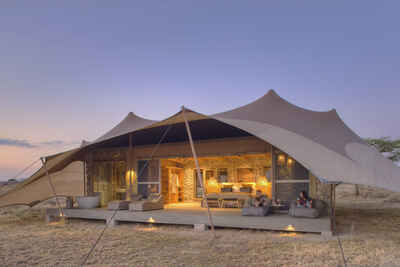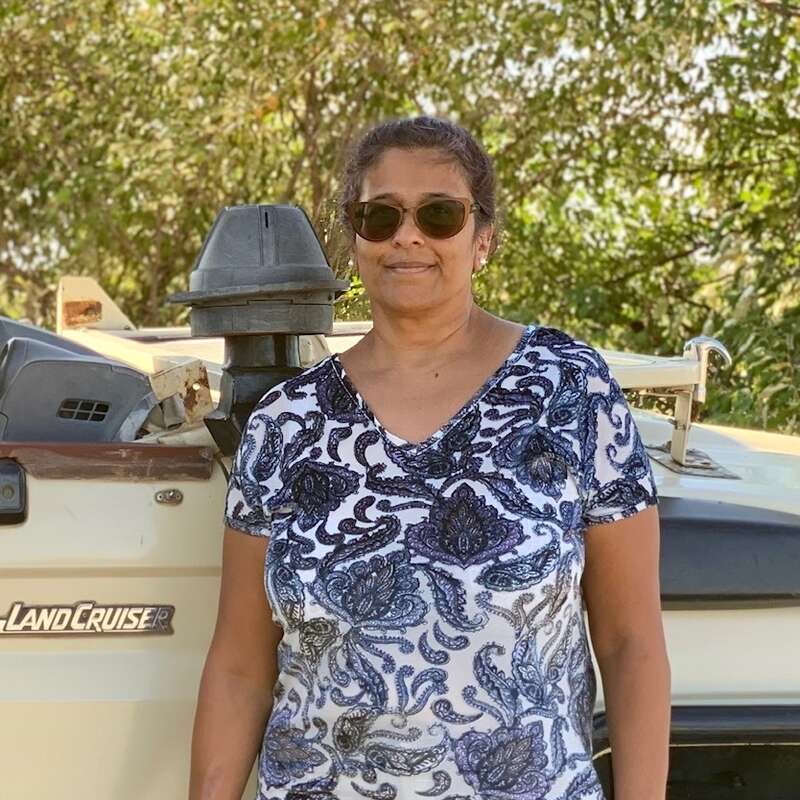About Namiri Plains Camp
Elegant, eco-friendly and with exquisite food, Namiri is one of the best places to stay in the Serengeti.
Namiri has undergone a radical transformation – for anyone who knew the camp in its first life, it would seem unrecognisable. A mix of stone walls, wood and creamy-coloured canvas, the main camp and spacious rooms are sophisticated but not at all stuffy, with a new swimming pool, sauna and 'den' housing a library and gift shop. The rooms have all the mod cons you could want – mini bar, hairdryer and even Wi-Fi – yet you'll still hear lions roaring at night and buffalo chomping grass, reminding you you're still deep in the bush. And dining here is a real pleasure, with plenty of variety, imagination and flavour in every meal.
The friendliness of the team and the location of course haven't changed. Still miles away from its nearest neighbour (about an hour's drive), you're far away from the madness of the Seronera region and can enjoy fabulous big cat sightings all to yourself. The guides are excellent and know all the histories of the lion and cheetah families. The rare melanistic serval that prowls the plains here is named Manja, after the Namiri guide who first spotted him.
Our view
Namiri Plains Camp is a special spot in the Serengeti. There's fantastic game viewing here but relatively few other visitors, which is very unusual in northern Tanzania. The tents, which are stylish and thoughtfully designed, really make an impact. Nothing distracts from the overwhelming feeling of wilderness, which is iconic Serengeti. However, Namiri is in high demand and comes with a top-end price tag, so it is worth planning and budgeting well in advance if you want to stay here.
Accommodation
11 tents
Children
Best for 12+
Open
All year
Activities

4WD Safari

Birdwatching

Cultural excursion

Hot air ballooning

Private activities
Traveller reviews of Namiri Plains Camp
47 real, un-edited reviews from Expert Africa's travellers.
Arrived 29 May 2025, 7 nights
"Namiri Plains Camp review"
Overall rating: Excellent
Arrived 31 Oct 2024, 3 nights
"Namiri Plains Camp review"
Overall rating: Excellent
Arrived 1 Nov 2024, 4 nights
"Namiri Plains Camp review"
Overall rating: Excellent
Arrived 4 Apr 2024, 4 nights
"Namiri Plains Camp review"
Overall rating: Excellent
Arrived 5 Mar 2024, 3 nights
"Namiri Plains Camp review"
Overall rating: Excellent
Arrived 8 Feb 2024, 4 nights
"Namiri Plains Camp review"
Overall rating: Excellent
Arrived 7 Nov 2023, 3 nights
"Namiri Plains Camp review"
Overall rating: Excellent
Arrived 30 Aug 2023, 5 nights
"Namiri Plains Camp review"
Overall rating: Excellent
Arrived 29 Jul 2023, 3 nights
"Namiri Plains Camp review"
Overall rating: Excellent
Arrived 28 Apr 2023, 3 nights
"Migration and cats!"
Overall rating: Excellent
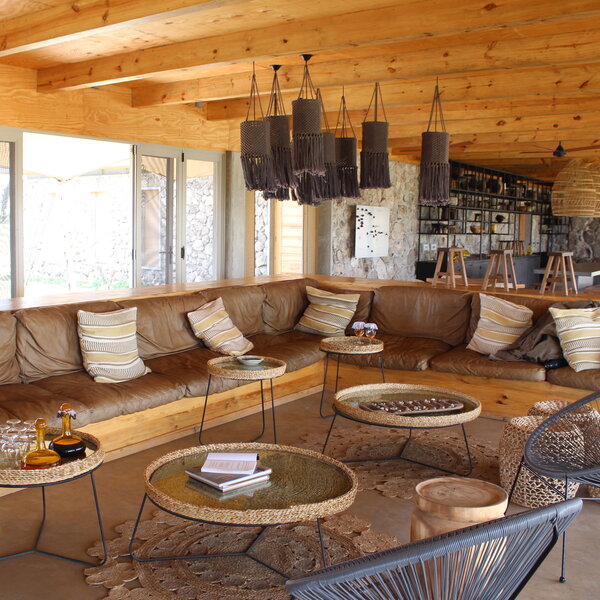
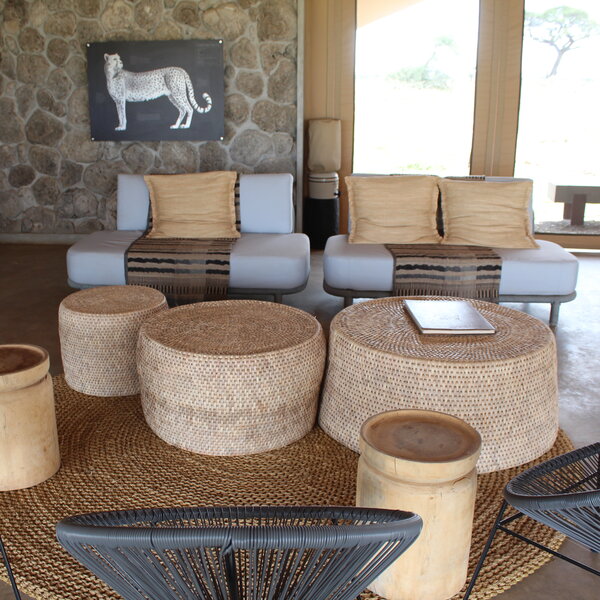
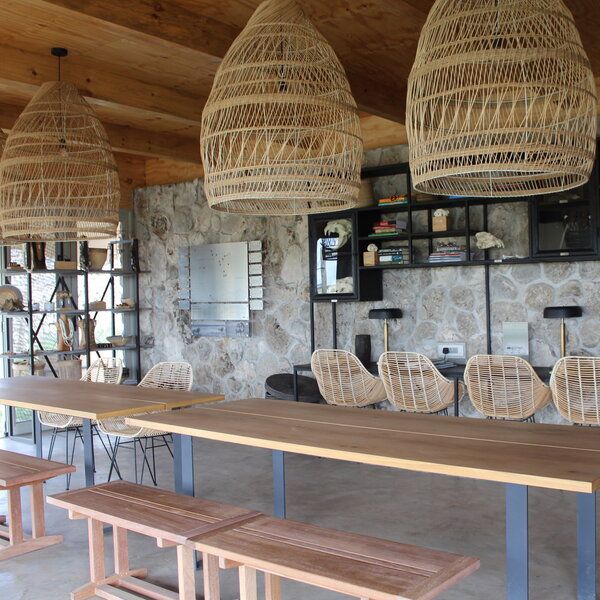
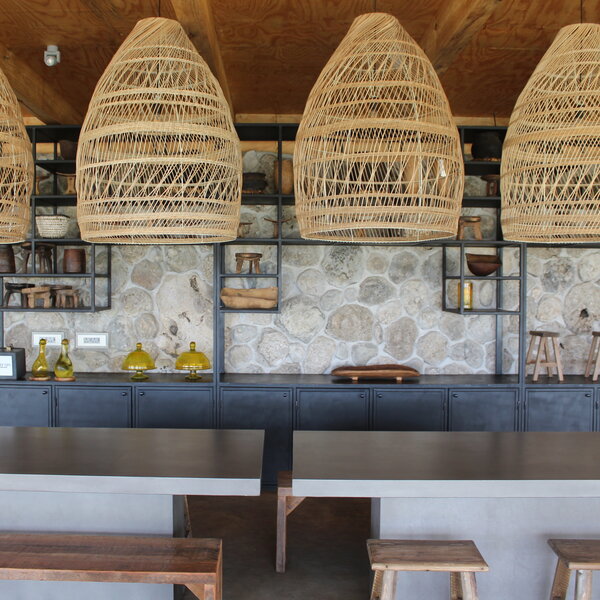
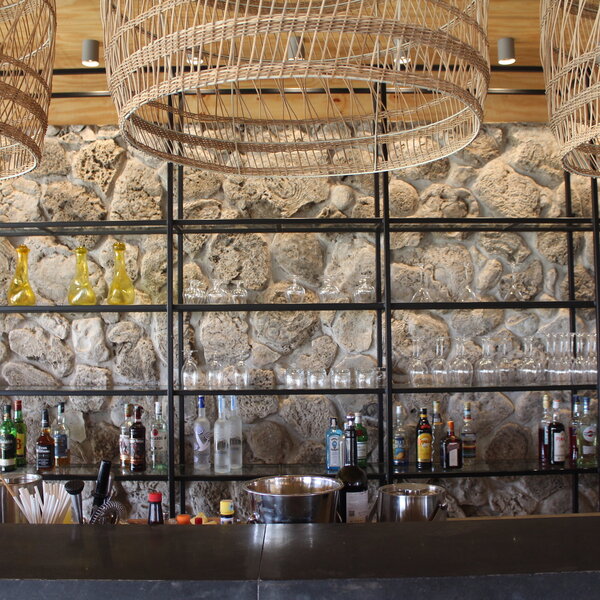
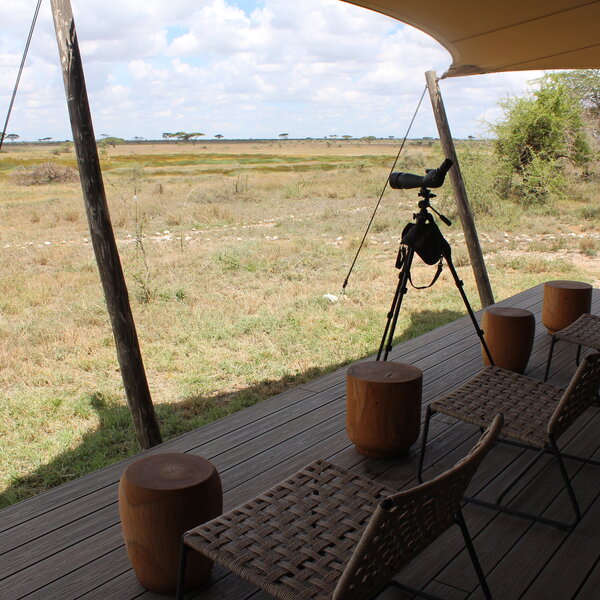
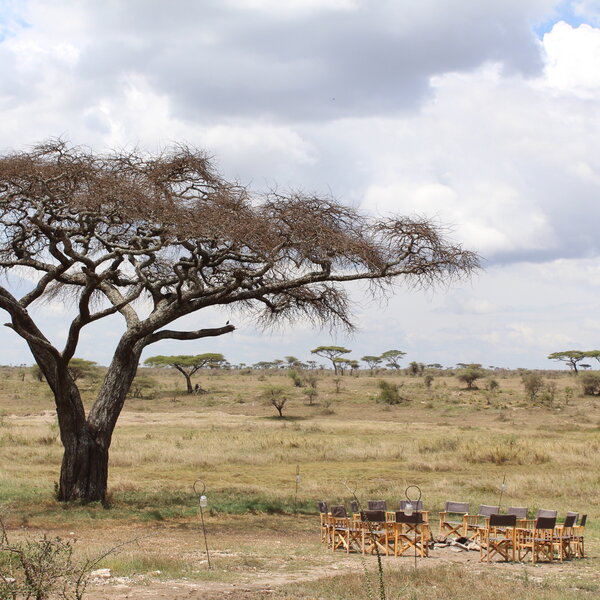
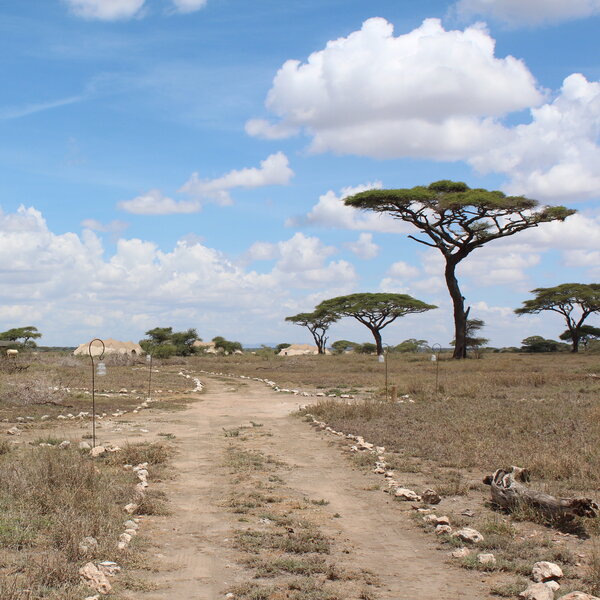
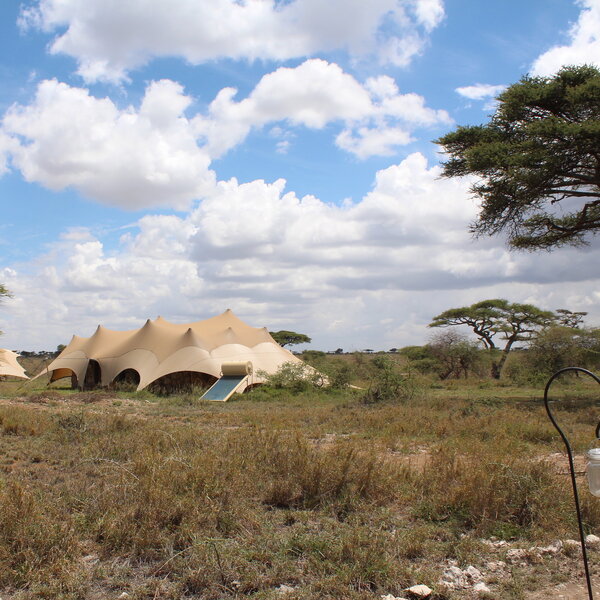
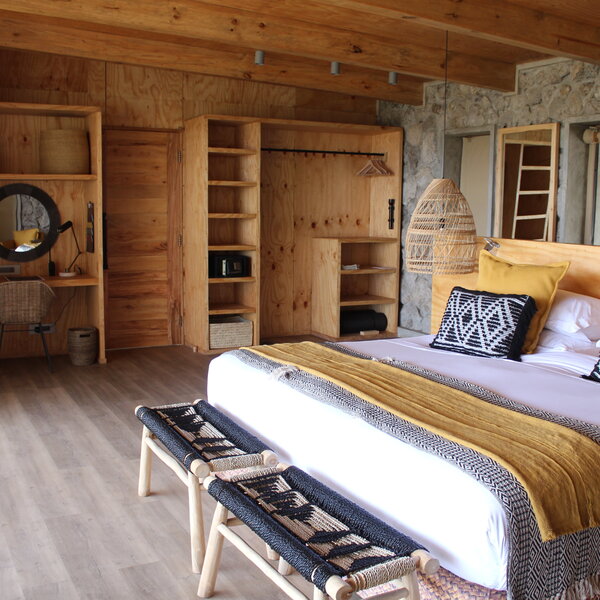
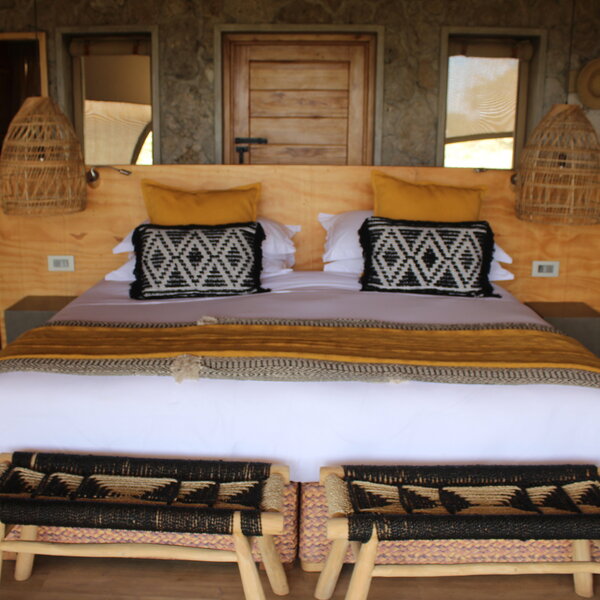
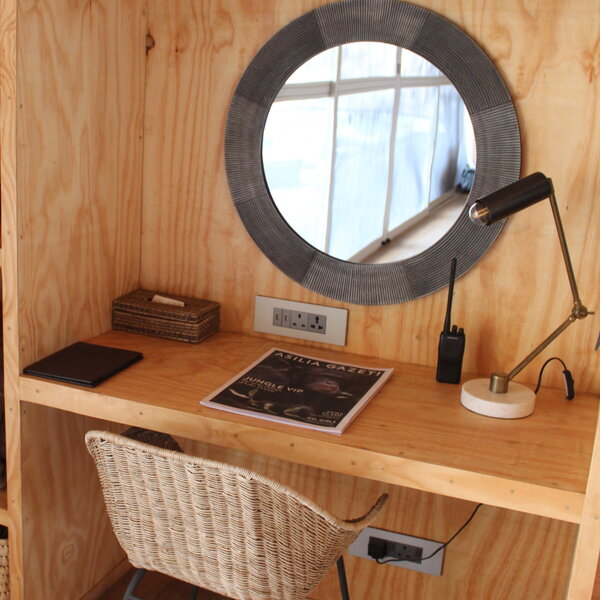
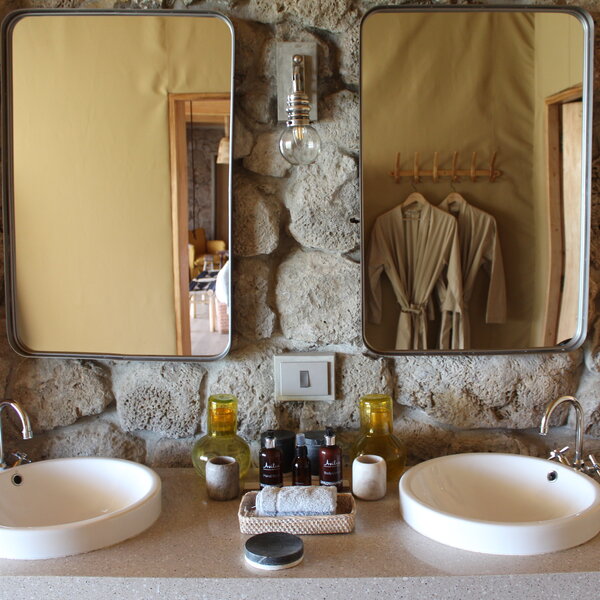
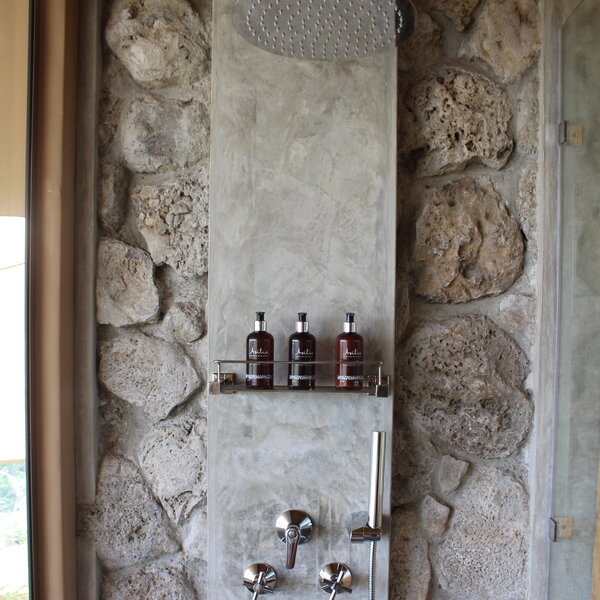
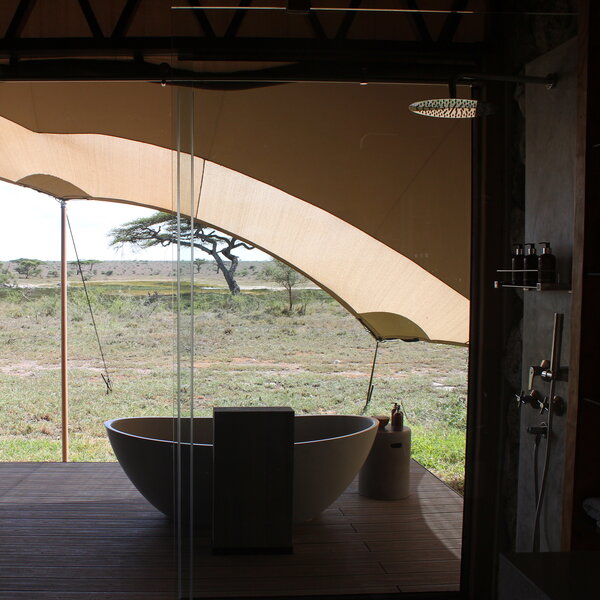
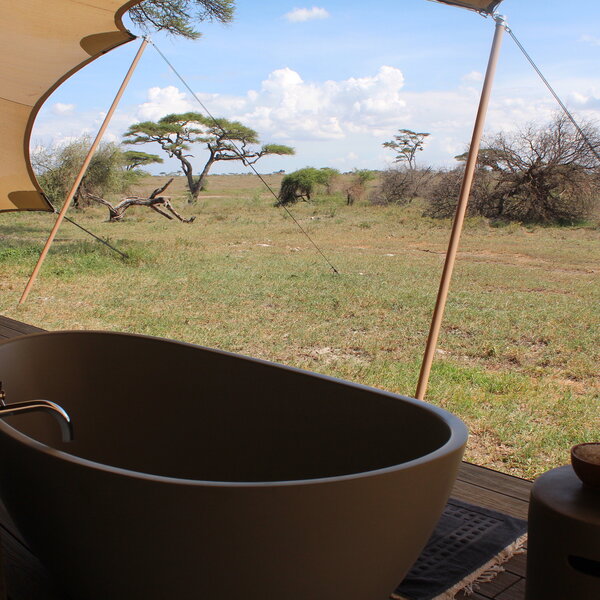
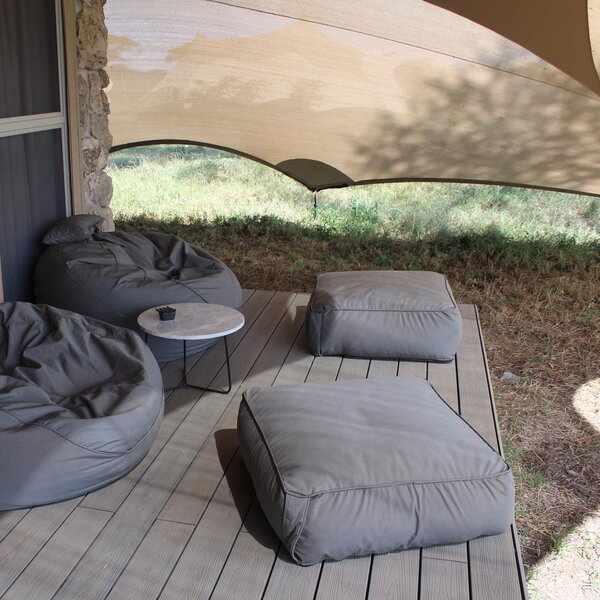
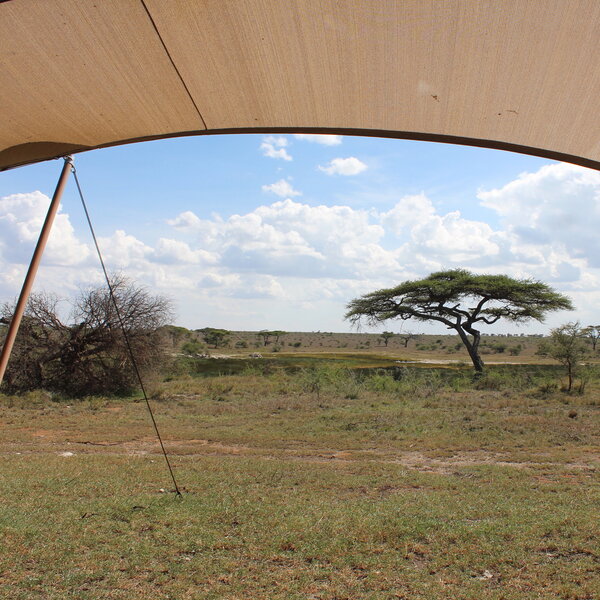
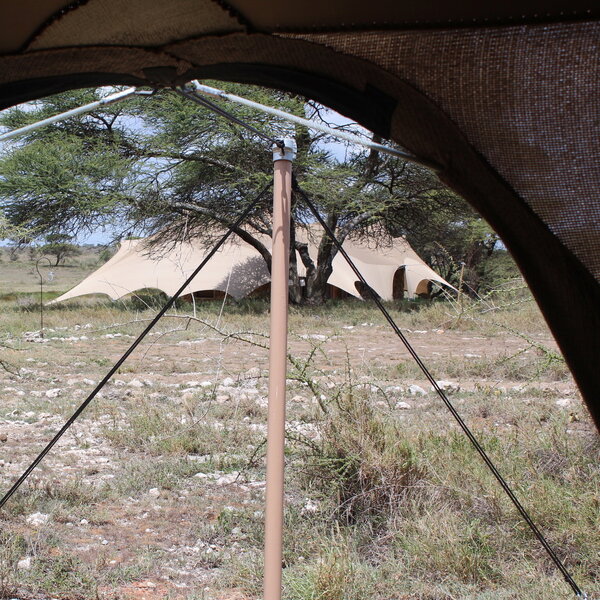
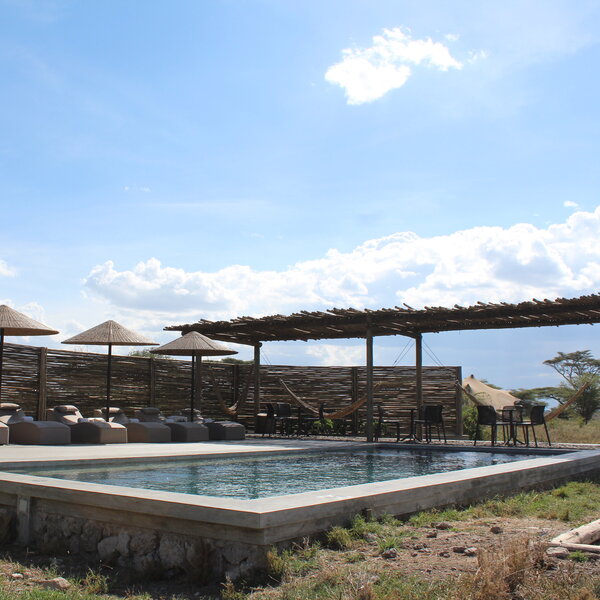
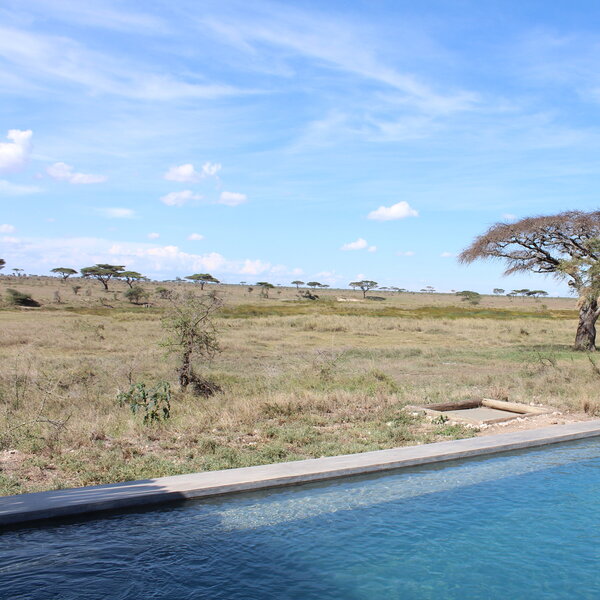
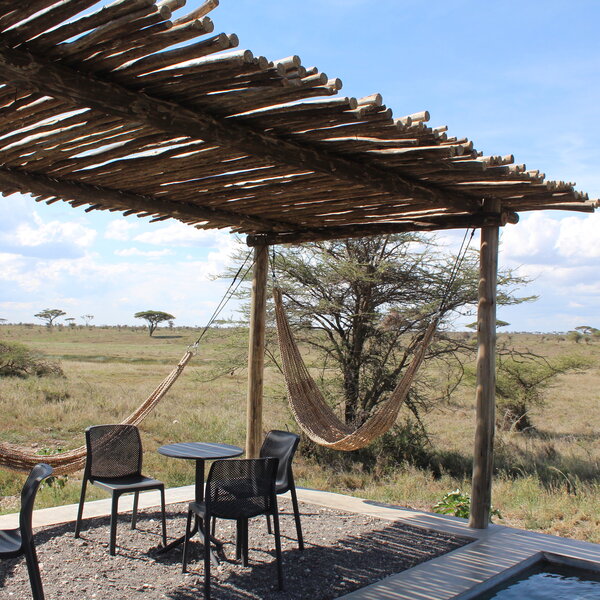
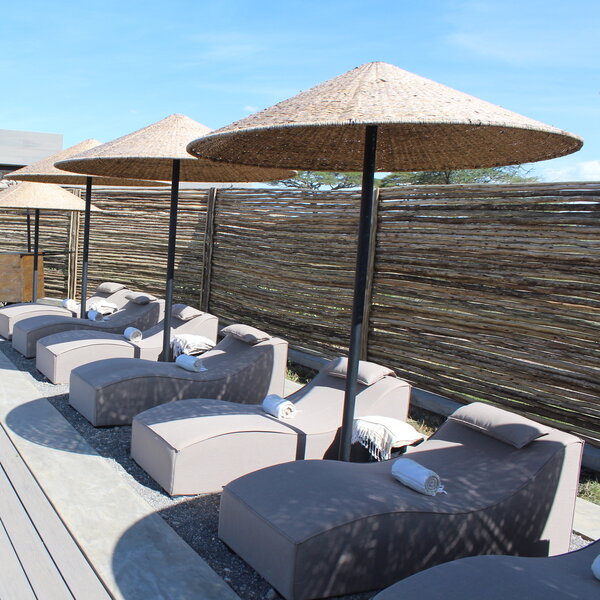
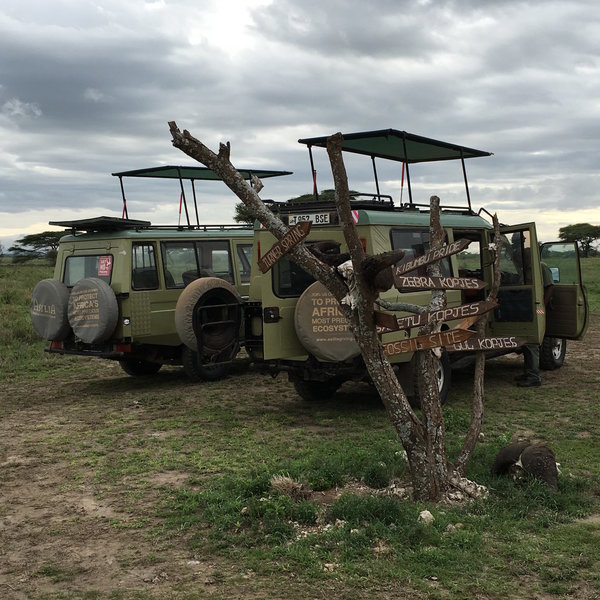

Expert Africa's gallery
When we travel we take lots of photos ourselves to give you a real and un-edited view of the safaris. See our 58 pictures of Namiri Plains Camp to get the candid view.
View gallerySafaris visiting Namiri Plains Camp
Just ideas, we'll always tailor-make a trip for you
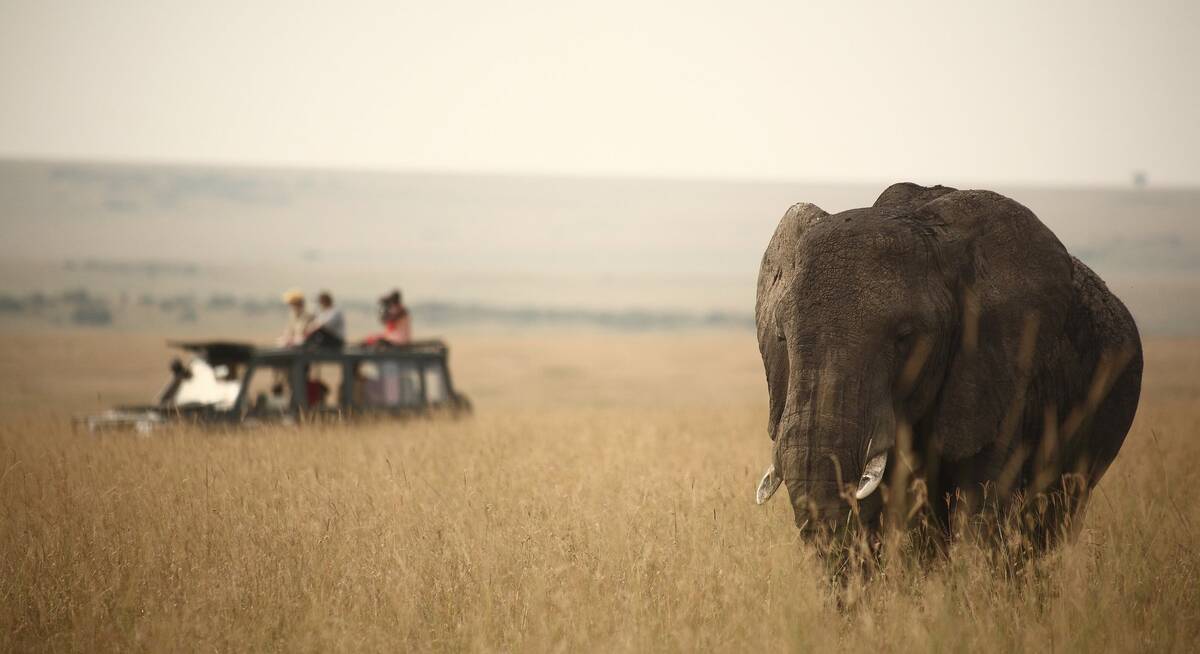
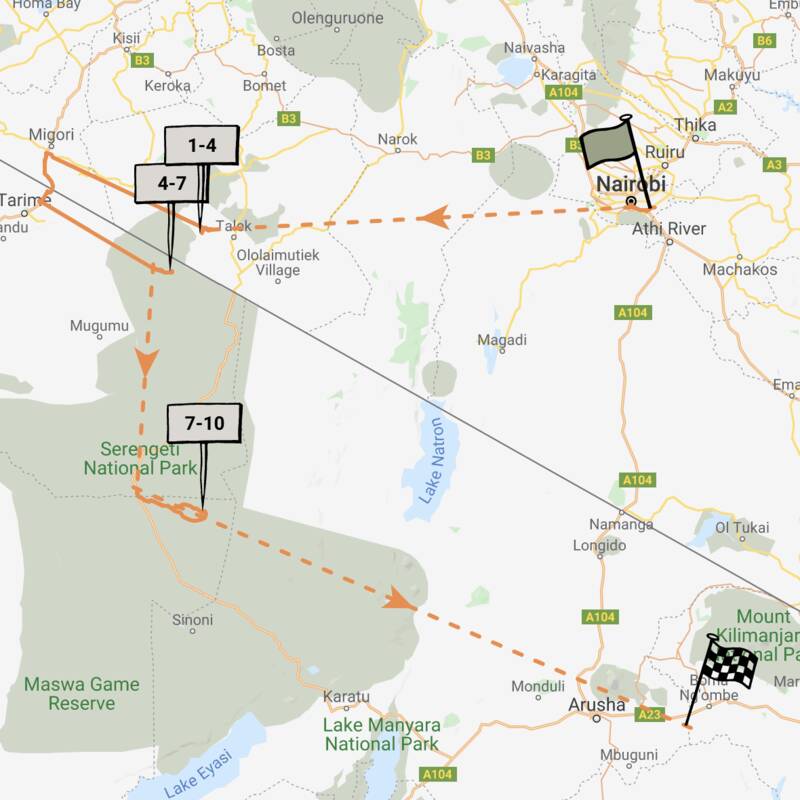
Martial Eagle Fly-in Safari
9 days • 3 locations • 2 country
NAIROBI AIRPORT TO KILIMANJARO AIRPORT
This stylish fly-in safari visits two of Africa’s most iconic parks, the Maasai Mara National Reserve in Kenya and Tanzania's Serengeti National Park.
Visiting Serengeti, Maasai Mara
US$12,720 - US$17,740 per person
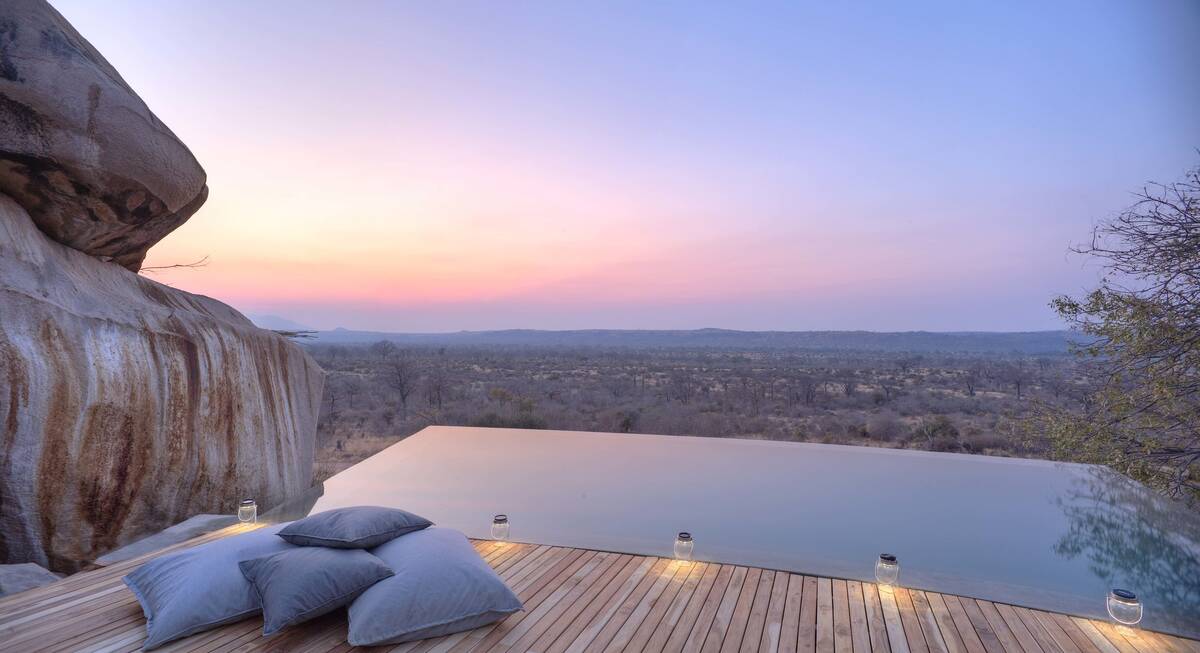
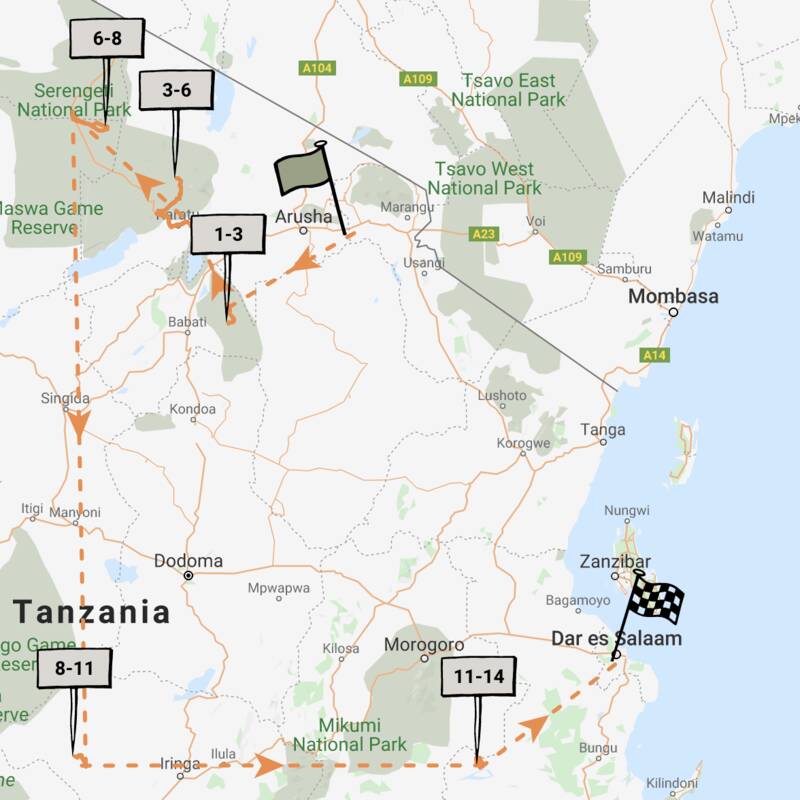
Marabou Stork Fly-in Safari
13 days • 5 locations • 1 country
KILIMANJARO AIRPORT TO DAR ES SALAAM AIRPORT
Four luxurious camps enable exploration of Tanzania’s north and southern regions. With a range of land- and water-based activities available throughout, decidedly comfortable accommodation and applicable long-stay discounts, this adventurous safari is excellent value.
Visiting Tarangire, Serengeti and 3 other areas
US$19,410 - US$25,560 per person
Namiri Plains Camp: Our full report
Namiri Plains is located an hour and a half's drive due east from the game-rich core of the Serengeti – Seronera.
The camp first opened in 2014 in an area that for more than 20 years had been closed to the public. Previously this region had exclusively been used for cheetah conservation and the number of big cats found here – especially lion prides and cheetahs – is astonishing.
Namiri Plains is part of Asilia's ever-growing and impressive portfolio of properties, which includes other Expert Africa favourites such as Dunia, Olivers, The Highlands and Sayari . We've been working very closely with this safari company for many years, and there are certain standards that we have come to expect from them. Typically, Asilia build their safari properties in unique locations that ensure access to superb game-viewing areas; and they maintain a strong ethic towards conservation, sustainability and community enrichment. Namiri Plains is no different.
The area of Soit Le Motonyi (where Namiri Plains is located) was closed to tourists between 1985 and 2014. Soit Le Motonyi is a very important breeding site for cheetahs and is now said to have the highest density of cheetahs in East Africa. But it's not just cheetahs that guests can expect to see here. We have visited numerous times since the camp opened and have always been overwhelmed by how many lions we saw in such a short space of time. Leopard sightings are also surprisingly common. Namiri means 'big cat' in Swahili and it's a name that is particularly apt for this camp – this really is big-cat country
The landscape surrounding Namiri Plains is quintessentially Serengeti. Grassy plains stretch as far as the eye can see, interspersed by the occasional fever tree, acacia tree and rocky outcrop – and the best thing is that there's barely anyone else here. Namiri's nearest neighbours are 45 minutes’ drive away, and it's possible to stay here for a few nights and not see anyone other than those sharing the camp with you. The camp is up there are as one of the most isolated and secluded camps in the central Serengeti region.
Although the Seronera area is accessible from Namiri, game drives tend to be done in the surrounding Soit Le Motonyi area. This makes for a relatively remote and exclusive safari experience, something that is often hard to come by in the Serengeti. Although you can't guarantee having sightings to yourself, especially later in the day when vehicles often drive over from the central Serengeti, this area is far less busy than Seronera.
It is worth noting that while the game-viewing can be exceptional, there are currently very few game-drive routes around Namiri Plains and drivers are not permitted to go off-road. So although the camp has the use of a vast, game-rich area, much of it cannot be accessed. We are hopeful that Asilia and TANAPA (Tanzanian National Parks Authority) will come to an agreement soon to build a slightly increased road network that has minimal impact on the ecosystem.
Walking safaris are also an option, either in the early morning or afternoon; these are led by one of the walking guides from the camp, who are all certified by TANAPA. For groups of over eight people, two guides are required for safety reasons.
The camp underwent a complete rebuild in 2019 and reopened as a contemporary, luxury safari camp – worlds away from its traditional tented beginnings. The camp is now made up of a series of futuristic tented structures, with a large main area and guest tents set along a small stream.
The camp is approached past the large staff camp and guests arrive to the expansive lounge and dining area. With a multitude of comfy seating options, an inviting bar, and large deck, this area is a lovely spot to drink, dine and enjoy the views – frequently featuring lion, buffalo, giraffe and other wildlife. A neutral, earthy colour palette, plus the use of lots of natural materials, and a mix of contemporary and traditional art, make for a very stylish, eye-catching space that is still harmonious with its environment.
The main areas are also include a curio shop, with rather smart offerings in comparison to many other camps, and an information and media area. Here you can learn about this part of the Serengeti, as well as some of the area’s famous individual cats. There are charging points and desks if you want to catch up on work or look at your safari photos. Just beyond these areas, there is the unheated swimming pool and outdoor lounge area. It’s possible to spot wildlife from the pool itself, although the chilly temperature would be described as ‘refreshing’ at best.
Namiri Plains has eleven guests tents, including a family unit, spread either side of the main areas. With heavy stone walls and taut, multi-peaked cream canvas awnings, they are imposing structures and quite unlike any other tented camp we have seen in Tanzania.
In July 2023, Namiri Plains opened their latest addition; Namiri Retreats, two decedent private villas with a private main area and swimming pool. The design and style of the two villas echo the main lodge, offering a more exclusive experience at Namiri, with private chefs, butlers and guide allocated to the villas.
The tents are reasonably private and don’t overlook each other, but some are a little too close together for our liking. As the distance between the main areas and furthest tents is a reasonable walk, there is an amusing solution: the so-called ‘Zebra Uber’. This flamboyantly-striped 4X4 shuttles guests who have trouble walking to their tents, and is sometimes used in the evenings after dinner when the presence of big cats in the area around camp makes a drive more sensible than a walk.
Once inside the tents, the contemporary décor is a continuation of the style in the main areas, with brown, grey, cream and splashes of mustard yellow. It’s simple but not dull. A key feature of each tent is the floor-to-ceiling window that forms one whole side, with safari-appropriate insect mesh covering the sliding doors. There’s a large deck with lounge cushions and, rather unexpectedly, a free-standing outdoor bath. The stylish en-suite bathroom is luxuriously fitted and there’s an indoor shower as well as the bath. The practicalities have been well thought-out, too, with nice toiletries, bathrobes, an electronic safe, flashlight, radio walkie-talkie, insect spray, umbrellas and boots all provided. It's the perfect balance of comfort, necessity and luxury.
Activities
4WD Safari
Birdwatching
Cultural excursion
Hot air ballooning
Private activities
Families & children
- Attitude towards children
- Children are welcome at Namiri Plains.
- Property’s age restrictions
- There is a minimum age of 5.
- Special activities & services
- Children are their parents’ responsibility but when possible, members of staff can look out for them and keep them entertained.
- Equipment
- There are cots and chairs suitable for children.
- Generally recommended for children
- While the staff are very friendly and welcome children, we feel that the wild, remote nature of the camp and high-end design is best suited to more mature children who can enjoy the safari, but not become restless during the long breaks and not fear the camp's close proximity to big game.
- Notes
- The camp is unfenced and quite spread out; elephant, buffalo and big cats are all found nearby so supervision is required at all times.
Food & drink
- Usual board basis
- Full Board & Activities
- Food quality
- The food at Namiri Plains never disappoints and is excellent. We found the mealtime service – and service throughout the camp – to be friendly and attentive, which felt very natural, welcoming and was a highlight of our stay. The standard and presentation of dishes is consistently good here.
Breakfast is a buffet of cereals, fresh fruit and baked goods, followed by a cooked breakfast of your choice. If you’re doing an early game drive, a packed breakfast can be arranged. Out on the plains, we enjoyed bacon-and-egg sandwiches, sausages, French toast, fresh fruit, muffins and tea and coffee. Our guide obviously picked a popular spot, as a caracal had literally just dashed off when we stopped.
Lunch is a light selection of dishes served family-style to individual tables, eaten under the acacia trees or on the main deck. We had chicken and vegetable kebabs, with a selection of lovely salads and fresh bread. As an alternative to lunch in camp, you can also choose to take a picnic lunch with you on safari.
Dinner is three set courses, with each course offering an option of meats and vegetarian option in a generously portioned, family style platter. Dining is set around the main area in private individual tables. - Dining style
- Individual Tables
- Dining locations
- Indoor and Outdoor Dining
- Further dining info, including room service
- Room service is possible, if a private dinner on your deck is requested.
- Drinks included
- Drinks are included, apart from high end and specially imported wines and spirits, and champagne. Bottled drinking water is transported in.
Our travellers’ wildlife sightings from Namiri Plains Camp
Since mid-2018, many of our travellers who stayed at Namiri Plains Camp have kindly recorded their wildlife sightings and shared them with us. The results are below. Click an animal to see more, and here to see more on our methodology.

100% success

100% success

96% success

96% success

92% success

92% success

91% success

83% success

68% success

60% success

52% success

20% success

17% success

12% success

6% success

6% success

5% success

0% success
Getting there
- Location
- Serengeti Migration Area, Tanzania
- Ideal length of stay
- 3-4 nights
- Directions
- Namiri Plains is located in Soit Le Motonyi in the eastern Serengeti, about a 1.5-hour drive east of the Seronera Airstrip.
- Accessible by
- Fly-and-Transfer
Special interests
- Photography safaris
- There is a specialist photographic vehicle based at Namiri Plains with drop-down sides to allow photographers to lie down and get low-angle photographs and just the three swivel seats for full view and minimal disruption.
- See ideas for Photography safaris in Tanzania
- Wildlife safaris
- Namiri Plains is in a remote part of the central-eastern Serengeti, and is an excellent camp from which to see great numbers of big cats, specifically cheetah and lion.
- See ideas for Wildlife safaris in Tanzania
- Wellbeing retreats
- It is possible to organise in-tent relaxation massages at Namiri Plains.
- See ideas for Wellbeing retreats in Tanzania
- Luxury safaris
- Namiri has recently undergone a full refurbishment and reopened as a contemporary, luxury safari camp – worlds away from its traditional tented beginnings. The camp is now made up of a series of futuristic tented structures.
- See ideas for Luxury safaris in Tanzania
Communications
- Power supply notes
- There is a back-up generator so power is available 24 hours a day.
- Communications
- There is intermittent cellphone reception but there is a satellite phone and computer in camp for emergencies. WiFi is available in the guest tents.
- TV & radio
- There is a TV in the staff camp on which guests can watch major sporting fixtures.
- Water supply
- Borehole
- Water supply notes
- Water for showering and cooking is from a borehole north of the camp and bottled drinking water is trucked in from Arusha to decant to guests. The bathrooms are fully plumbed.
Health & safety
- Malarial protection recommended
- Yes
- Medical care
- There is a first-aid kit in camp and some members of staff are first-aid trained. A hotel about an hour's drive away at Seronera has a dispensary. For serious cases, the camp has links to the SATIB medical evacuation service.
- Dangerous animals
- High Risk
- Security measures
- The camp is unfenced but is guarded 24 hours a day. Guests are escorted to their rooms by askaris during the hours of darkness.
- Fire safety
- There is a fire break around the camp and fire extinguishers in the tents.
Useful info
- Disabled access
- On Request
- Laundry facilities
- Laundry is included in the rates and is line-dried, so is weather dependent. Ladies' underwear is excluded for cultural reasons but washing powder is provided in the tents for you to do your own.
- Money
- There are safes in the tents and a large safe in the office. The camp can exchange small amounts of US dollars, euros, pounds and Tanzanian shillings.
- Accepted payment on location
- Visa and Mastercard are accepted forms of payment, with no surcharge.
Plan and book your trip with Expert Africa
All of our trips are tailor-made, so we'll always adapt them to suit you. Talk to an Expert and let us plan and arrange your perfect trip.

Talk to an Expert
Call or email us now! We’ll match you with the Specialist in our team who is best suited to help you. Then together we can start planning your trip.

Set up your itinerary
Based on our experience and your ideas, your specialist will create a detailed, costed itinerary. We’ll refine it together, until we have a trip that you’re perfectly happy with.

Prepare for your trip
The same Specialist will make the seamless arrangements for your trip, send you detailed travel documents, and be available to answer any questions before you depart.

Travel with peace of mind
After you set off, you’ll be cared for by our partners in Africa, most of whom have worked with Expert Africa for decades. And if you ever need us urgently, we’re available 24/7.

When you return
We love to learn about your trip, and so will always be grateful if you’ve the time to give feedback to your Specialist when you return.
Namiri Plains Camp's location
Look closer at the environment and surroundings of Namiri Plains Camp.
Excursions from Namiri Plains Camp
Optional extra day-trips and excursions possible whilst you're staying at Namiri Plains Camp. Talk to us: these are usually best arranged before you go.
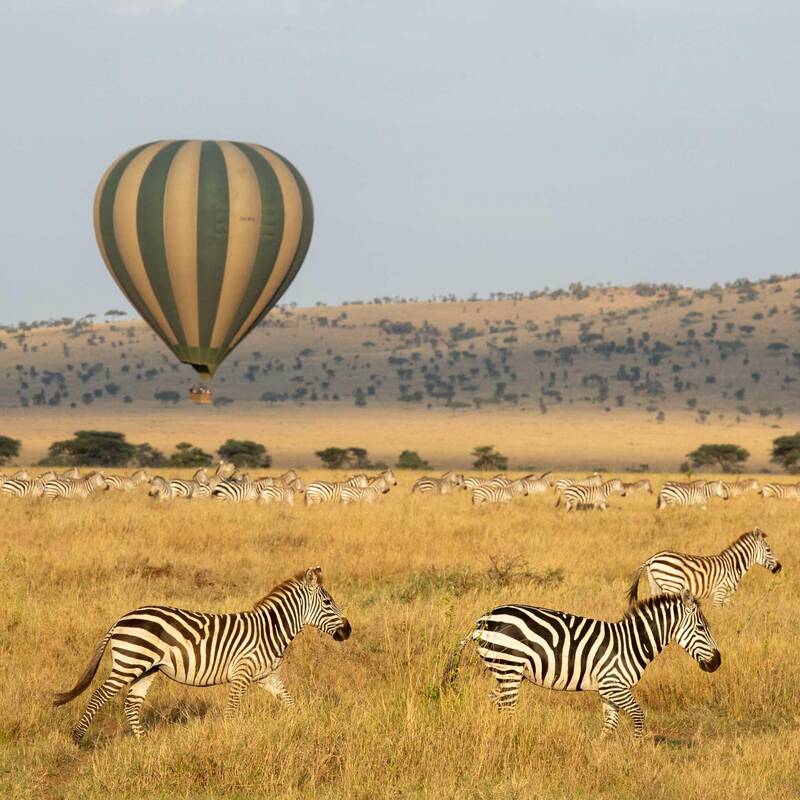
Balloon Safari over the Serengeti
Three hours - approx. one hour flight
As the sun rises over the Serengeti National Park in northern Tanzania, climb aboard for an extraordinary adventure. For an hour you’ll float in a hot air balloon over beautiful savannah and woodland and a diversity of plains wildlife.
More about Balloon SafariOther lodges in Serengeti Migration Area
Alternative places to stay in this same area.
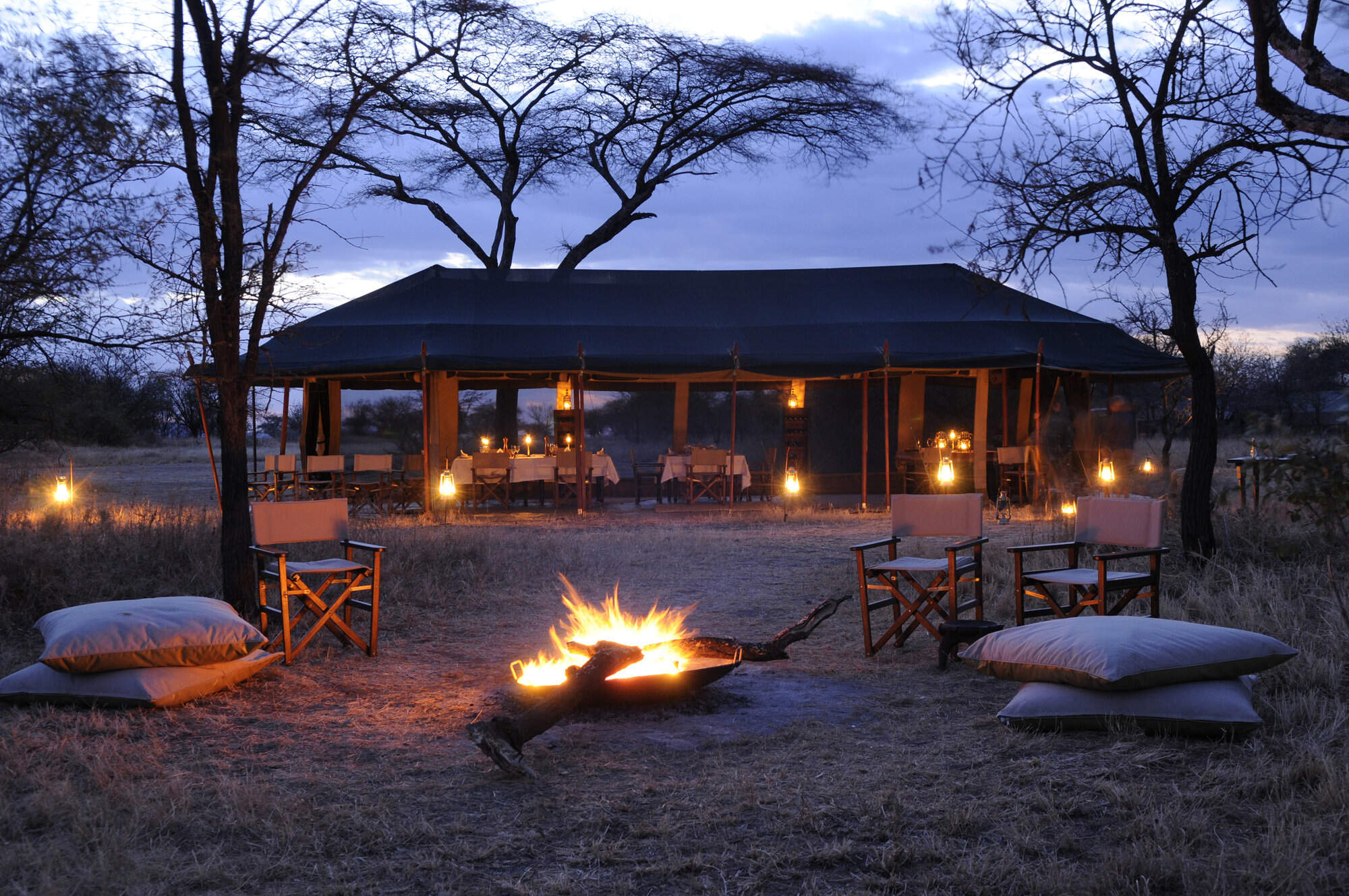
Olakira Camp
Comfortable, friendly and relaxed, Olakira Camp moves between the Mara River and the southern Ndutu area, in line with the wildebeest migration.
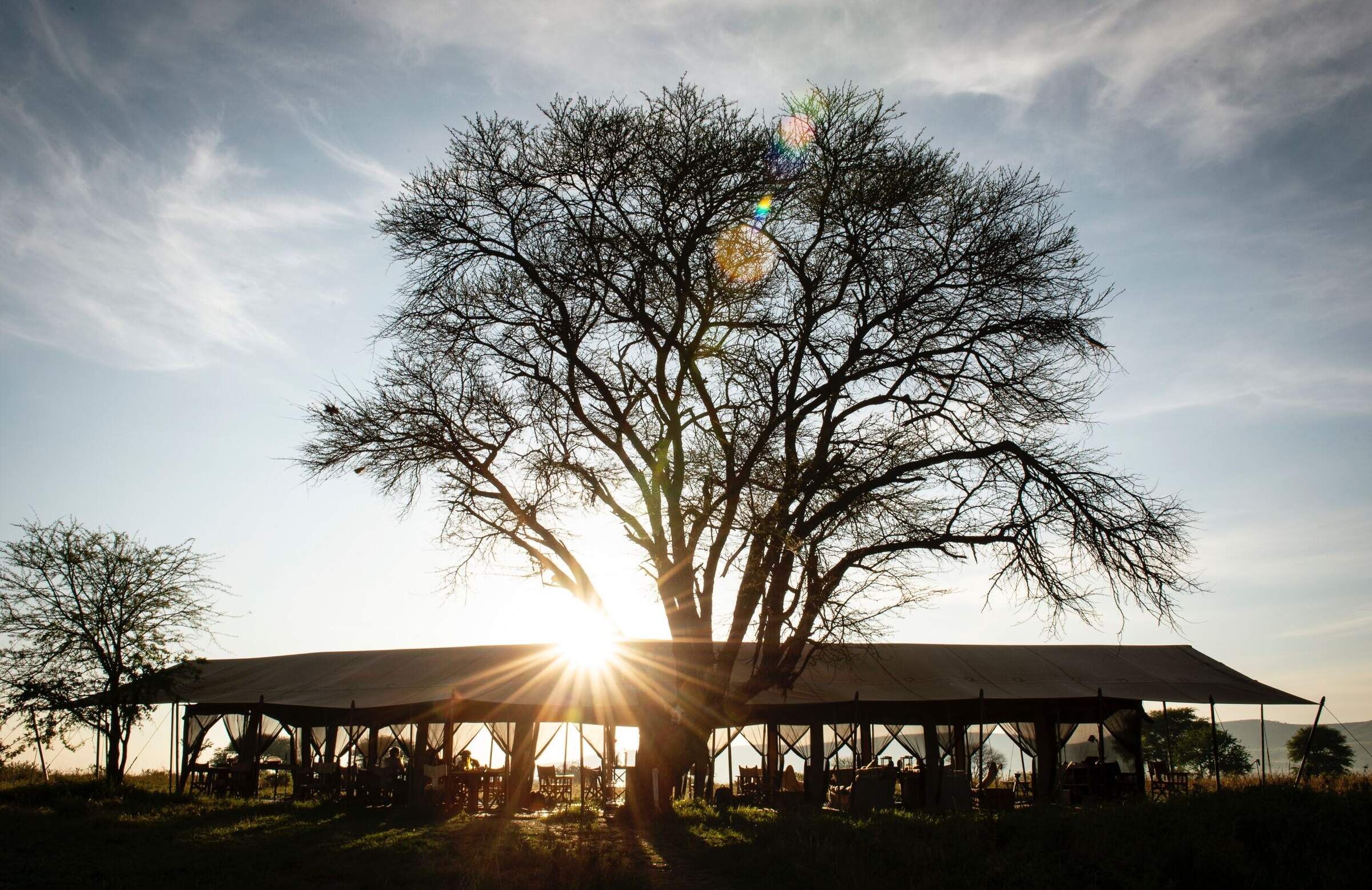
Nomad Serengeti Camp
Serengeti Safari Camp is a well-appointed tented camp that moves several times a year to follow the predicted path of the migration.
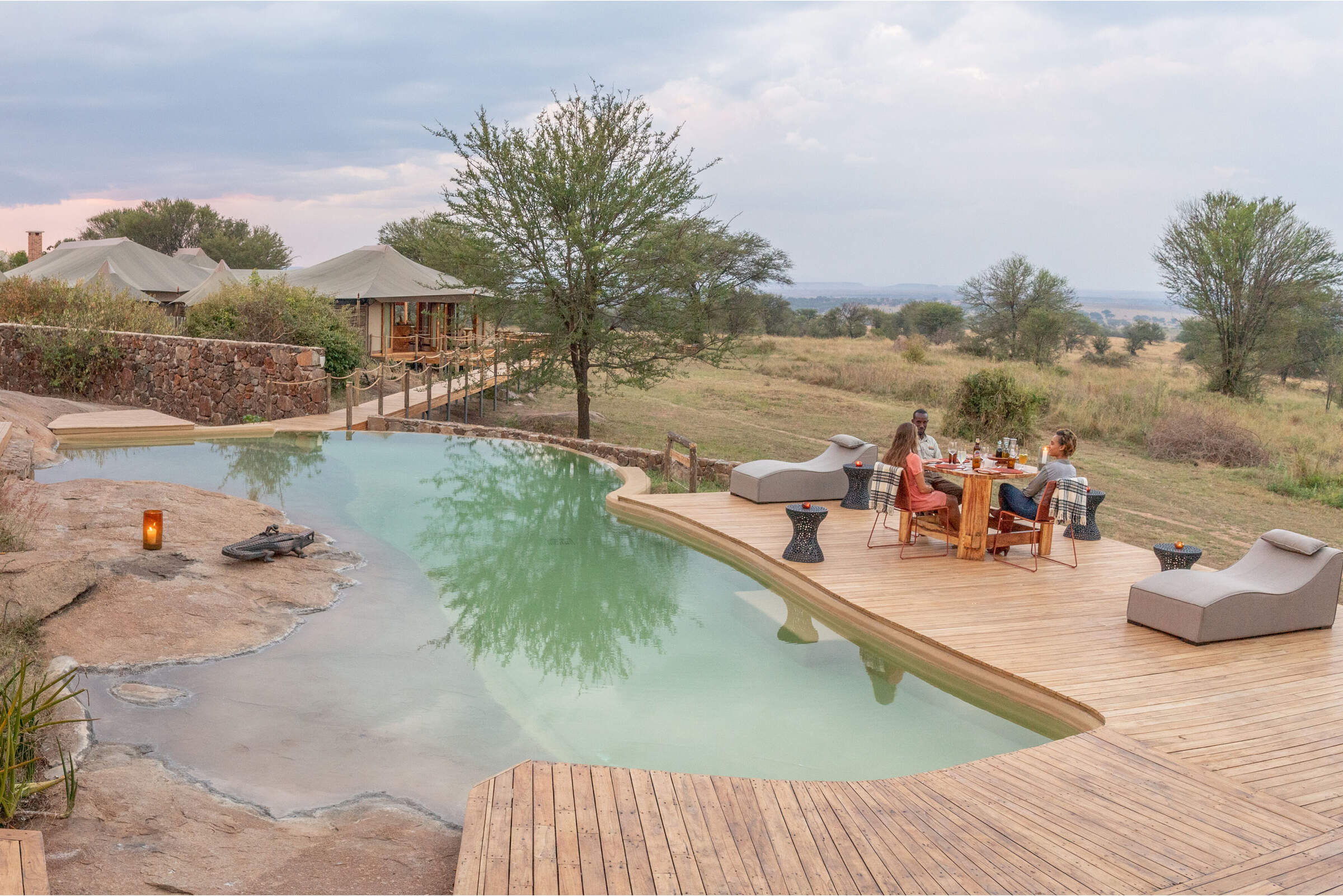
Sayari Camp
In the northern Serengeti, near the Mara River, luxurious Sayari Camp offers excellent wildife all year – boosted further by the wildebeest migration.
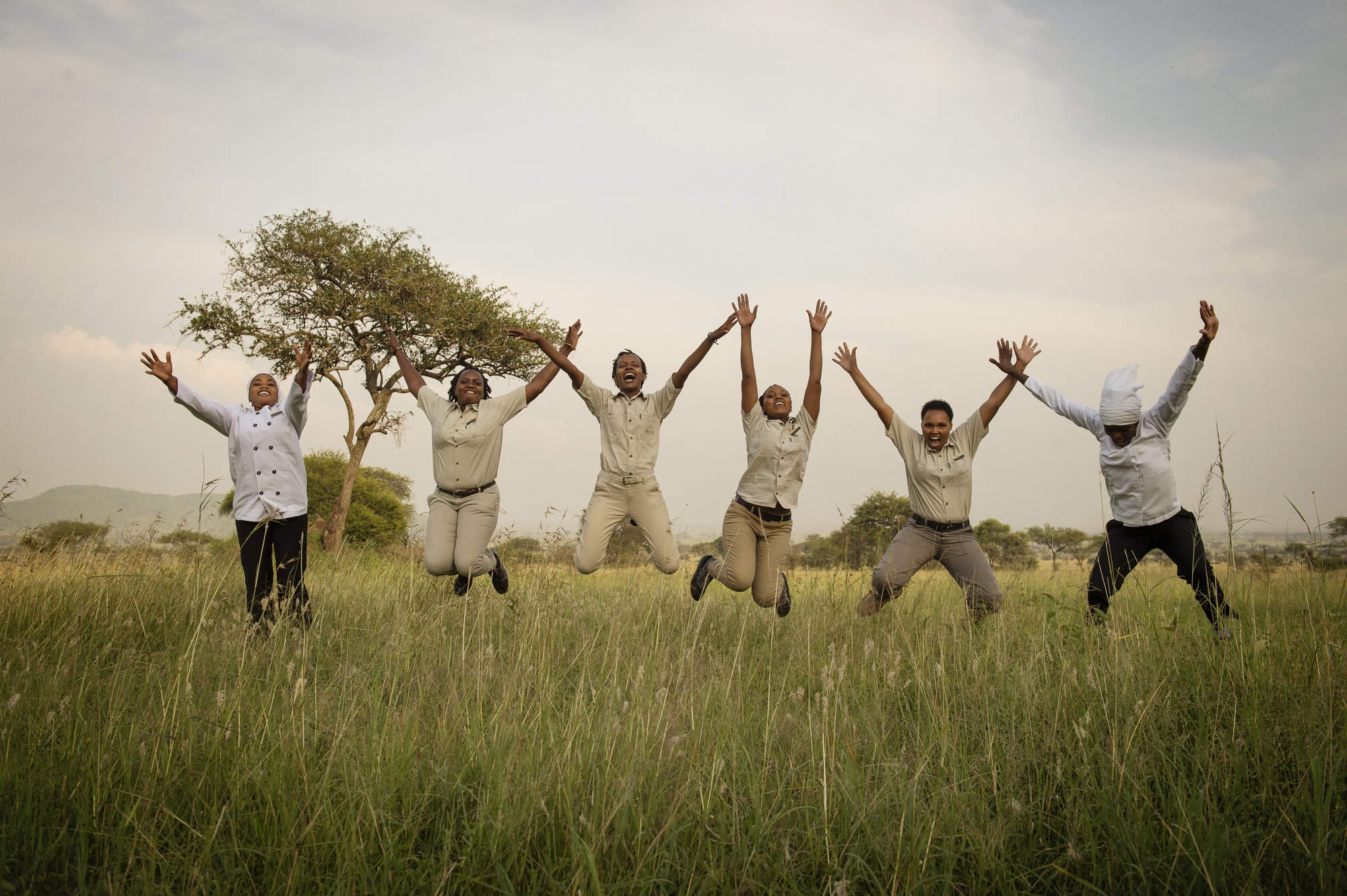
Dunia Camp
Dunia Camp is well located for the migration from December to March, and has excellent game viewing for the rest of the year.
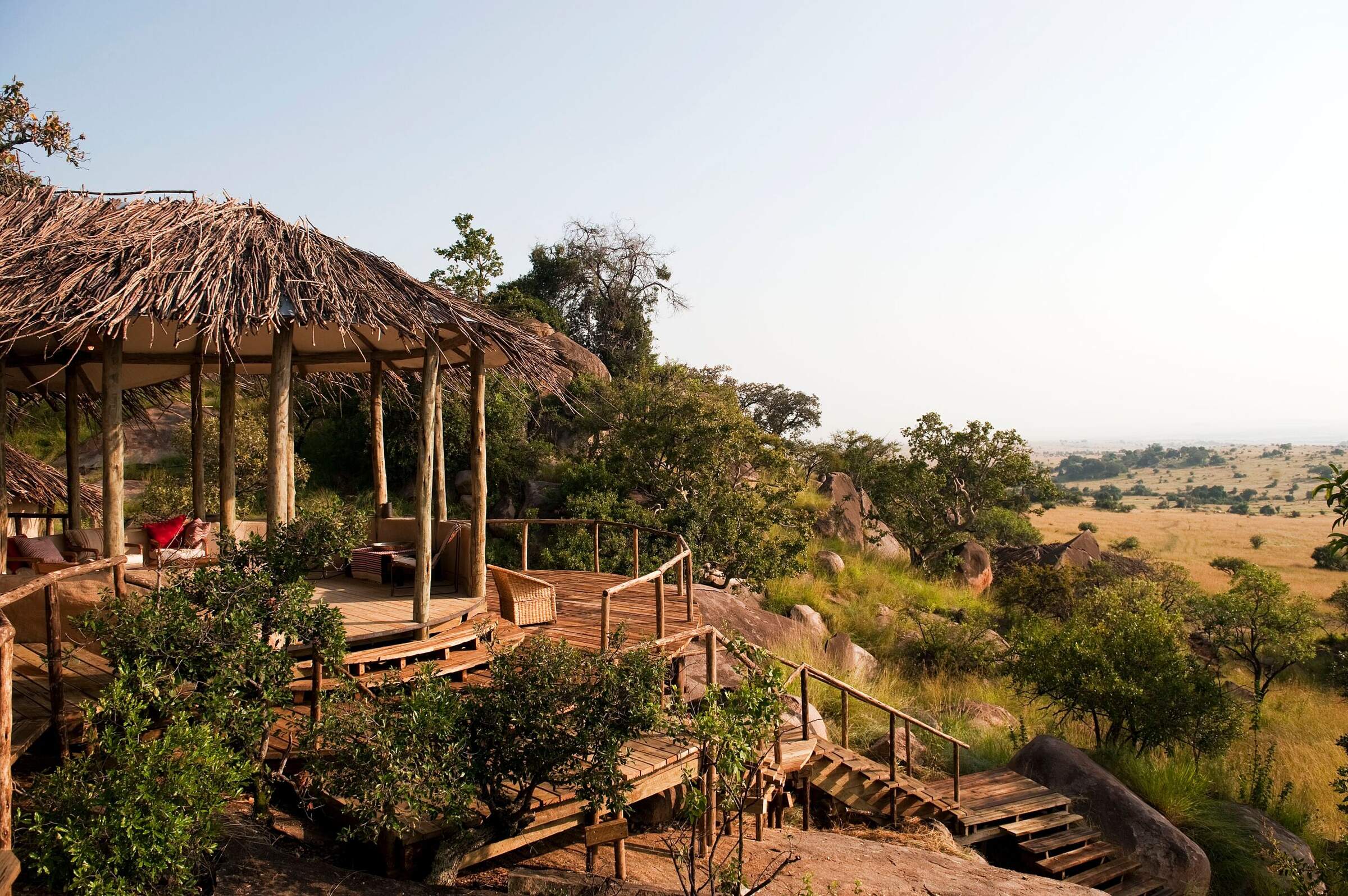
Lamai Serengeti
Set high in the kopjes with fantastic views, Lamai Serengeti offers top service and guiding and good migration sightings from Jul-Oct.
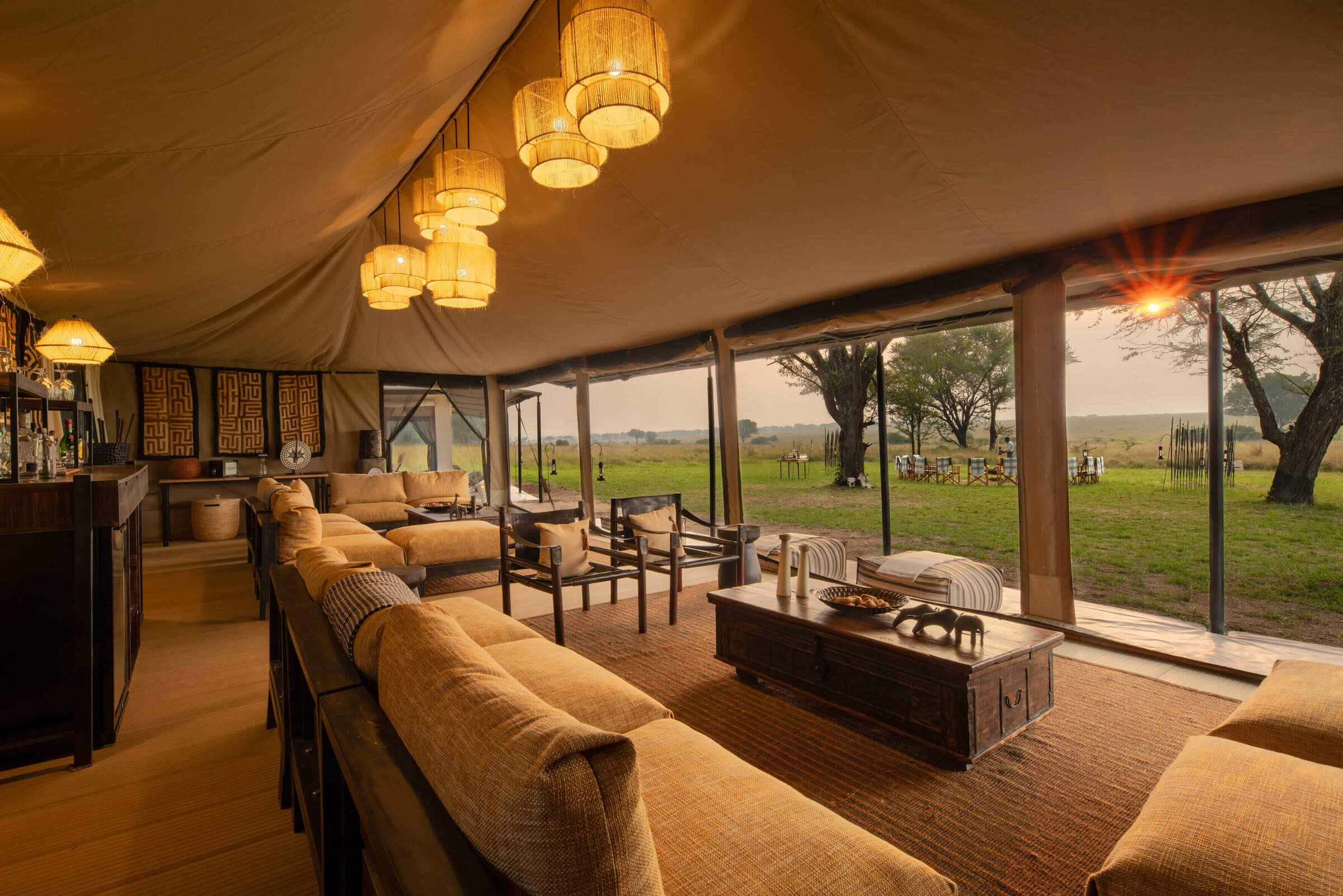
Ubuntu Camp
Ubuntu Camp has several locations in the Serengeti, following the wildebeest migration, so it is often in a great location to see the herds.
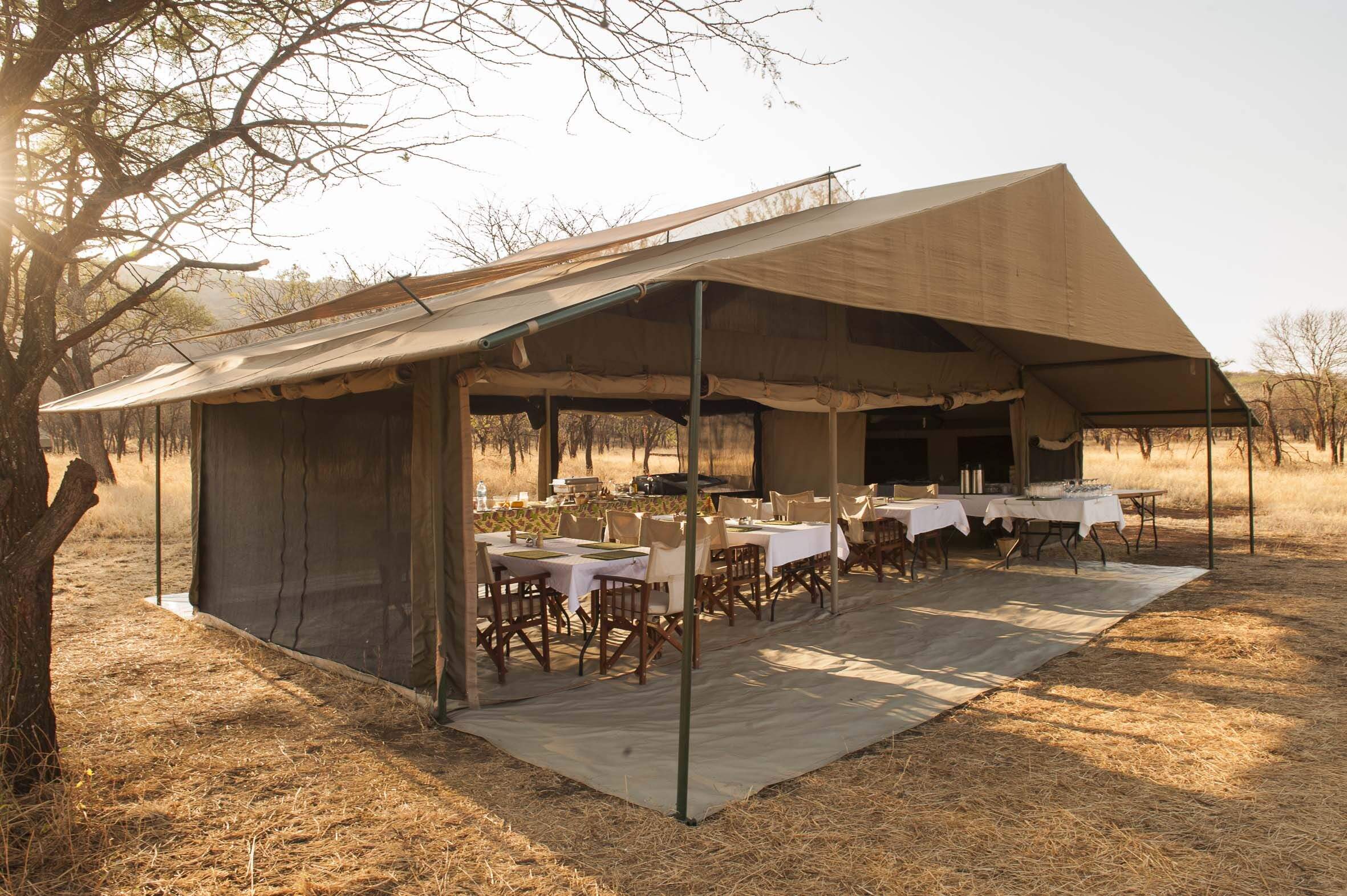
Kati Kati Camp
Kati Kati is a small, very simple bushcamp, which is well-positioned to explore the wildlife-rich Seronera area.
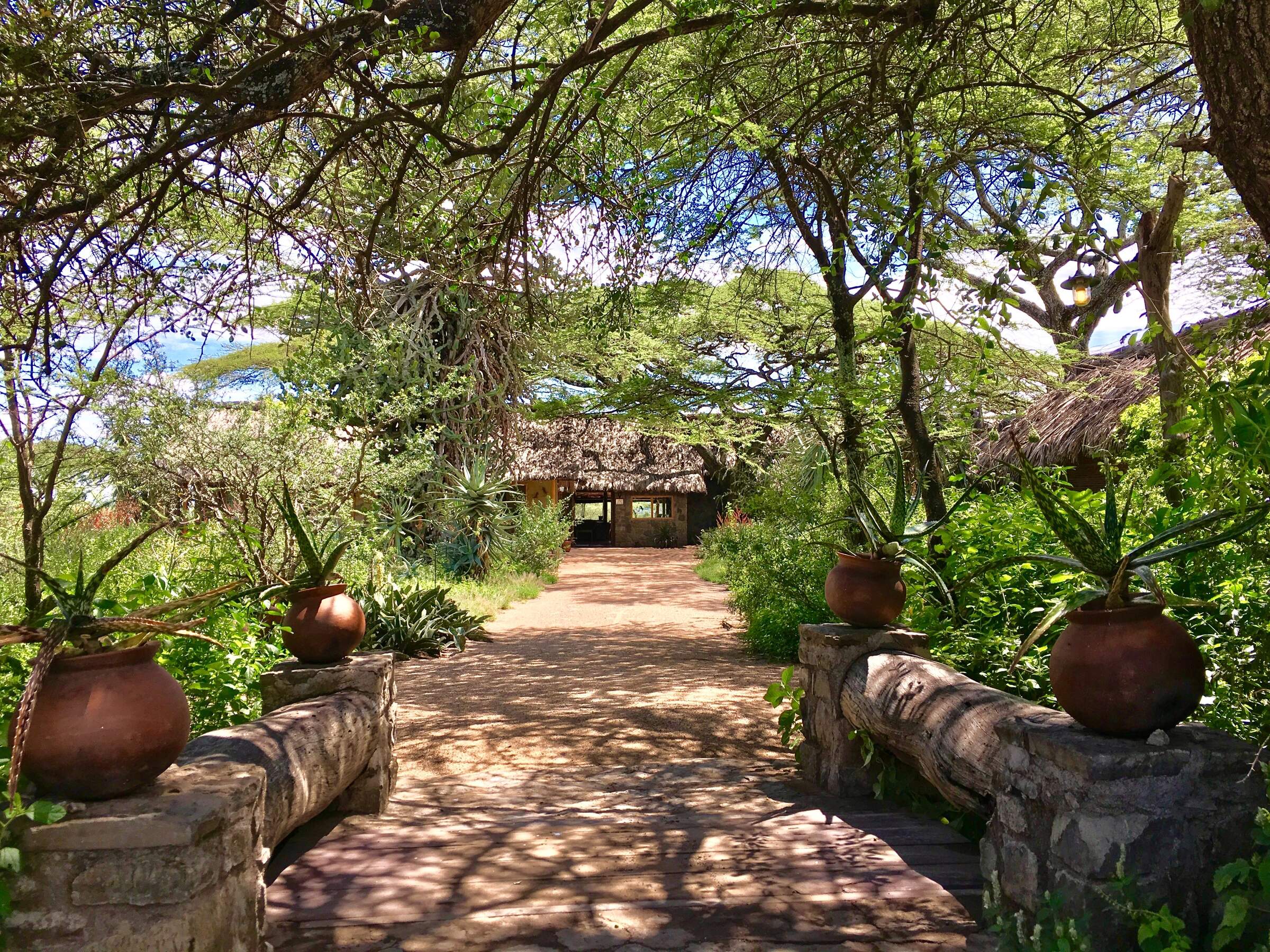
Ndutu Safari Lodge
Large and economical, but not luxurious, Ndutu Safari Lodge is well located in the southern Serengeti, so book early to get space.
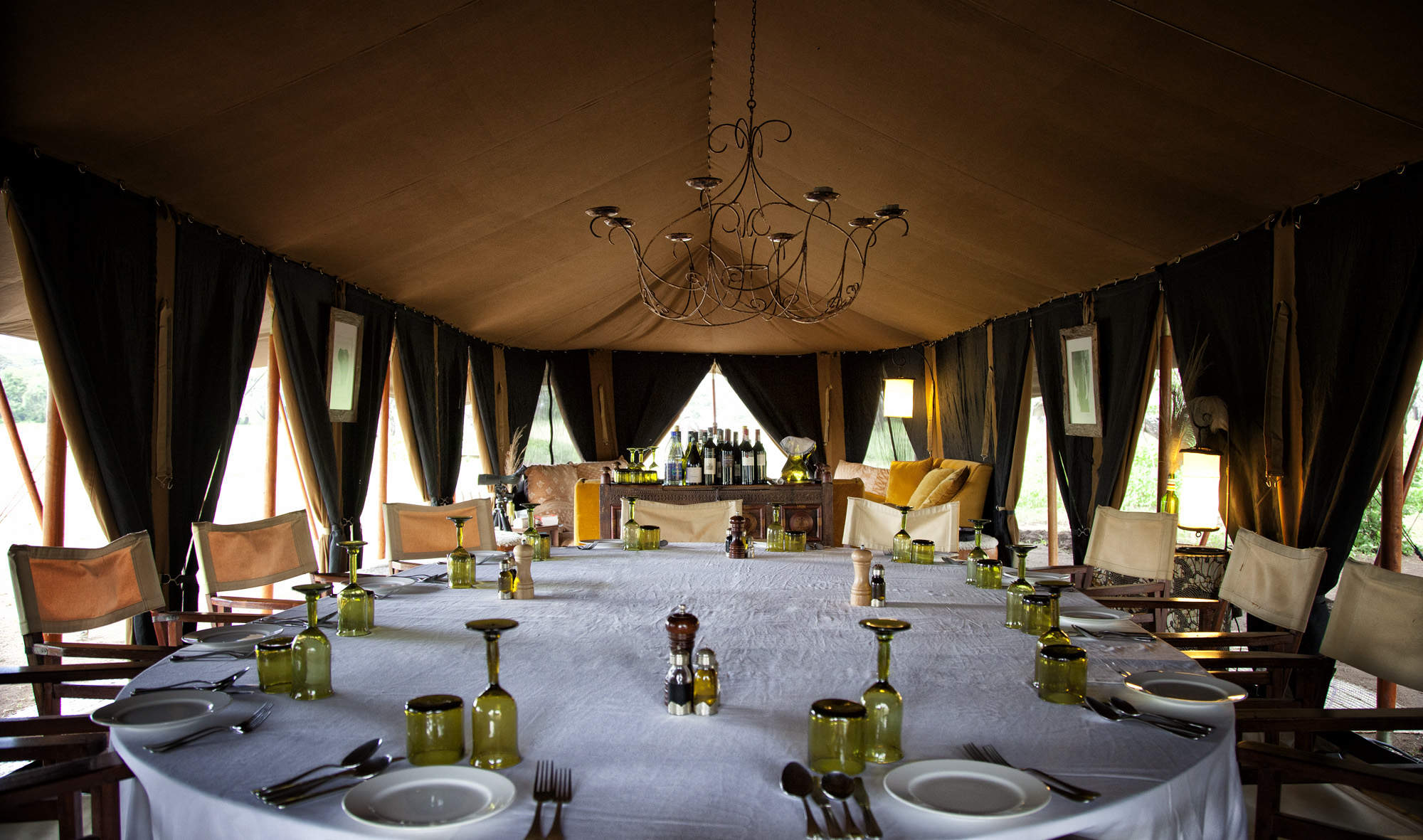
Serian Serengeti
Serian Serengeti is a mobile tented operation run by Alex Walker which moves between two locations following the wildebeest migration.
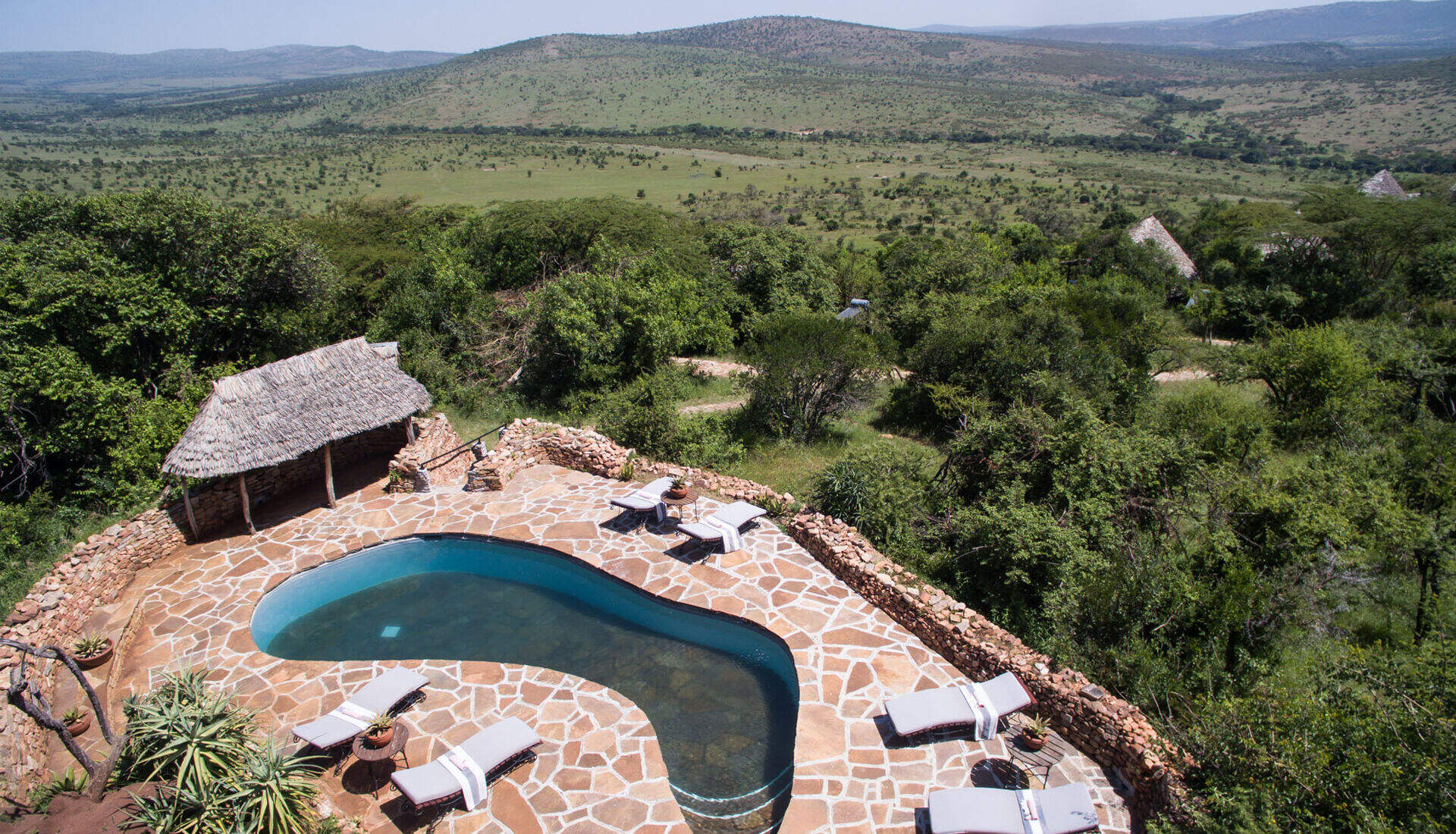
Klein's Camp
Klein's Camp, in a private area of the northern Serengeti, sets high standards. Activities include walks, nights drives and Maasai village visits.
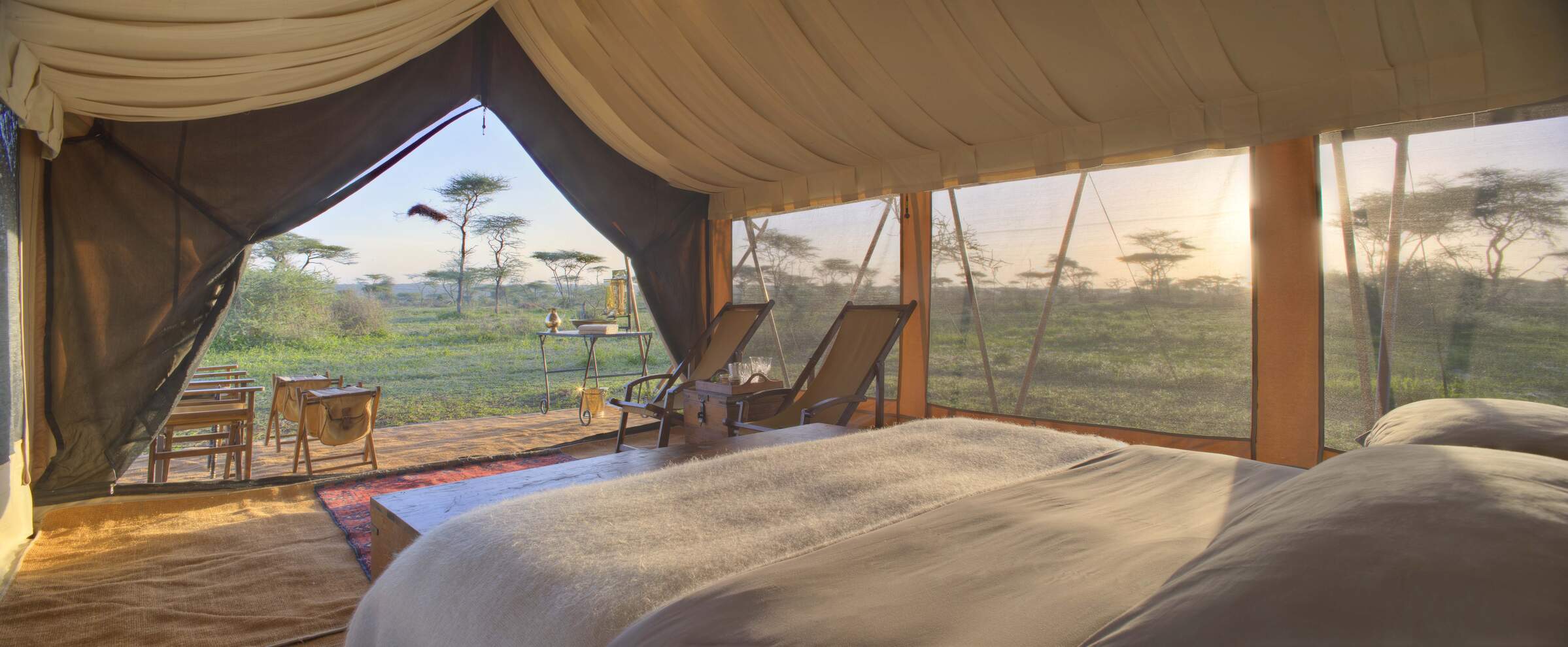
Serengeti under Canvas
Two of the three Serengeti under Canvas camps move through the Serengeti National Park every few months to follow the wildebeest migration.
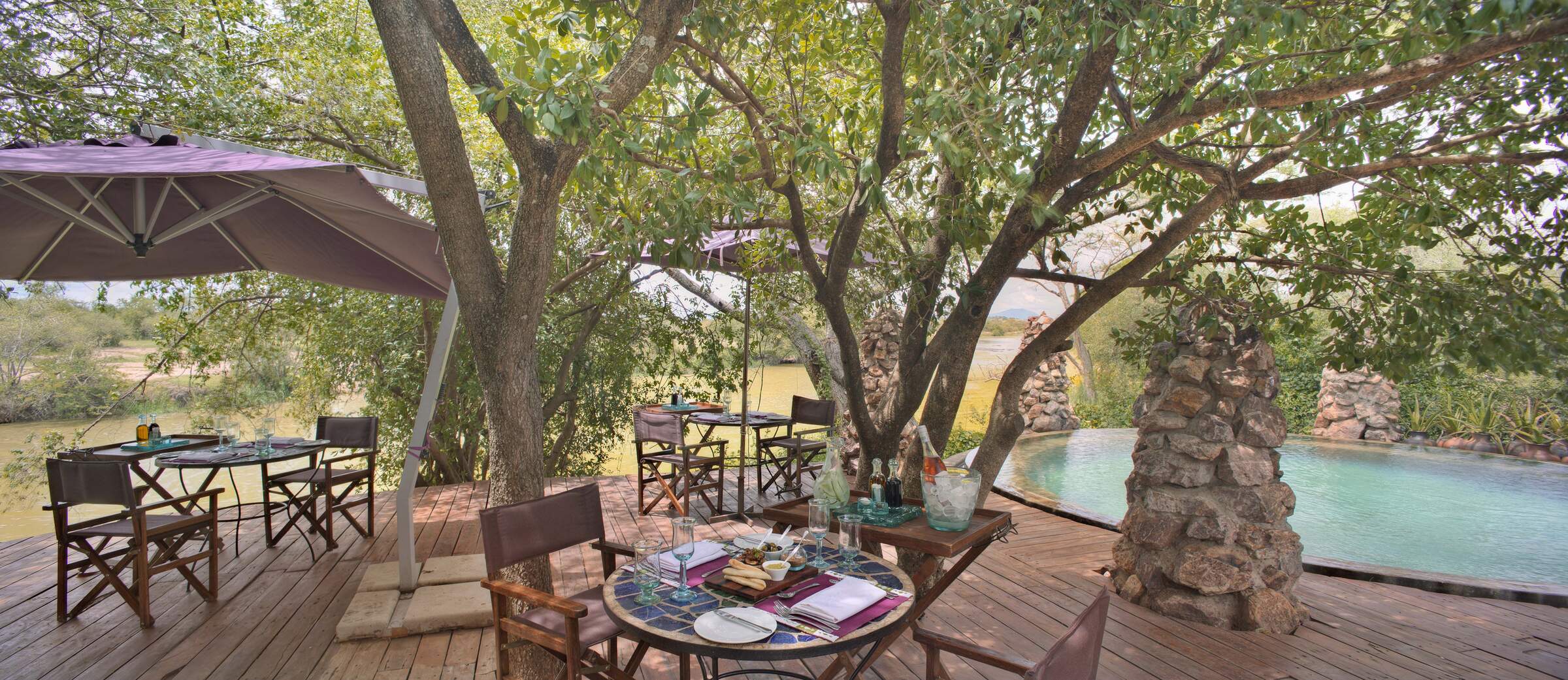
Grumeti River Camp
Grumeti River Camp offers a laid-back atmosphere combined with top service, first-rate food, expert guiding and an excellent location.
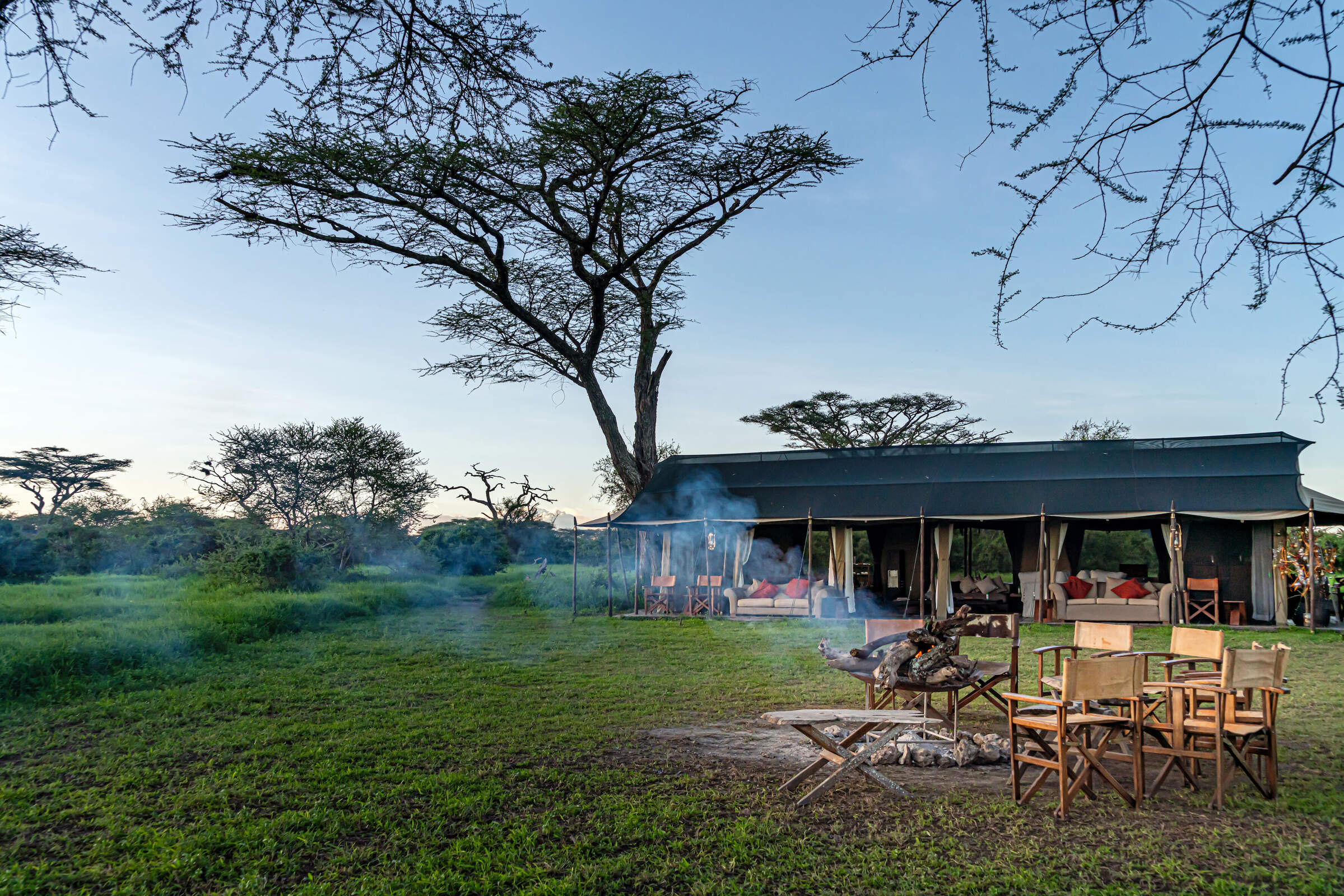
Lemala Mara-Ndutu
Lemala Mara-Ndutu is a semi-permanent camp that moves between the north and south of the Serengeti to witness the wildebeest migration.
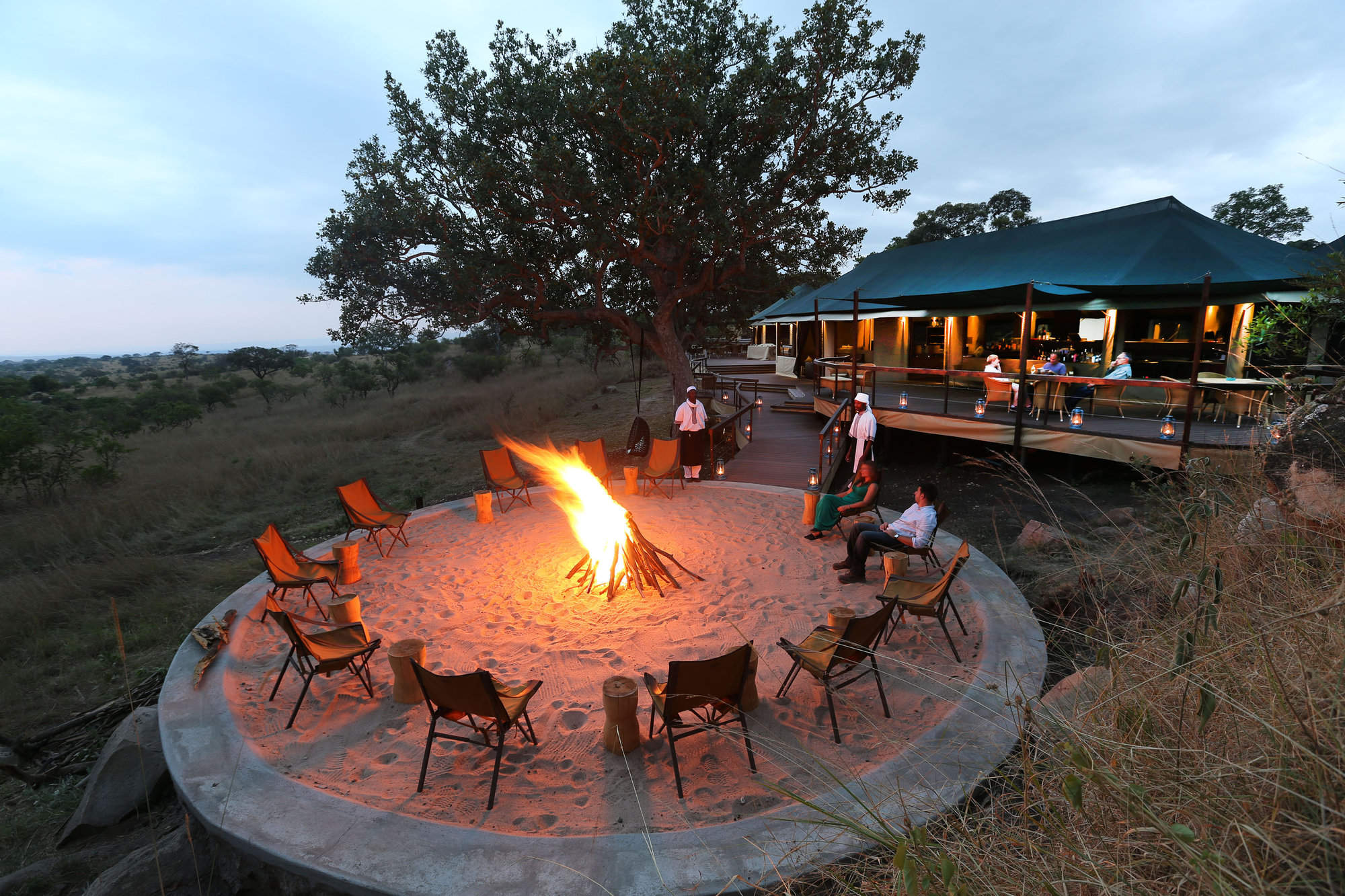
Lemala Kuria Hills
Lemala Kuria Hills is a luxury permanent camp that is ideally located for wildlife all year around, but especially during the wildebeest migration.
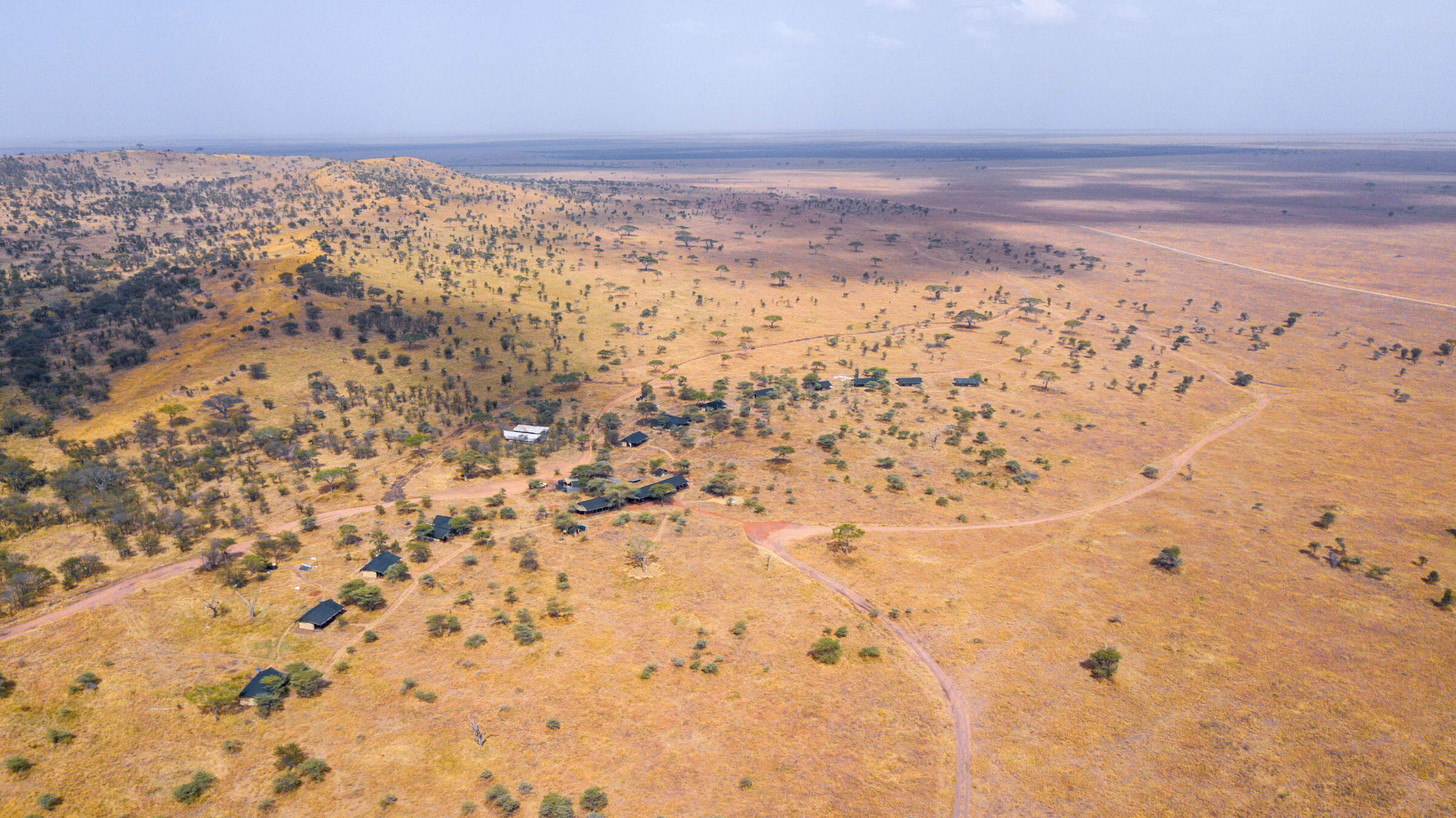
Lemala Ewanjan
Lemala Ewanjan is a comfortable and stylish tented camp in the Seronera area of the central Serengeti National Park.
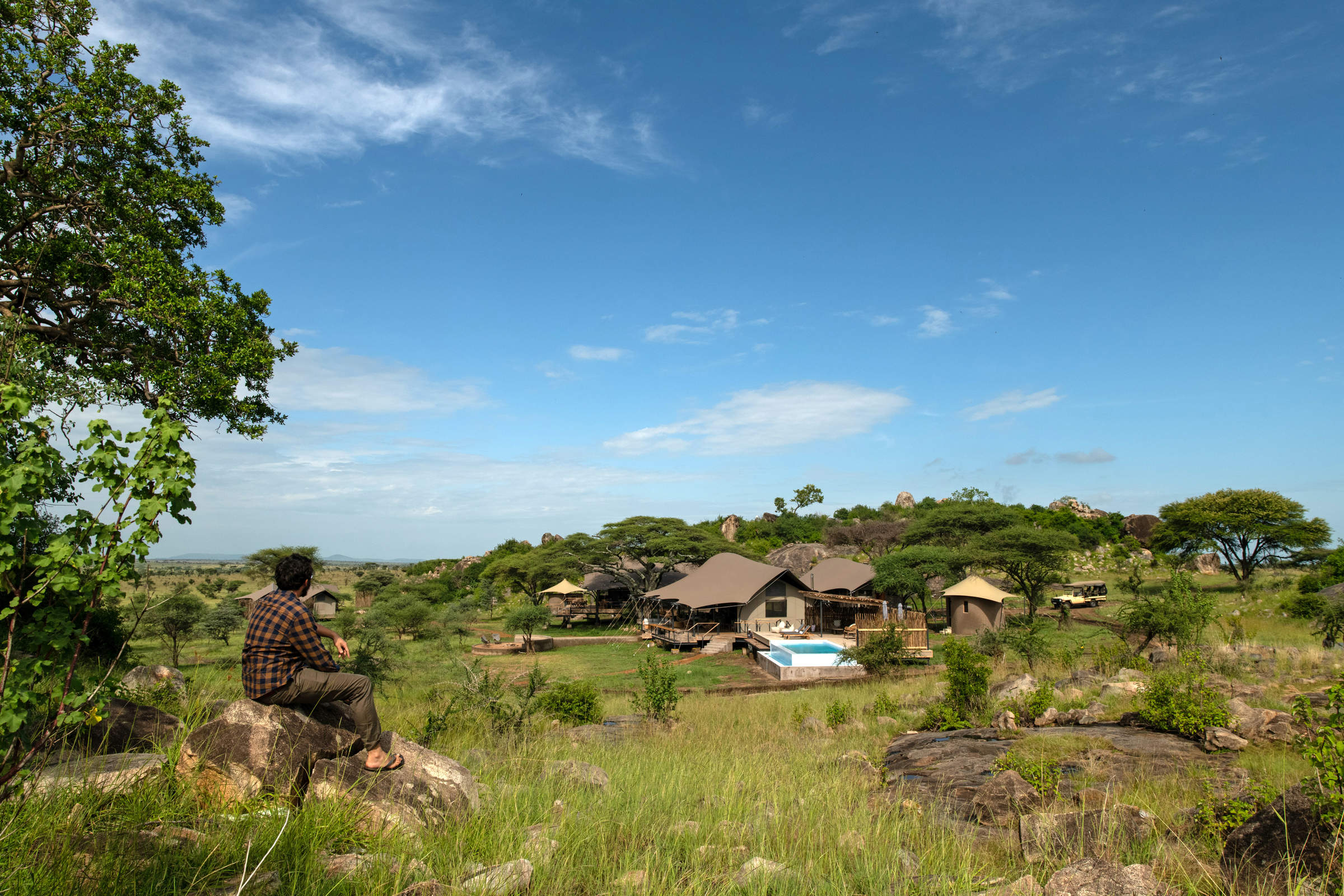
Lemala Nanyukie
Lemala Nanyukie is a stylish camp located in the quieter part of the central Serengeti.
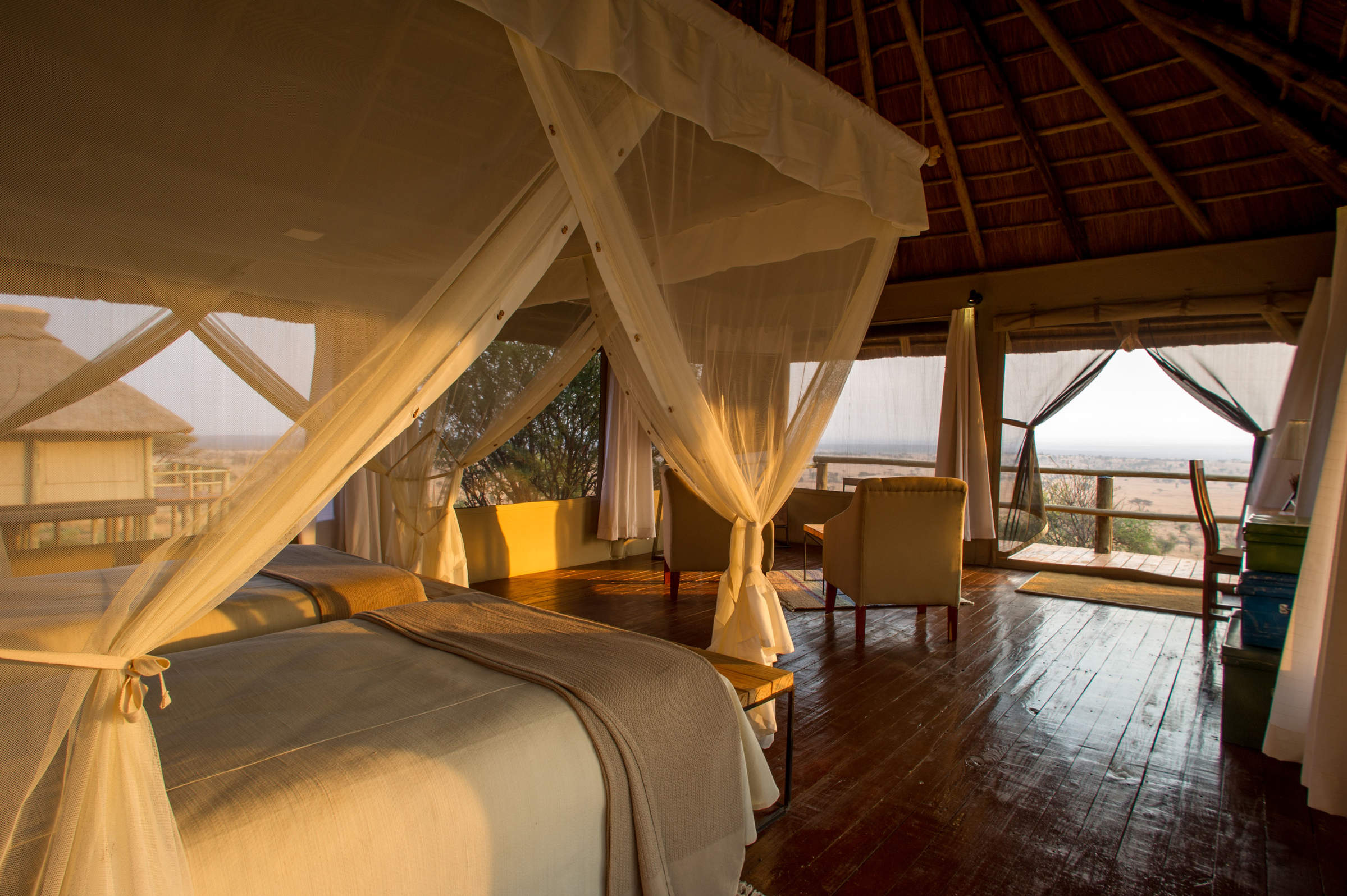
Kubu Kubu
Kubu Kubu is a contemporary, tented lodge, well located in the central Seronera area of the Serengeti National Park.
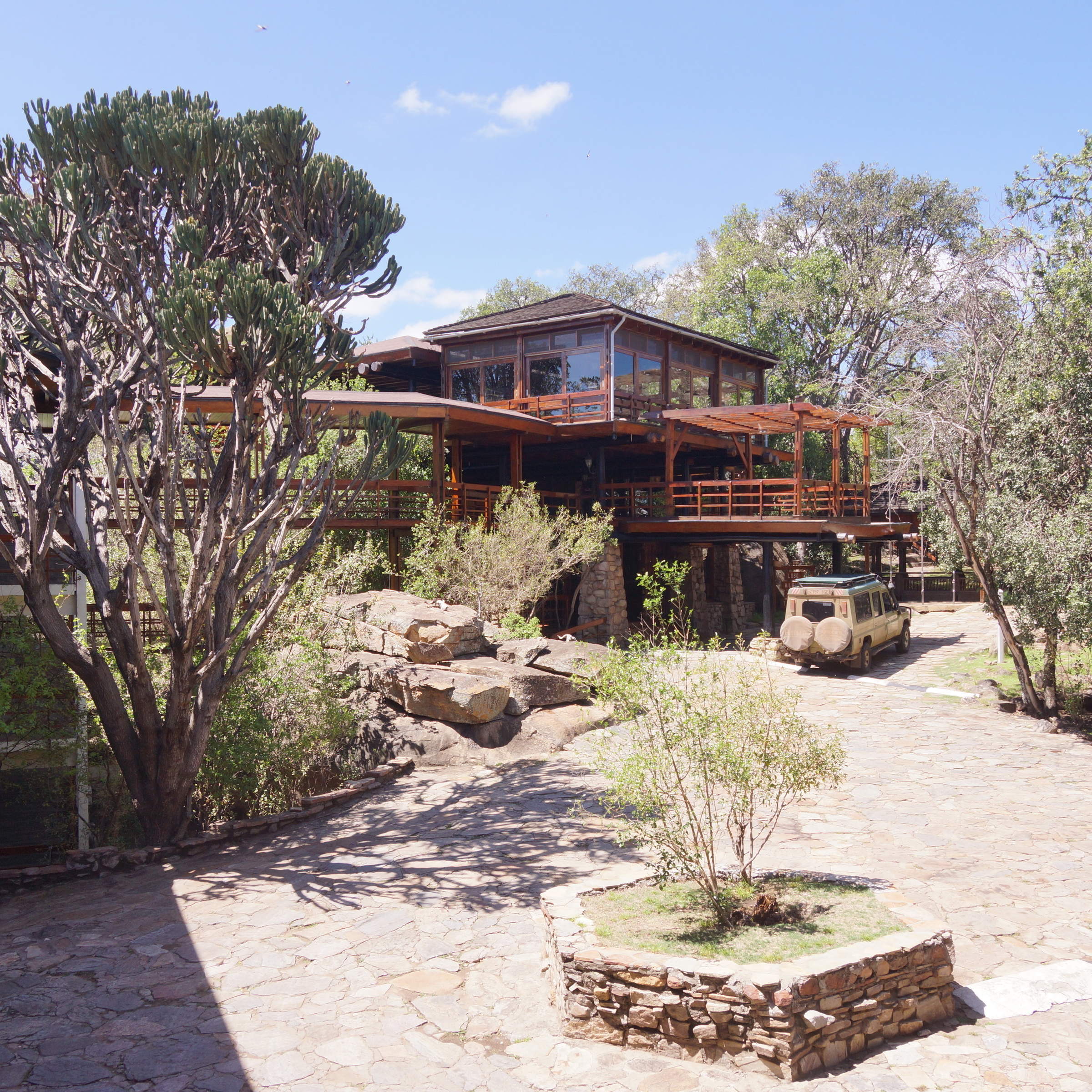
Lobo Wildlife Lodge
The large Lobo Wildlife Lodge has simple, functional rooms in a stunning location. It's a good base for exploring the north-eastern Serengeti.
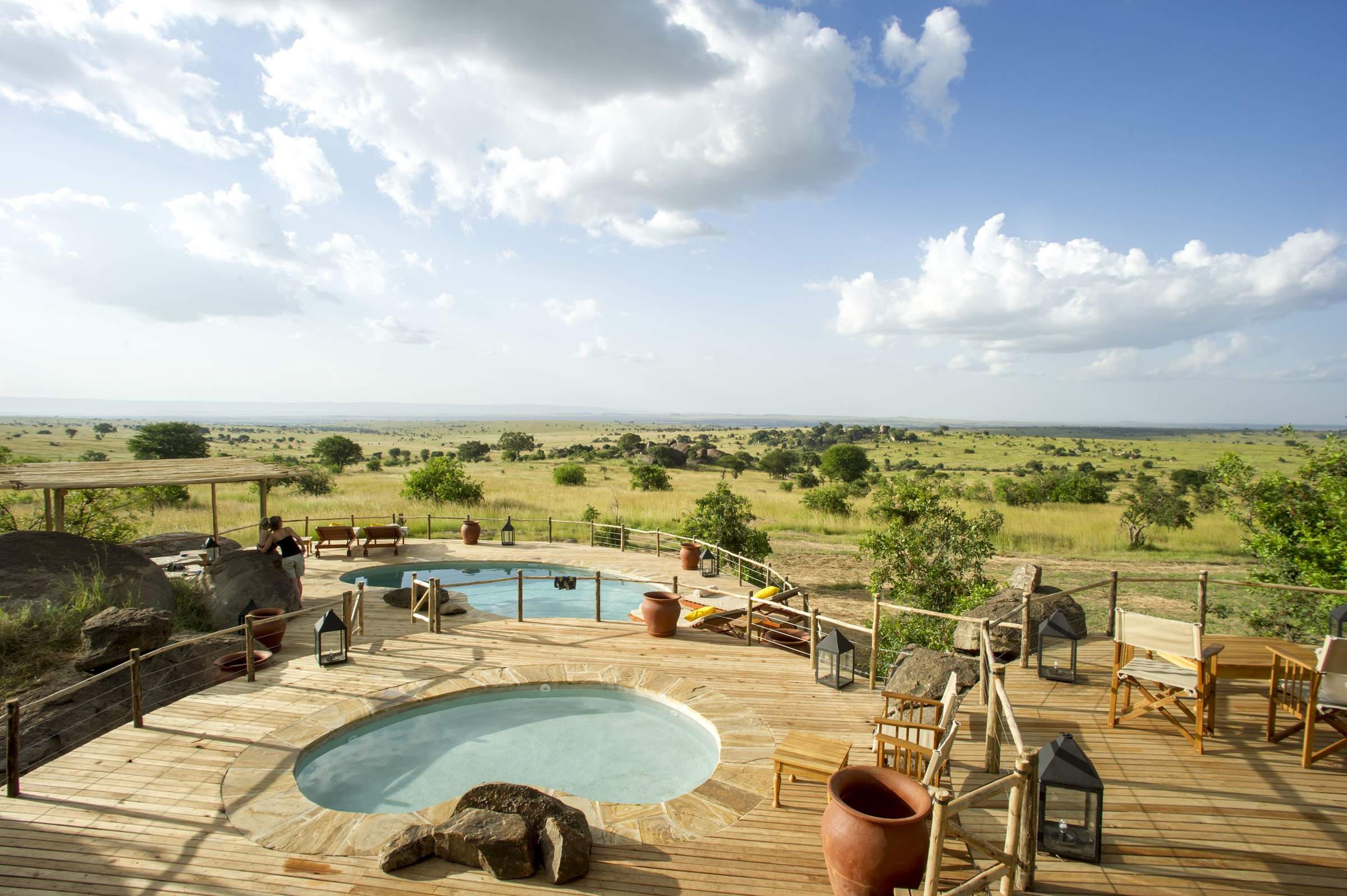
Mkombe's House Lamai
Mkombe's House Lamai is a fully staffed private house in the Wogakuria Kopjes district of Serengeti National Park.
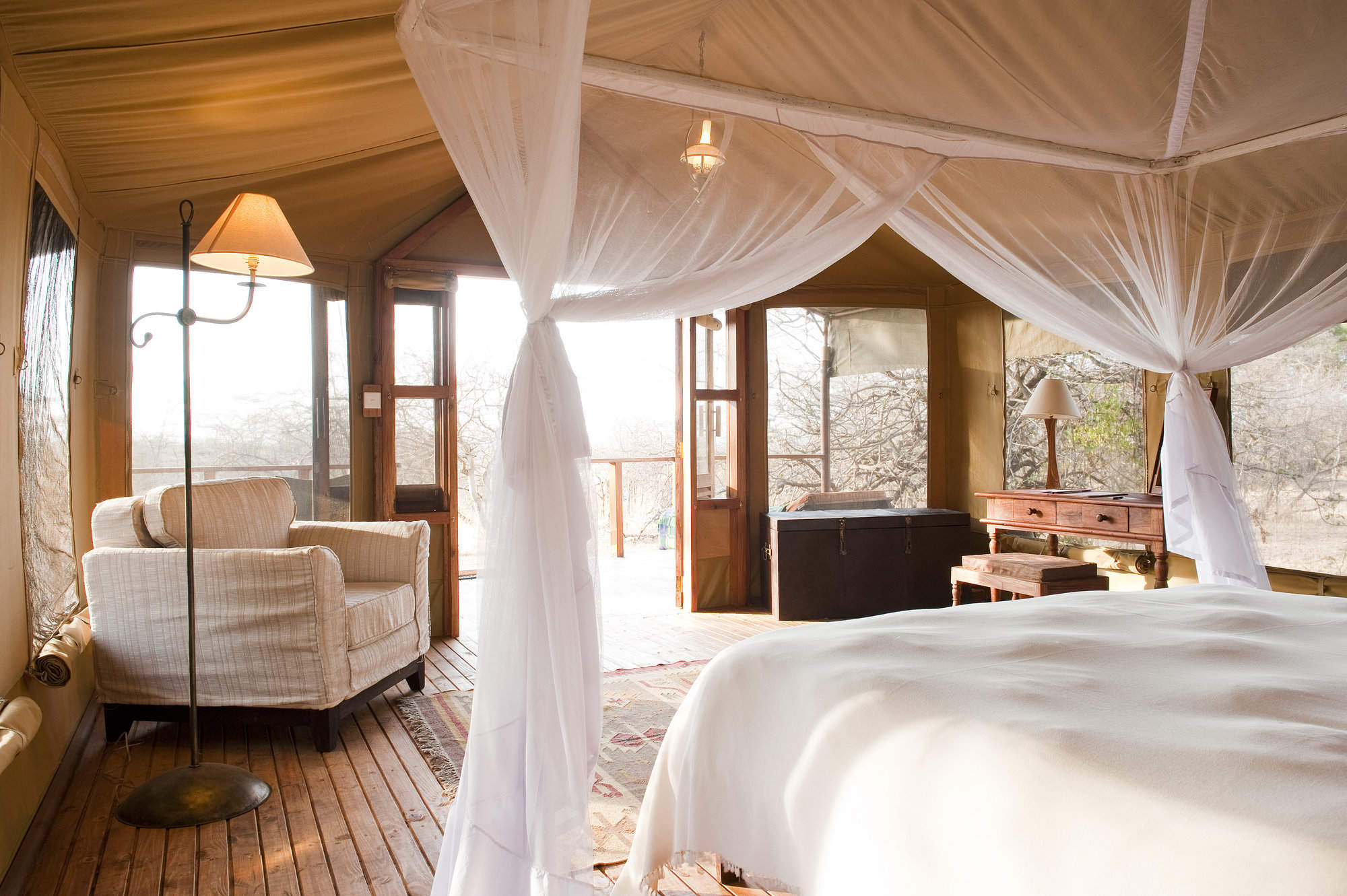
Kusini Camp
Kusini Camp is permanent, luxury camp located on a beautiful kopje in a quiet, wildlife-rich corner of the south-west Serengeti.
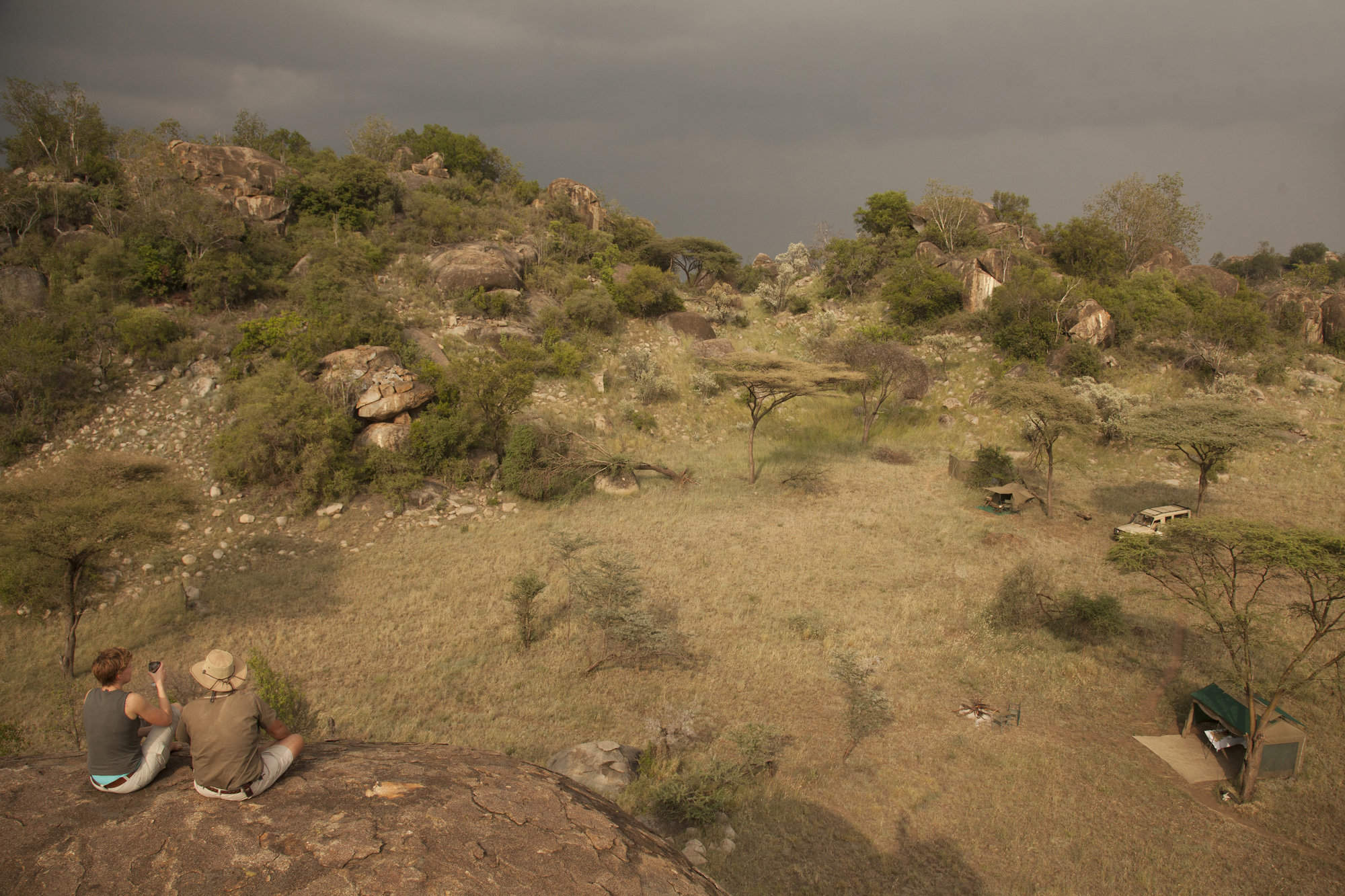
Serengeti Walking Mobile
This fairly simple camp offers only walking activities, but it's very well done and combines well with more conventional camps or lodges.
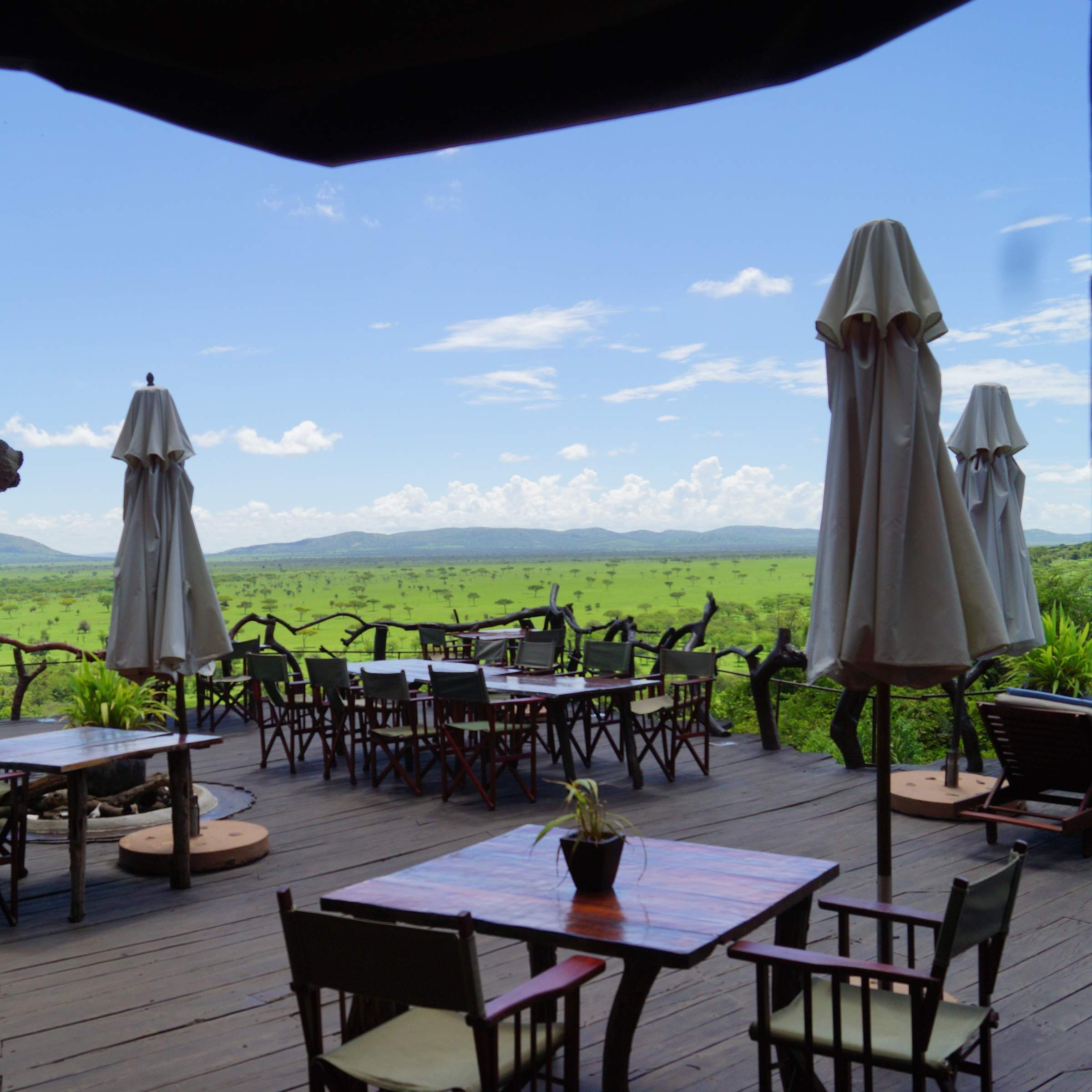
Mbalageti Lodge
Mbalageti is a well-run lodge in a quiet part of the Serengeti's western corridor – an ideal location during the Apr-Jun migration.
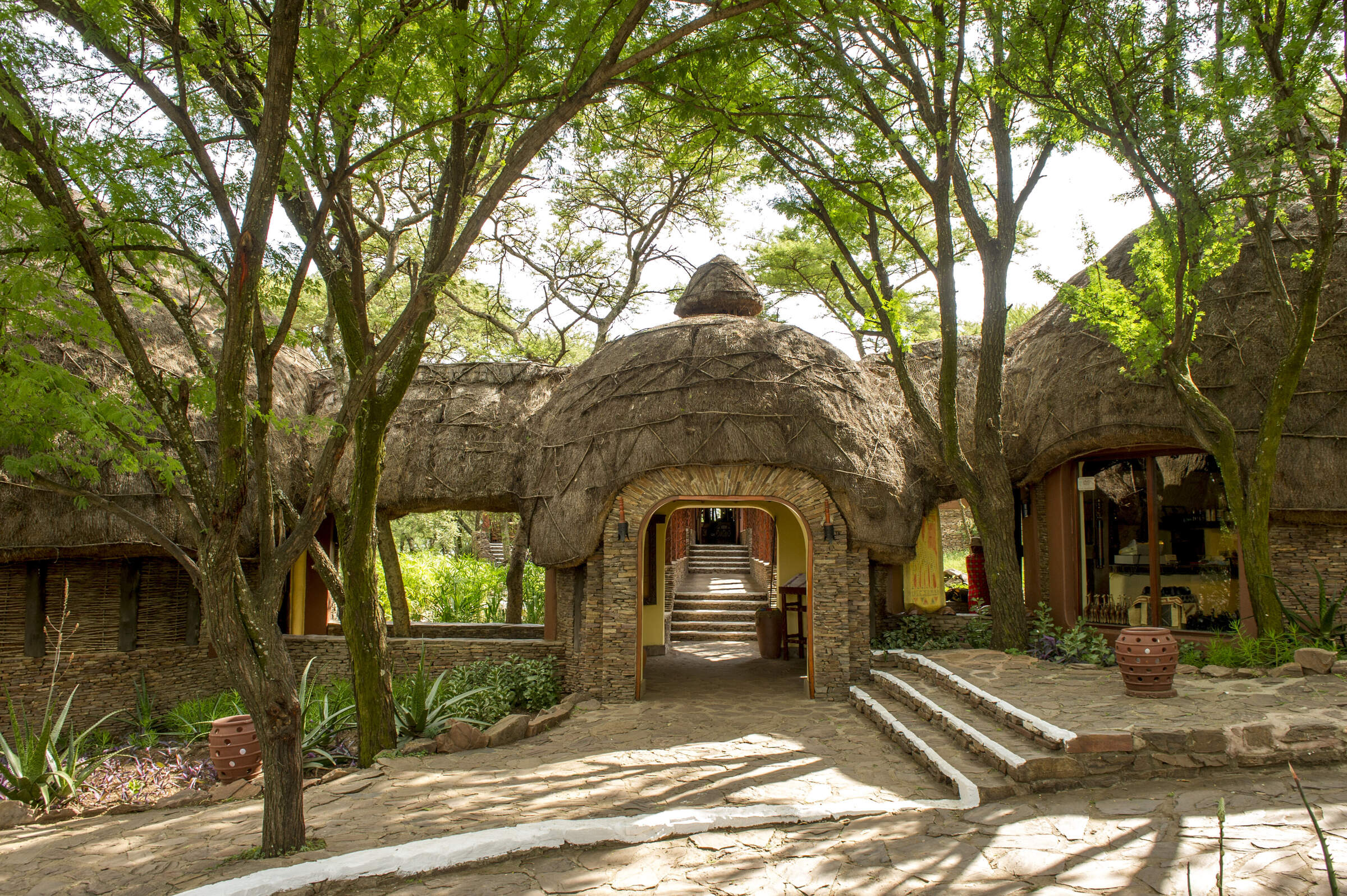
Serengeti Serena
The Serengeti Serena Safari Lodge is a large, hotel-style lodge and a good family-friendly base from which to explore the central Serengeti.
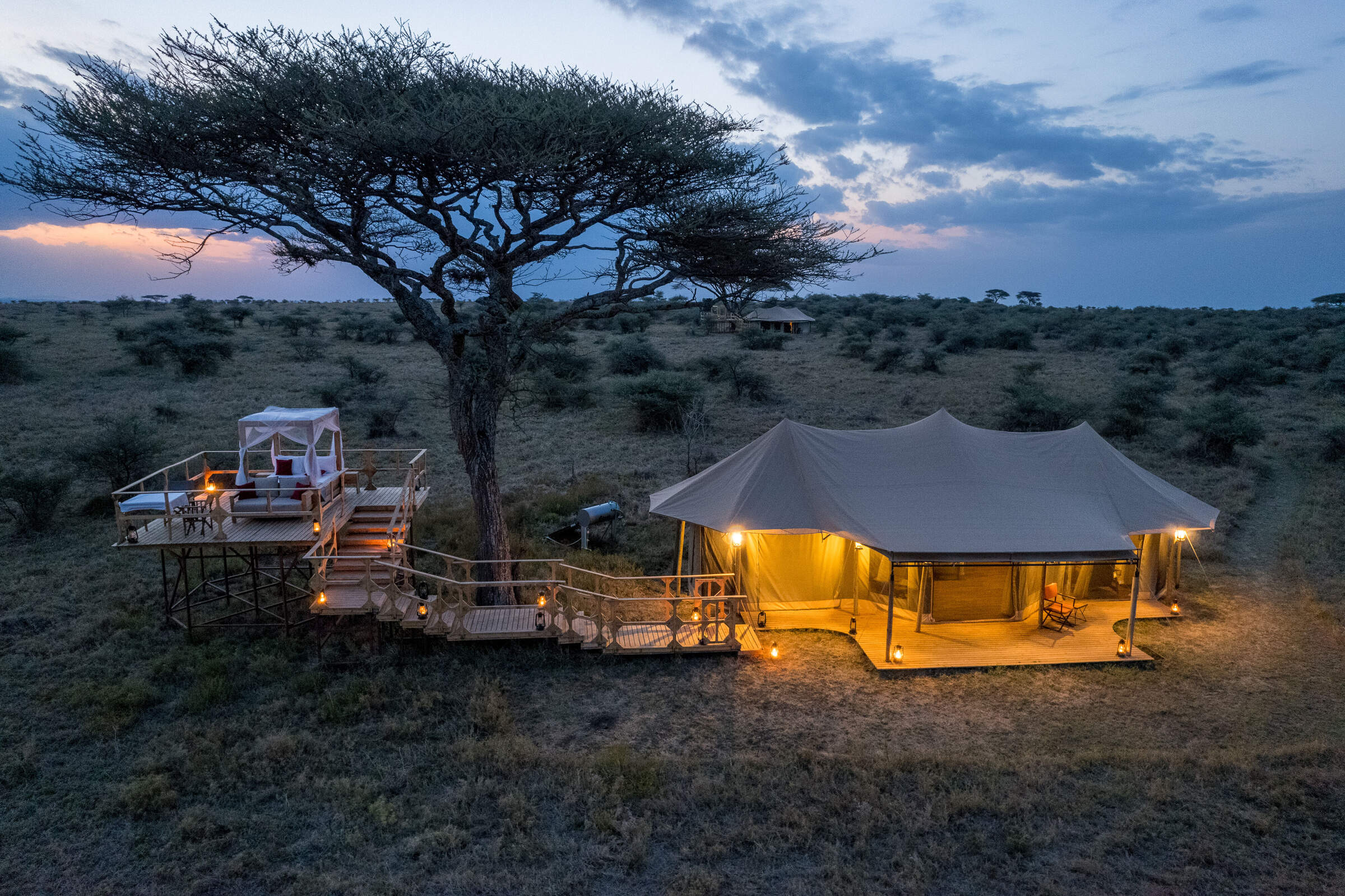
Olmara Camp
With just eight guest tents, including two family tents and three signature stargazer tents, Olmara is a simple, family-friendly camp with a wonderfully attentive team. The camp captures an authentic bush experience, welcoming travellers of every kind.
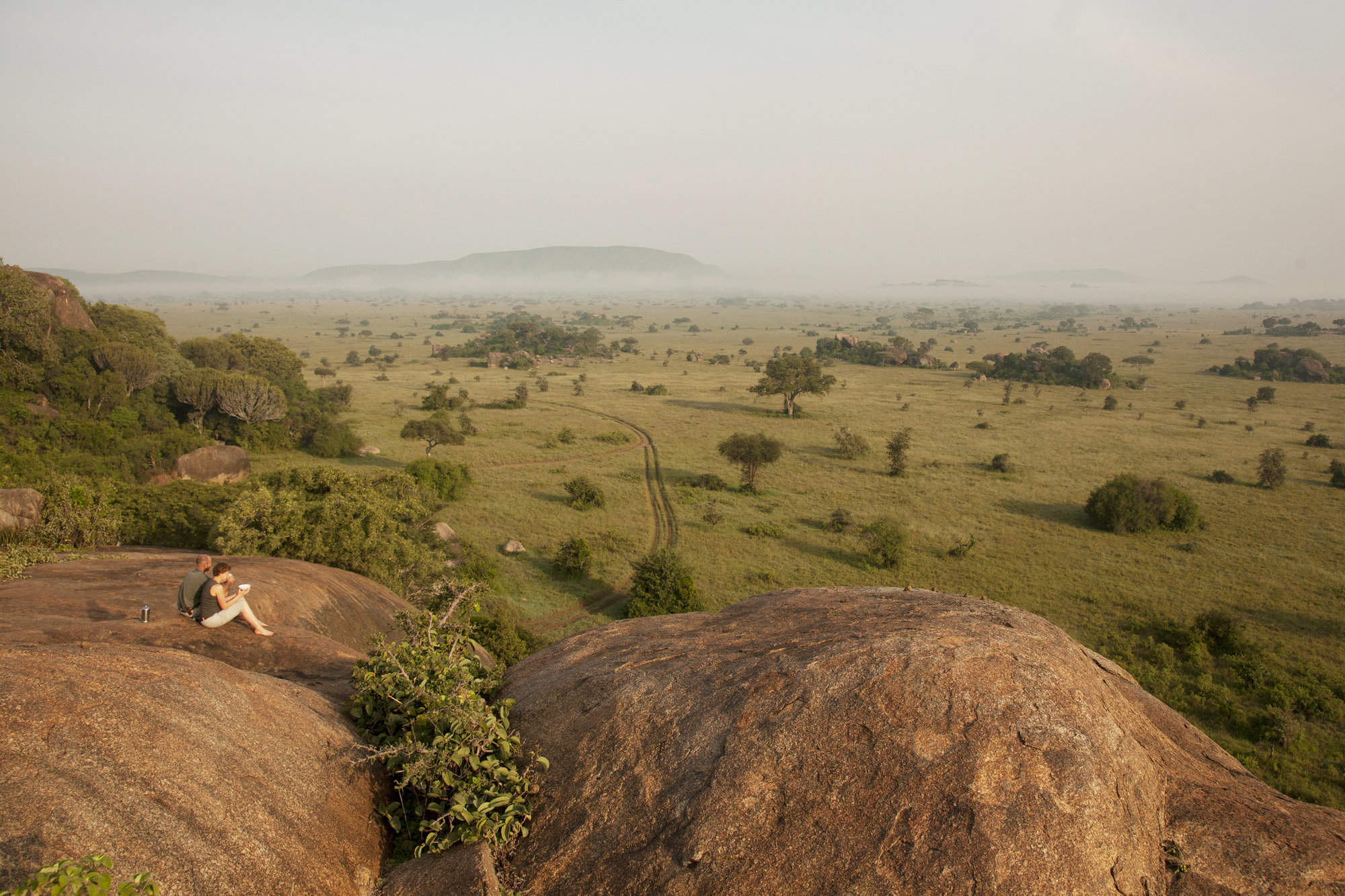
Serengeti Green Camp
Serengeti Green Camp is a comfortable camping experience, in your own private safari camp and at the heart of a great wildlife area.
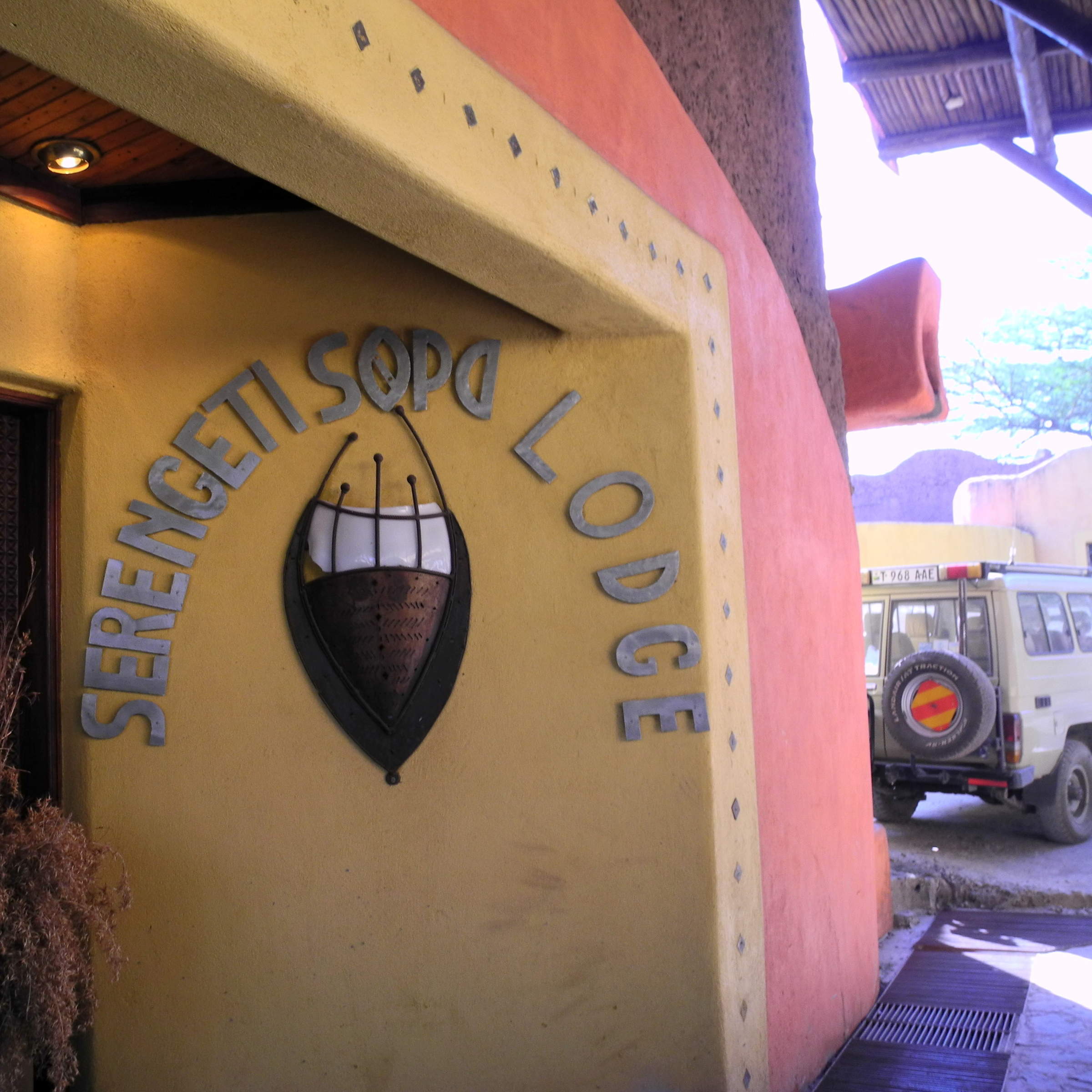
Serengeti Sopa Lodge
Serengeti Sopa Lodge is an international-style hotel offering good-value accommodation in the central Serengeti, with lovely views of the plains.
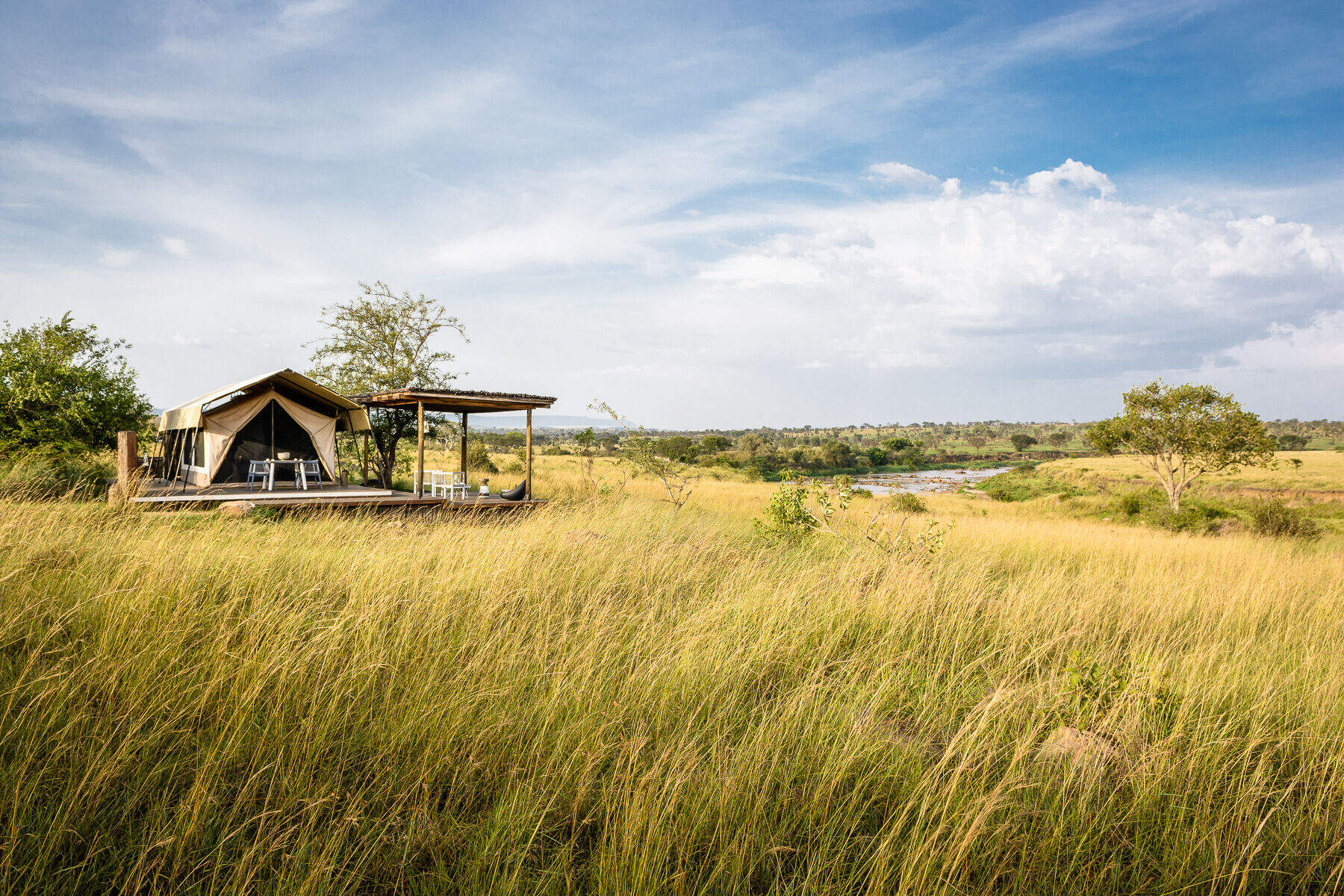
Singita Mara River
Singita Mara River Tented Camp is a luxurious camp in the isolated and rewarding Lamai wedge region of the northern Serengeti.
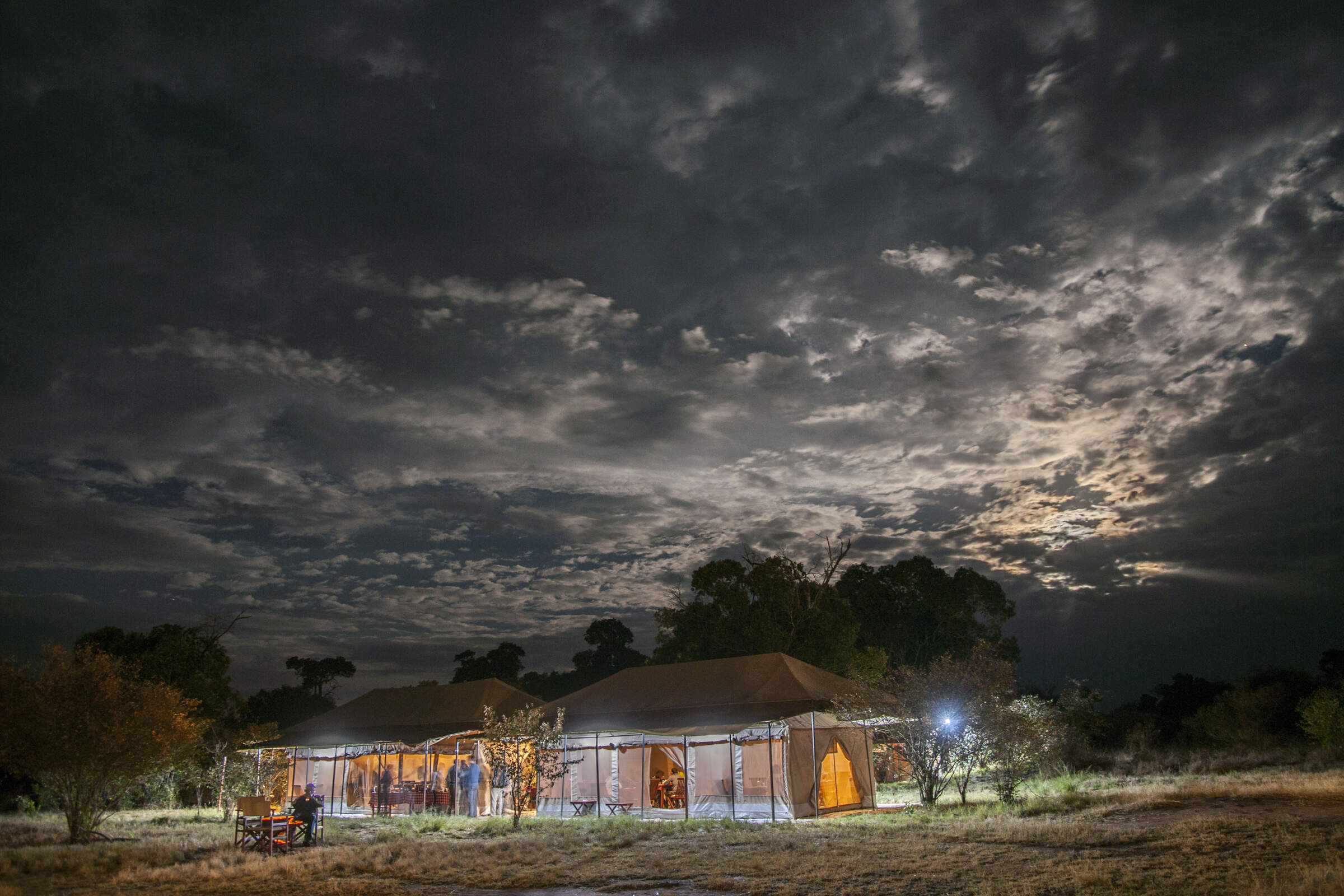
Migration Camp
Serengeti Migration Camp is a smart tented camp, good for the wildebeest migration from Jul–Aug, or to explore the Lobo Kopjes any time.
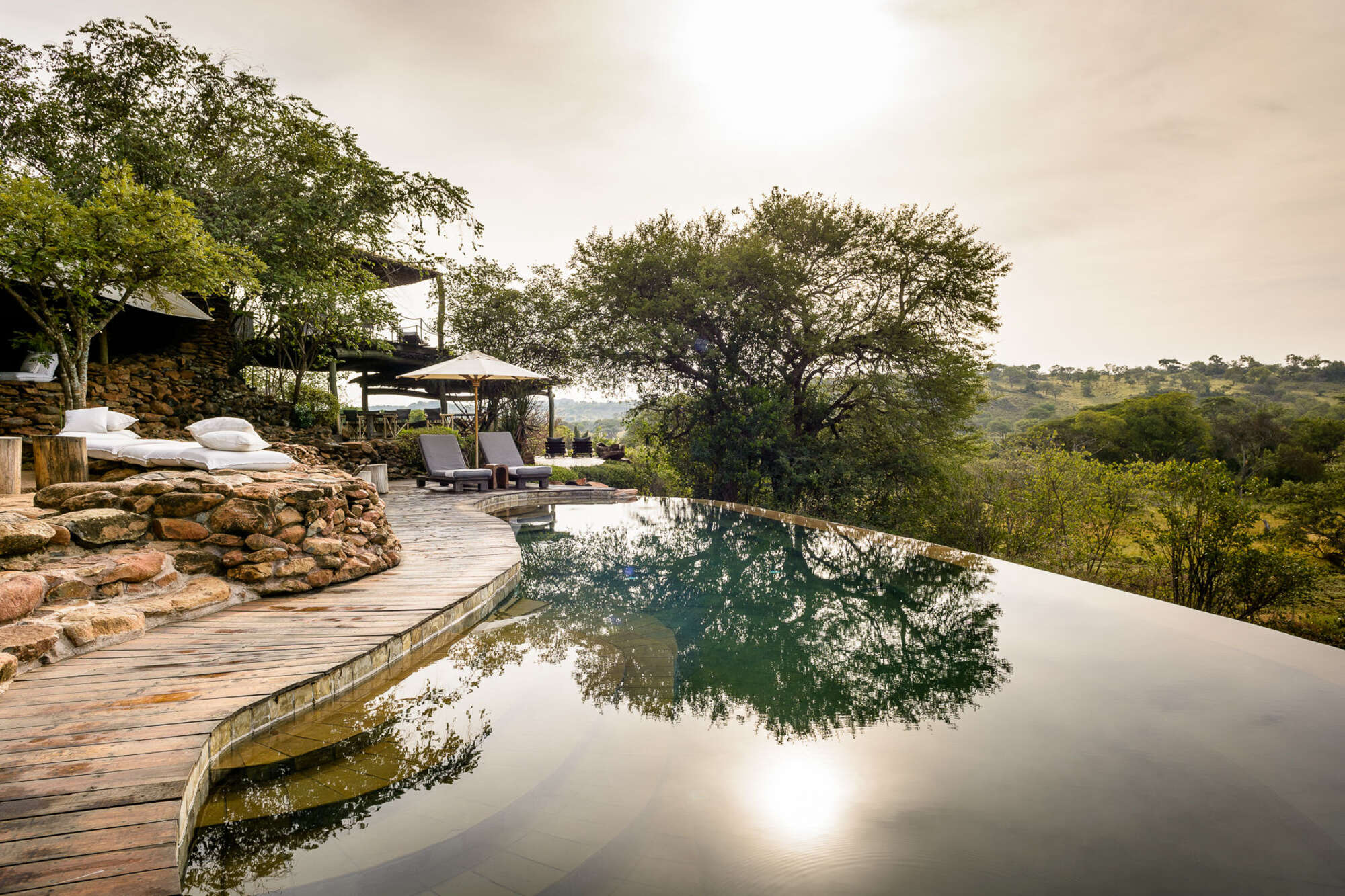
Faru Faru Lodge
On the north bank of the Grumeti River, Faru Faru is a small, chic hideaway in this exclusive corner of the Serengeti.
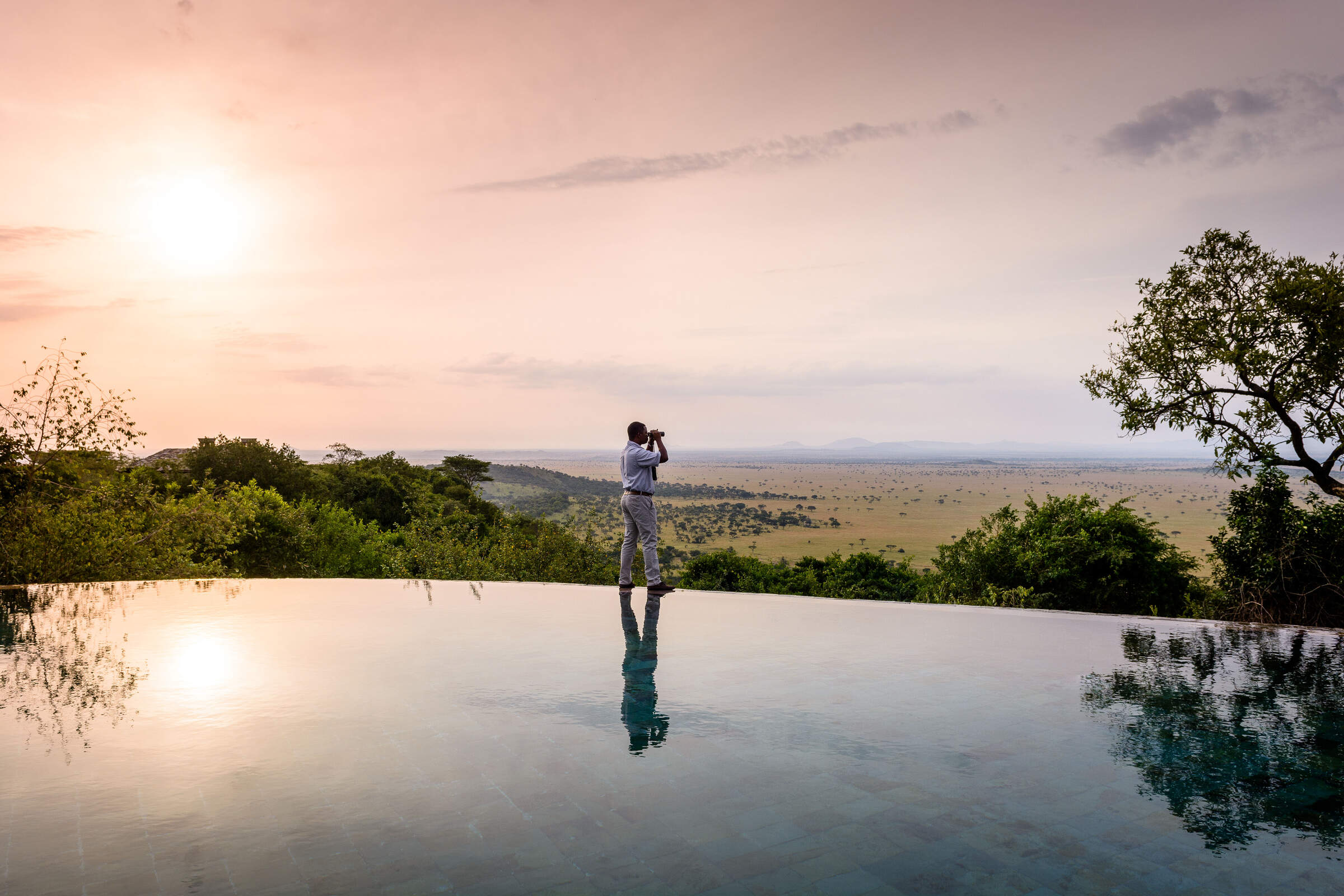
Sasakwa Lodge
On a hill looking over the Serengeti plains, Sasakwa Lodge is grand, luxurious safari camp, one of the most opulent properties in Tanzania.
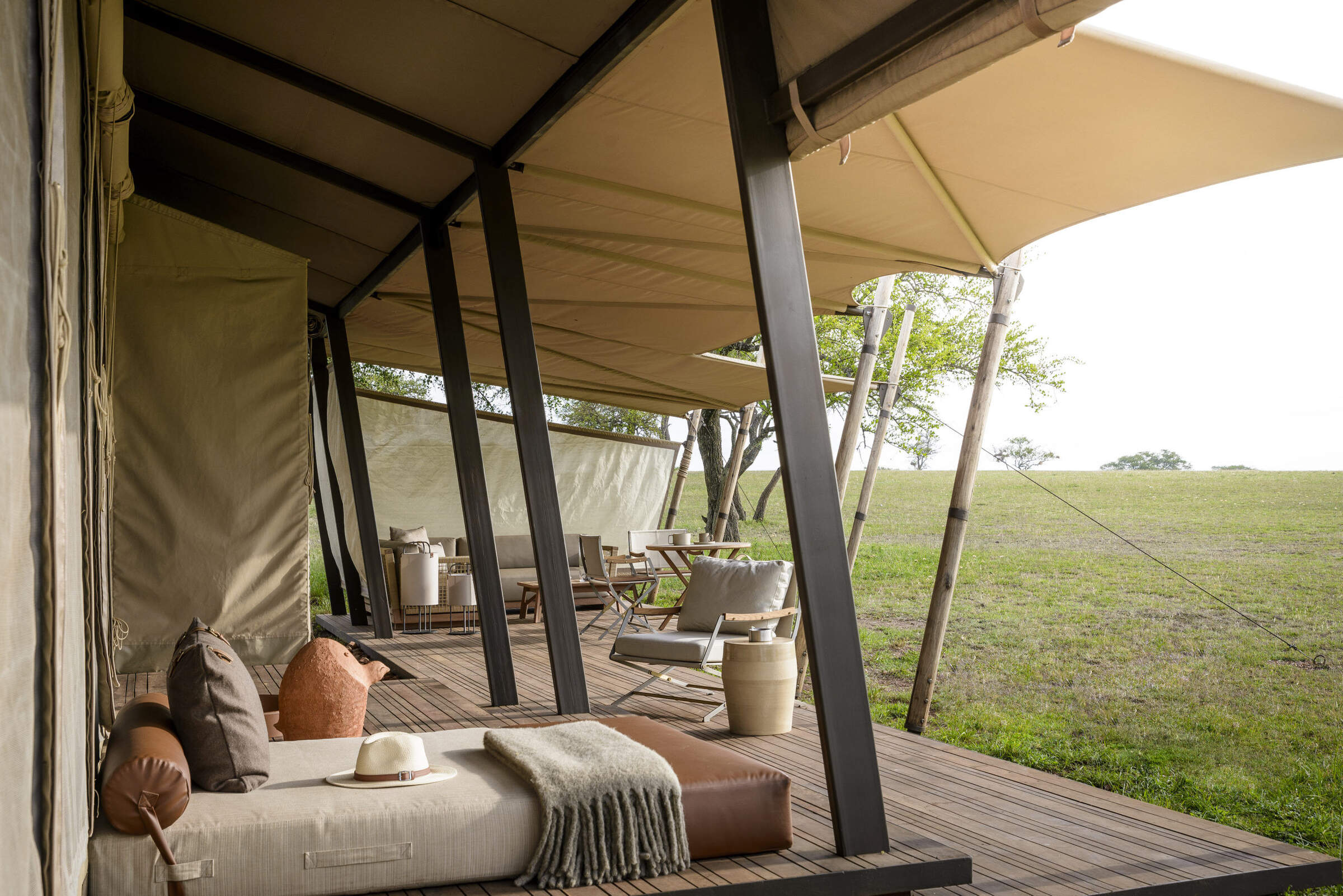
Sabora Tented Camp
Sabora Tented Camp is a smart tented camp – one of the most luxurious, professional and stylish properties to be found in Tanzania.
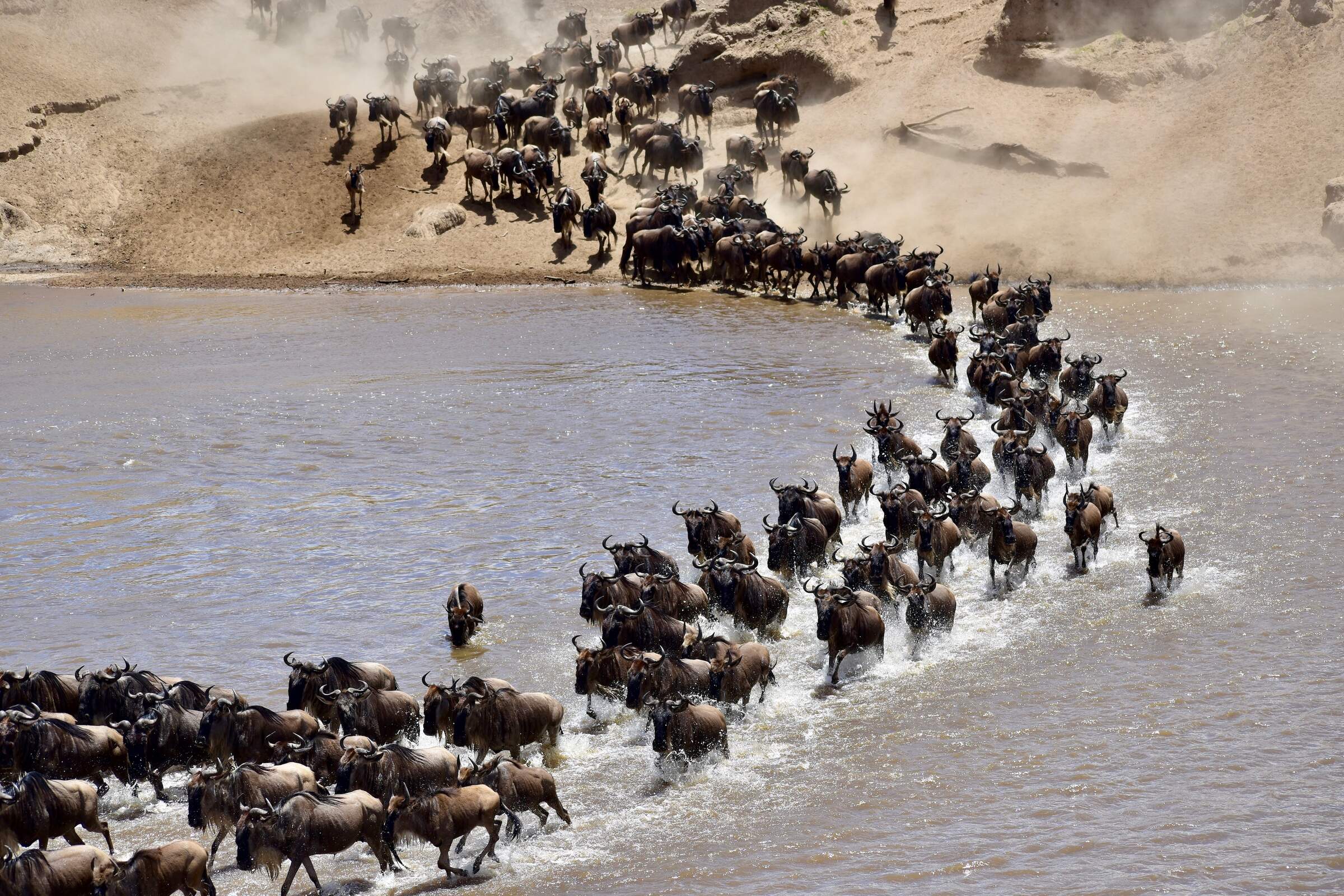
Kirurumu Migration Camp
Kirurumu is a rustic tented camp which moves around the Serengeti twice a year to follow the wildebeest migration.
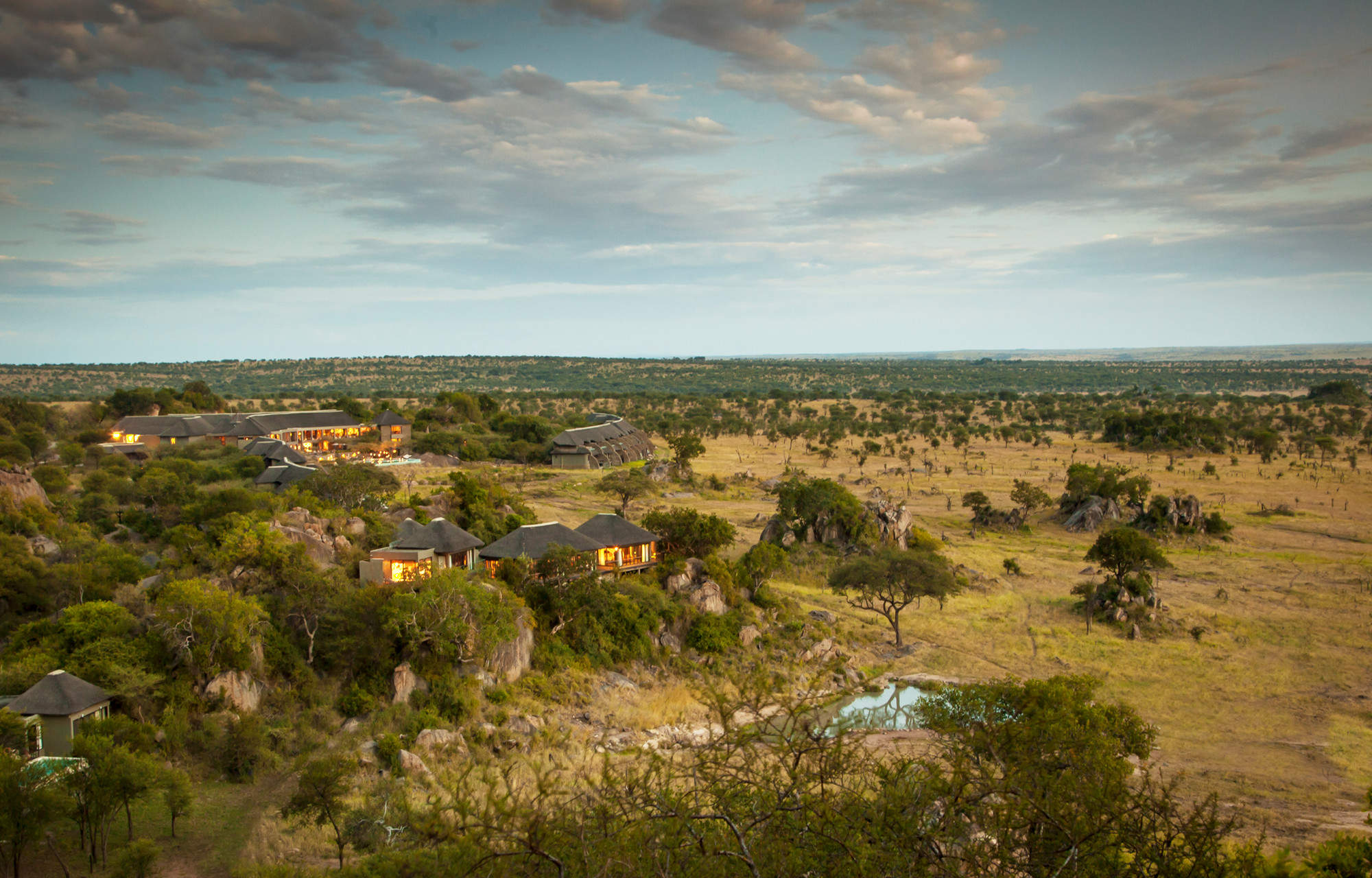
Four Seasons Serengeti
The Four Seasons Safari Lodge is the only hotel in the Serengeti offering international facilities such as a gym, spa and children’s club.
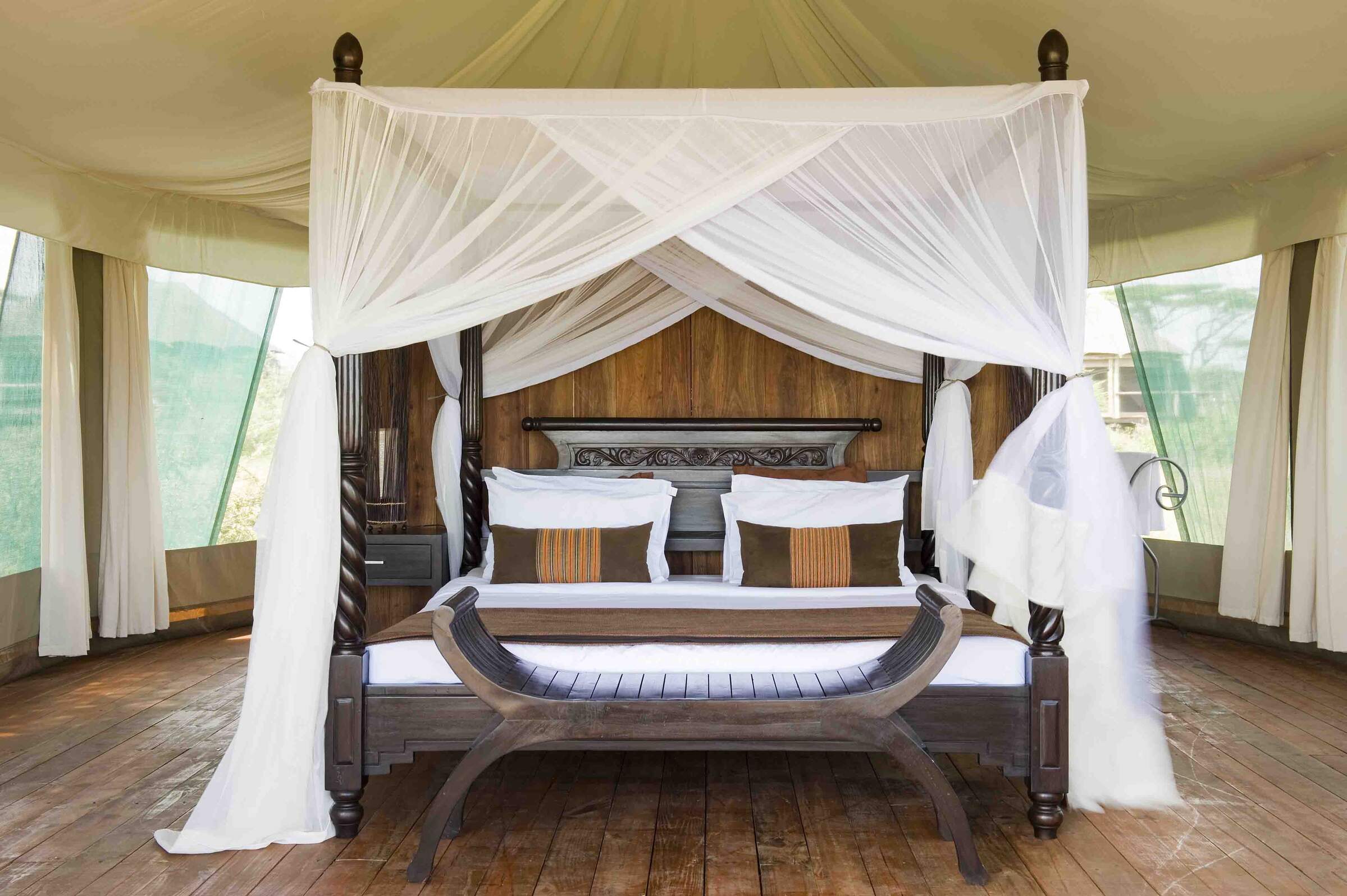
Lake Masek Tented Camp
Ideally located for the wildebeest migration from Dec–Apr, Lake Masek Tented Camp is a good, mid-market safari camp.
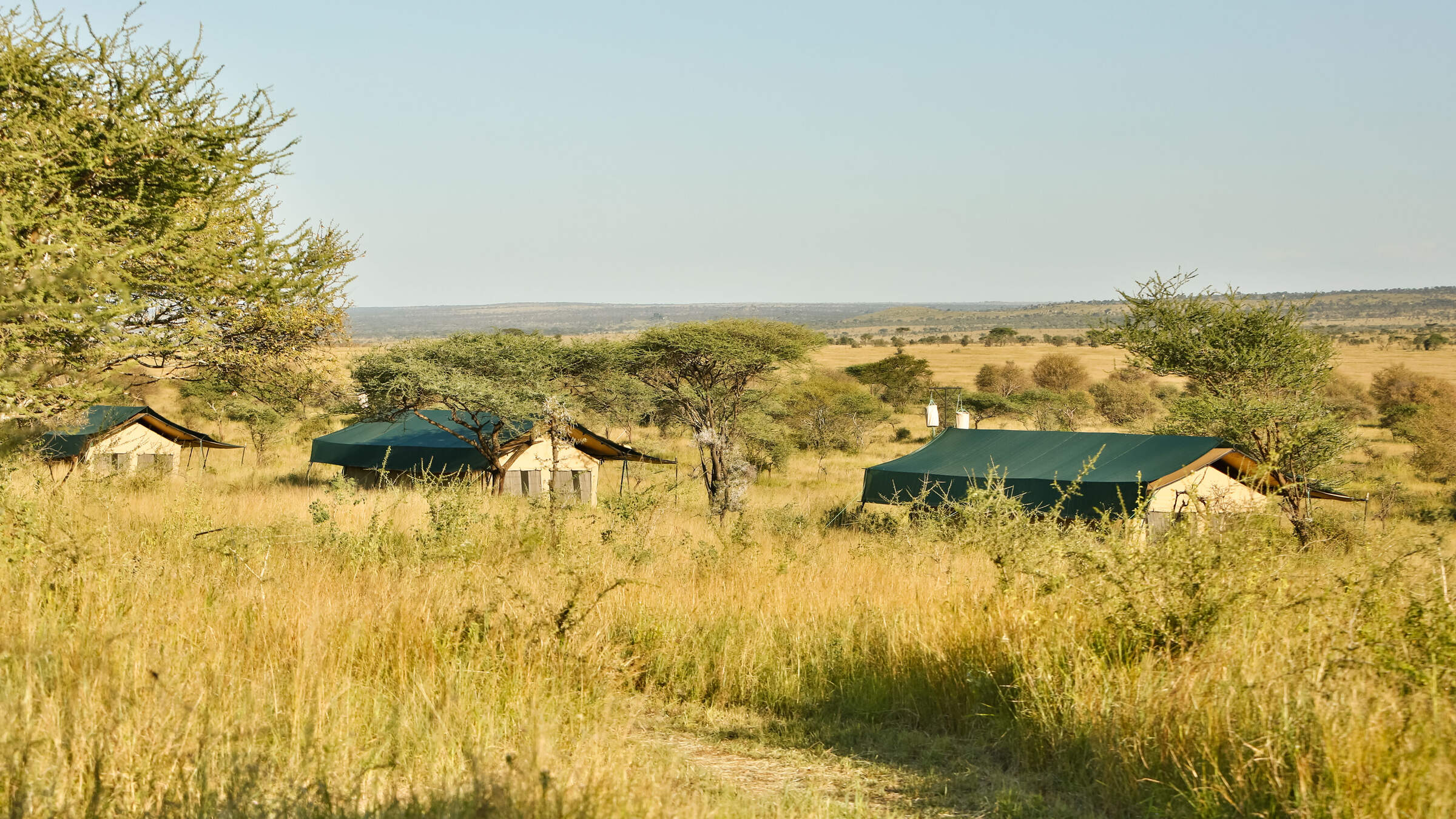
Nyikani Central
Nyikani Central is a comfortable tented camp located in the game-rich Seronera area of the central Serengeti.

Esirai Migration Camp
A season migration camp, with only 8 tents and 1 family tent and plenty of character. Esirai is ideally placed for excellent wildlife and enjoys a simplistic and comfortable under-canvas experience.
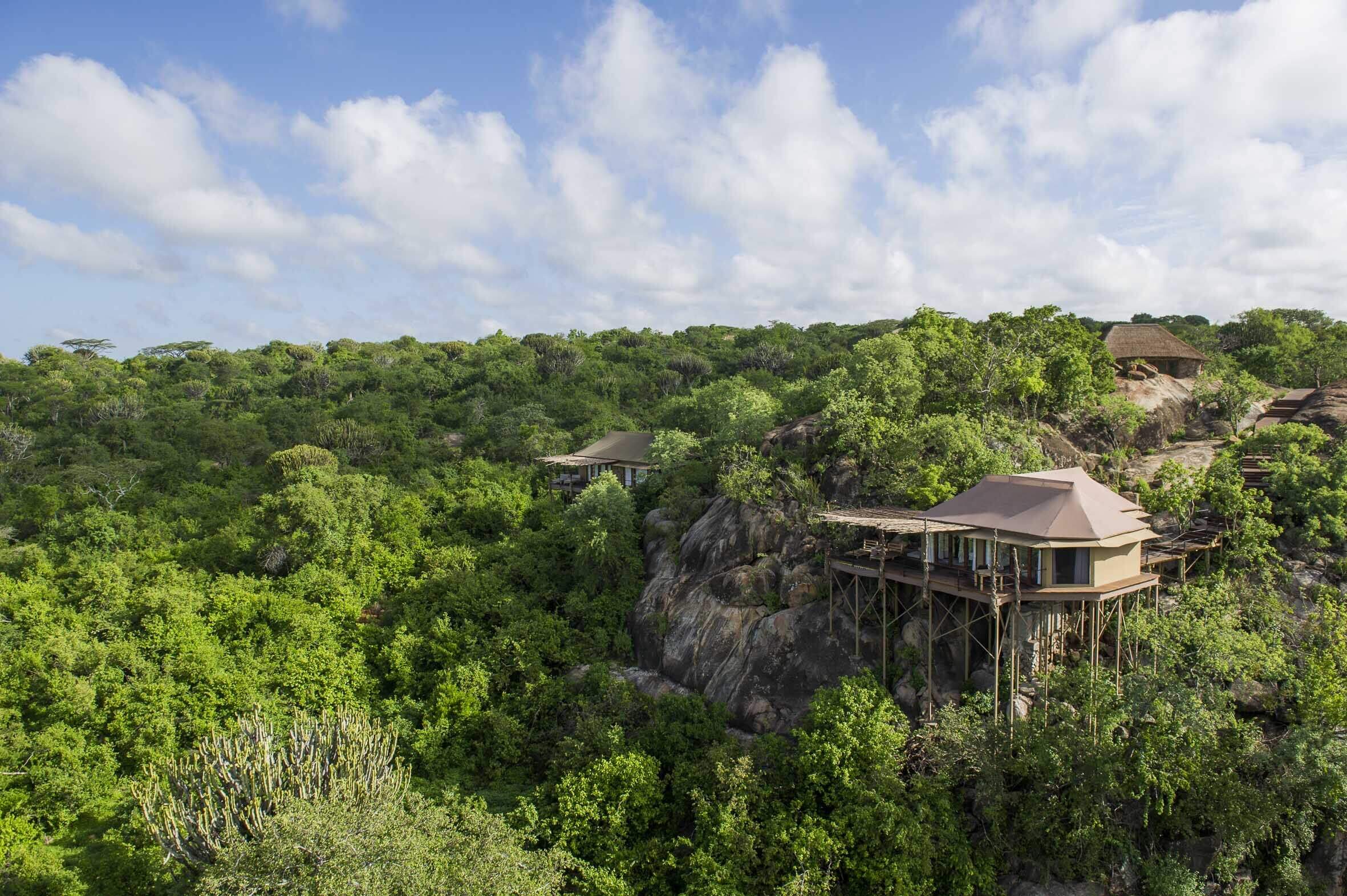
Mwiba Lodge
Mwiba Lodge is a luxurious property located on a private concession on the edge of the southern Serengeti.
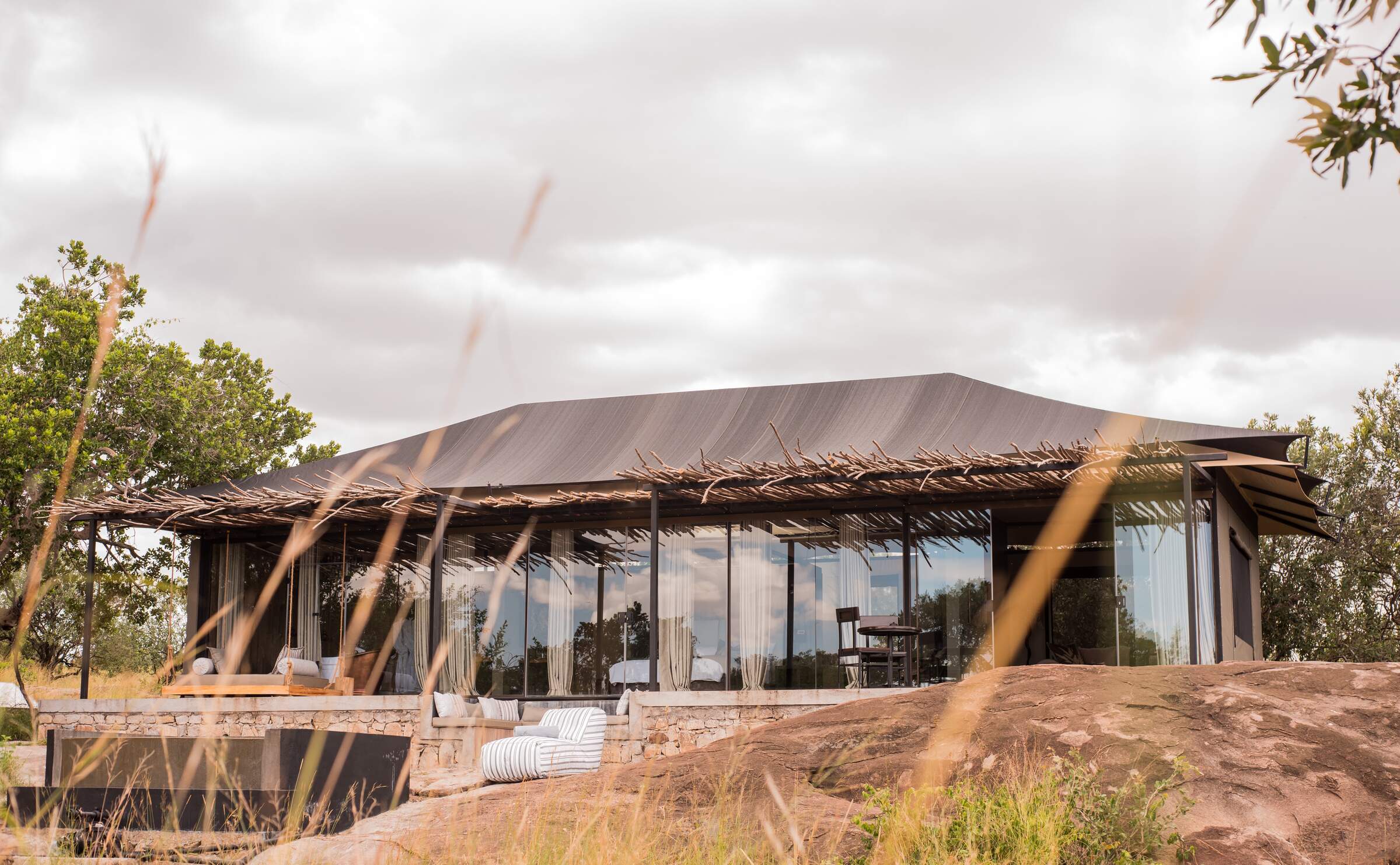
Nimali Mara
Nimali Mara is a luxurious safari lodge in a quiet region of the northern Serengeti with good access to the wildebeest migration.
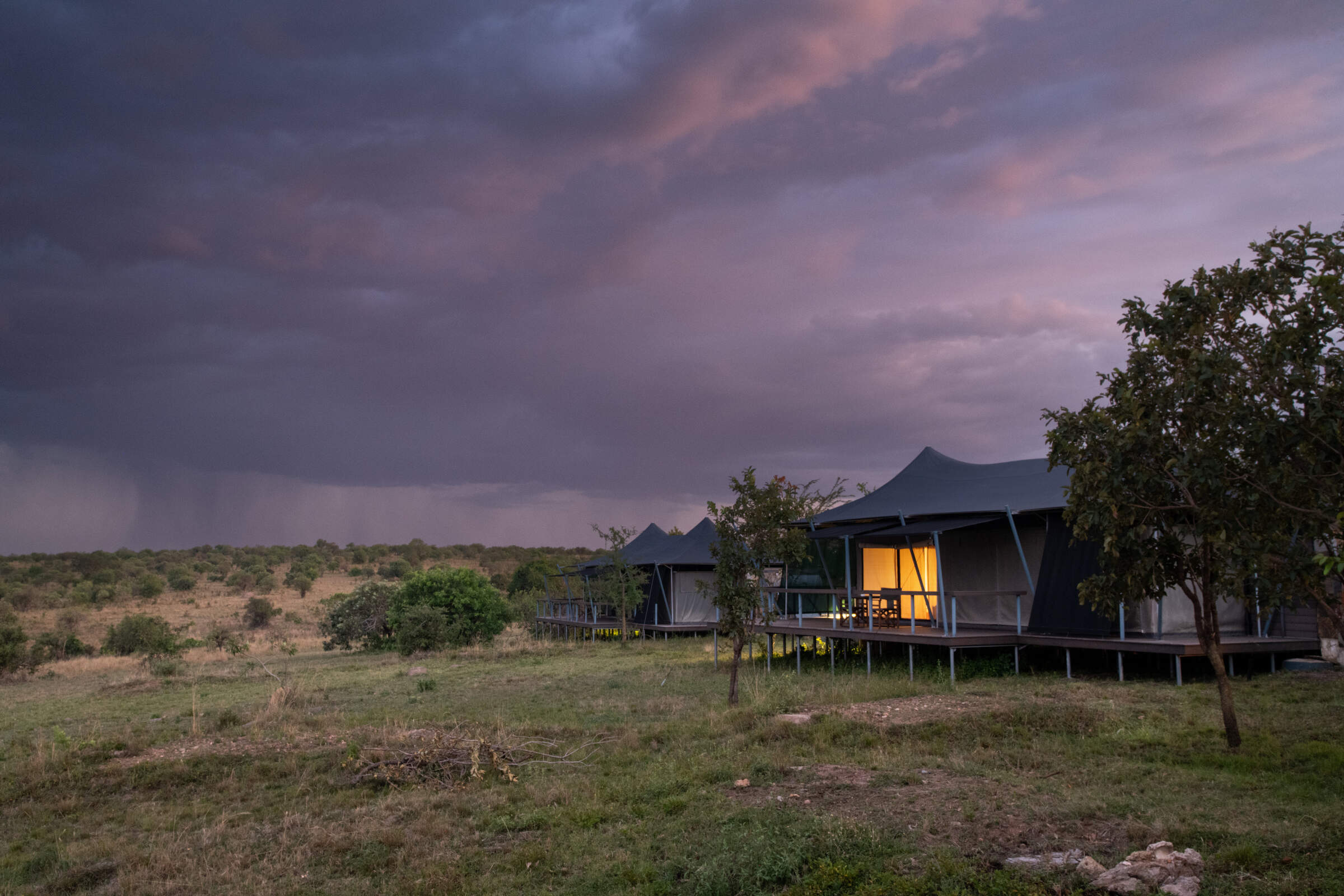
Mara Mara
Mara Mara is a smart tented camp in the northern Serengeti, situated on a small hill close to the Mara River.
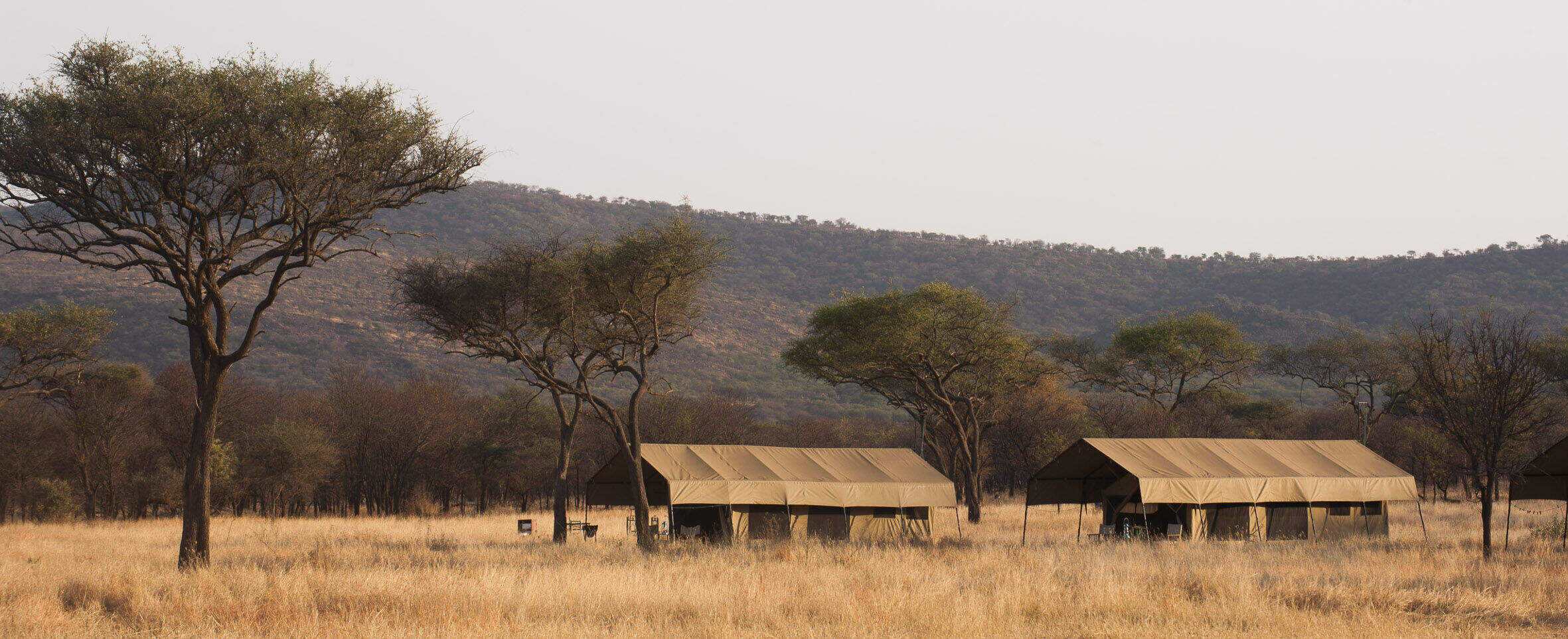
Ndutu Kati Kati
Ndutu Kati Kati is a seasonal tented camp, based in the southern Serenget from Dec-Mar, ideal for the migration as it passes through.

Olduvai Camp
Olduvai Camp lies between Ngorongoro and the southern Serengeti plains. It's a good base for the southern plains during the rainy season.
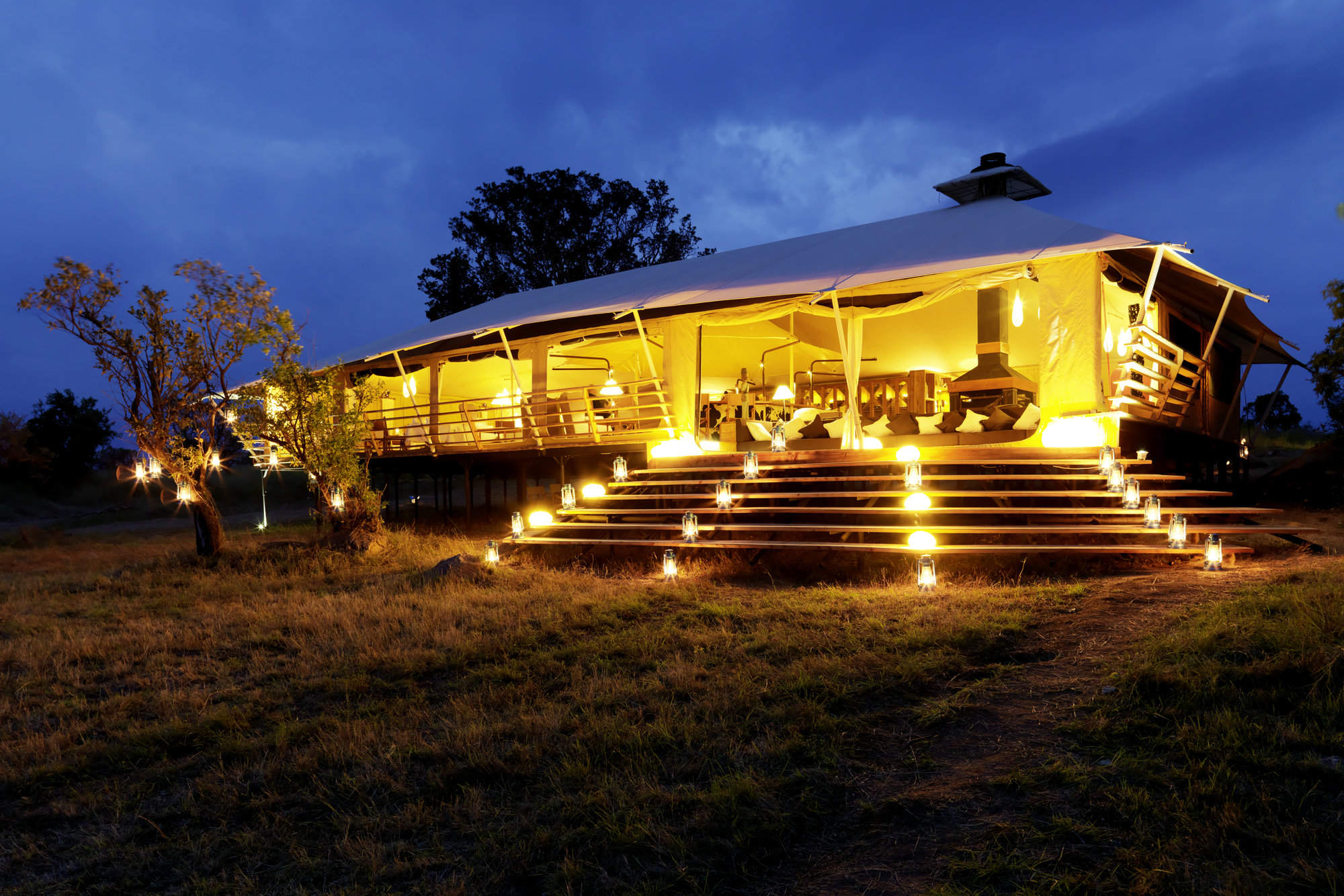
Bushtops
Serengeti Bushtops is a permanent luxury camp in the northern Serengeti, with spacious and private tents with their own hot tubs.
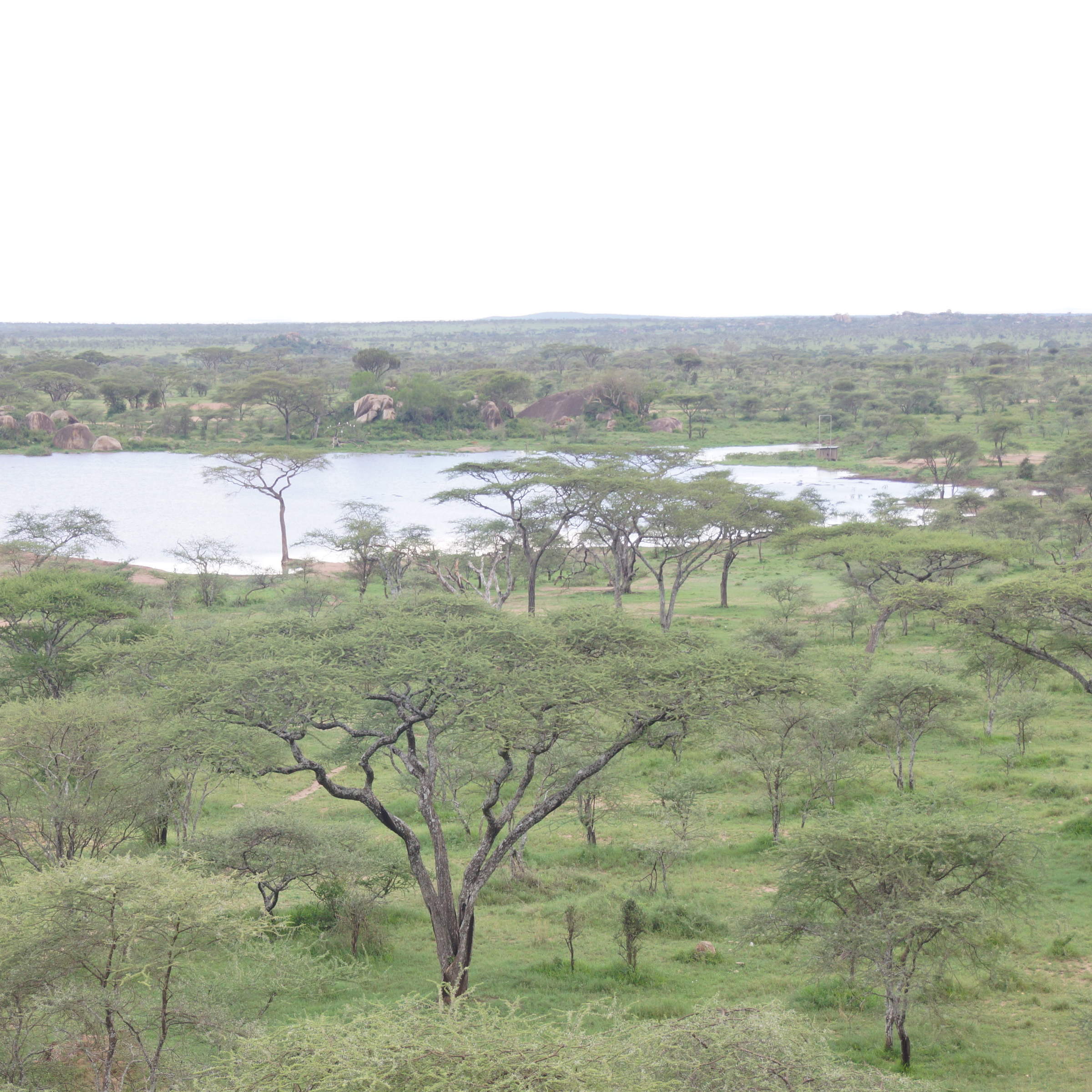
Seronera Wildlife Lodge
Seronera Wildlife Lodge is large hotel-style safari lodge in the heart of the Serengeti, offering good value and a great location.
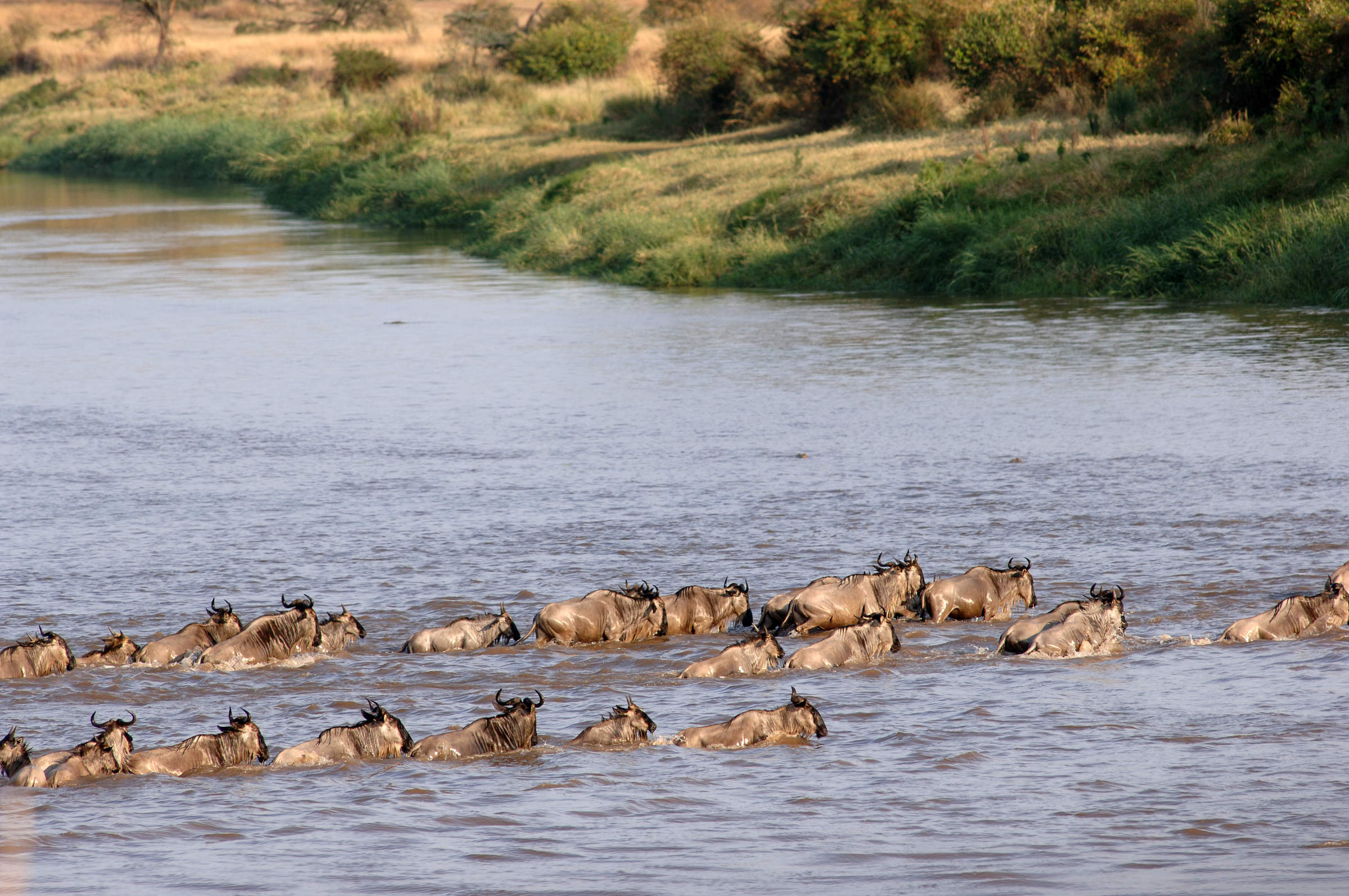
Mara Kati Kati
Mara Kati Kati is a simple bush camp in the northern Serengeti, based from Jul-Oct near the Mara River for the wildebeest migration.
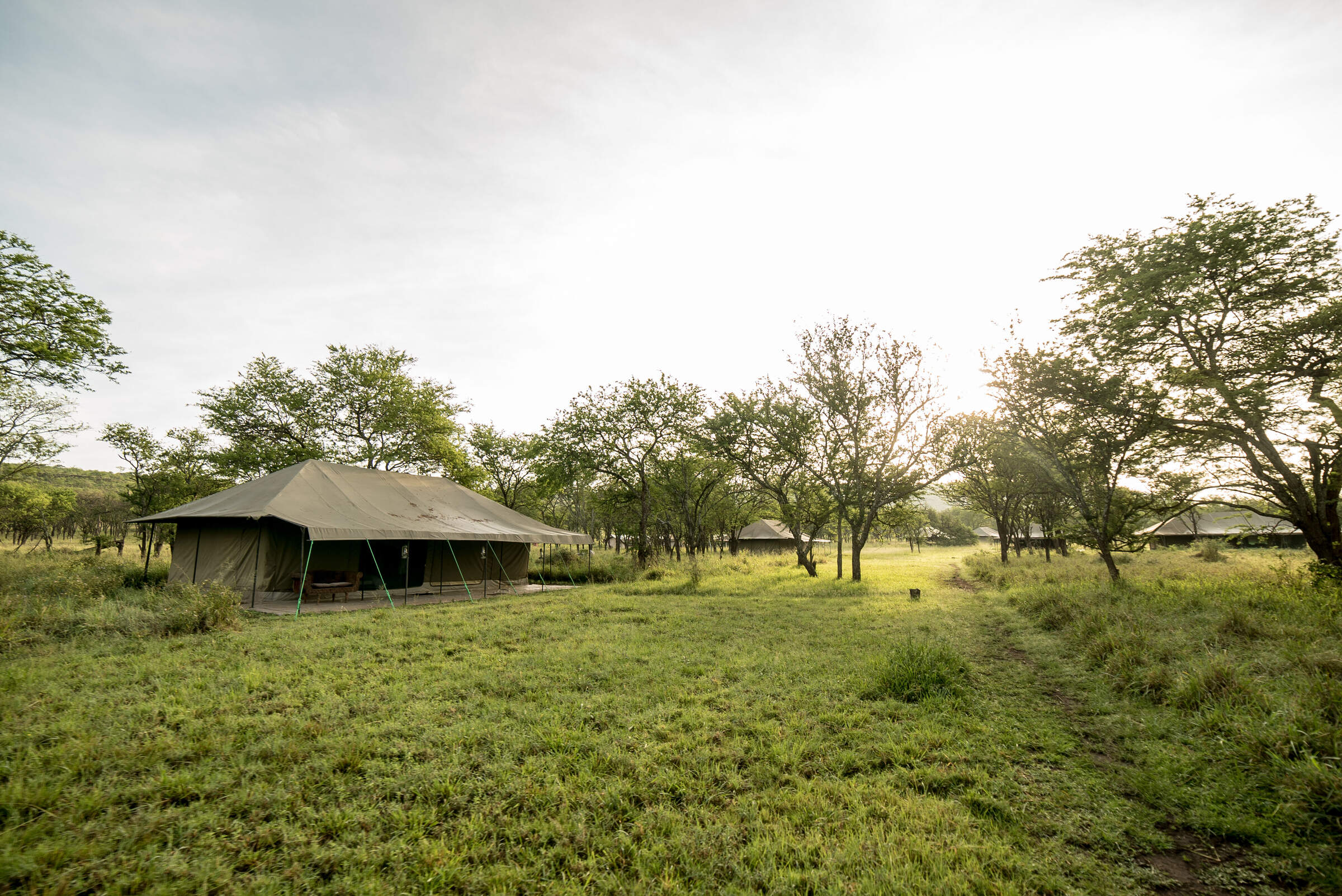
Nasikia Naona
Naona Camp is a small tented camp, located in the Moru Kopjes, west of the Serengeti central area
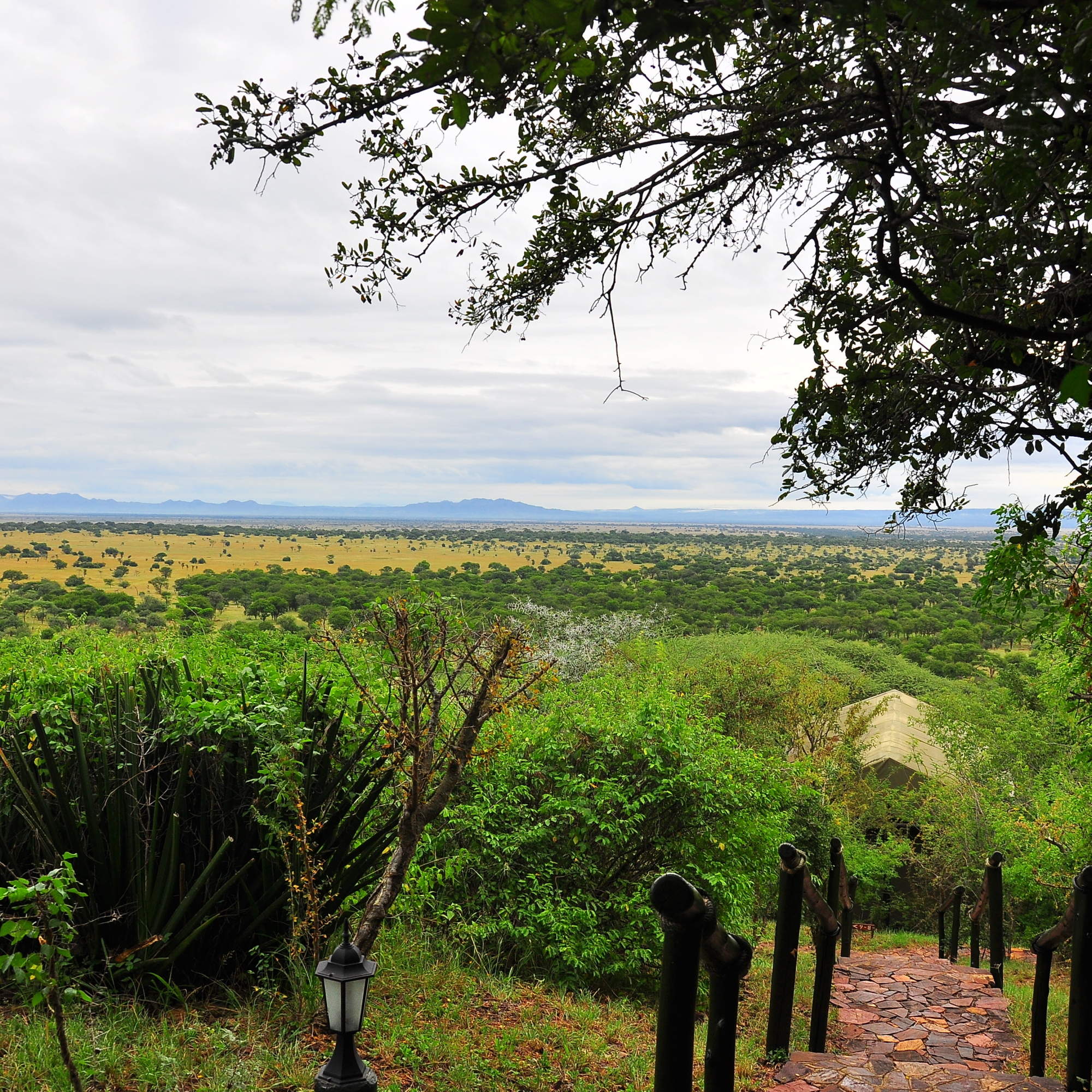
Kirawira Camp
Set high on a hill, in the Serengeti's western corridor, Kirawira is a relatively large tented camp in the Serena group.
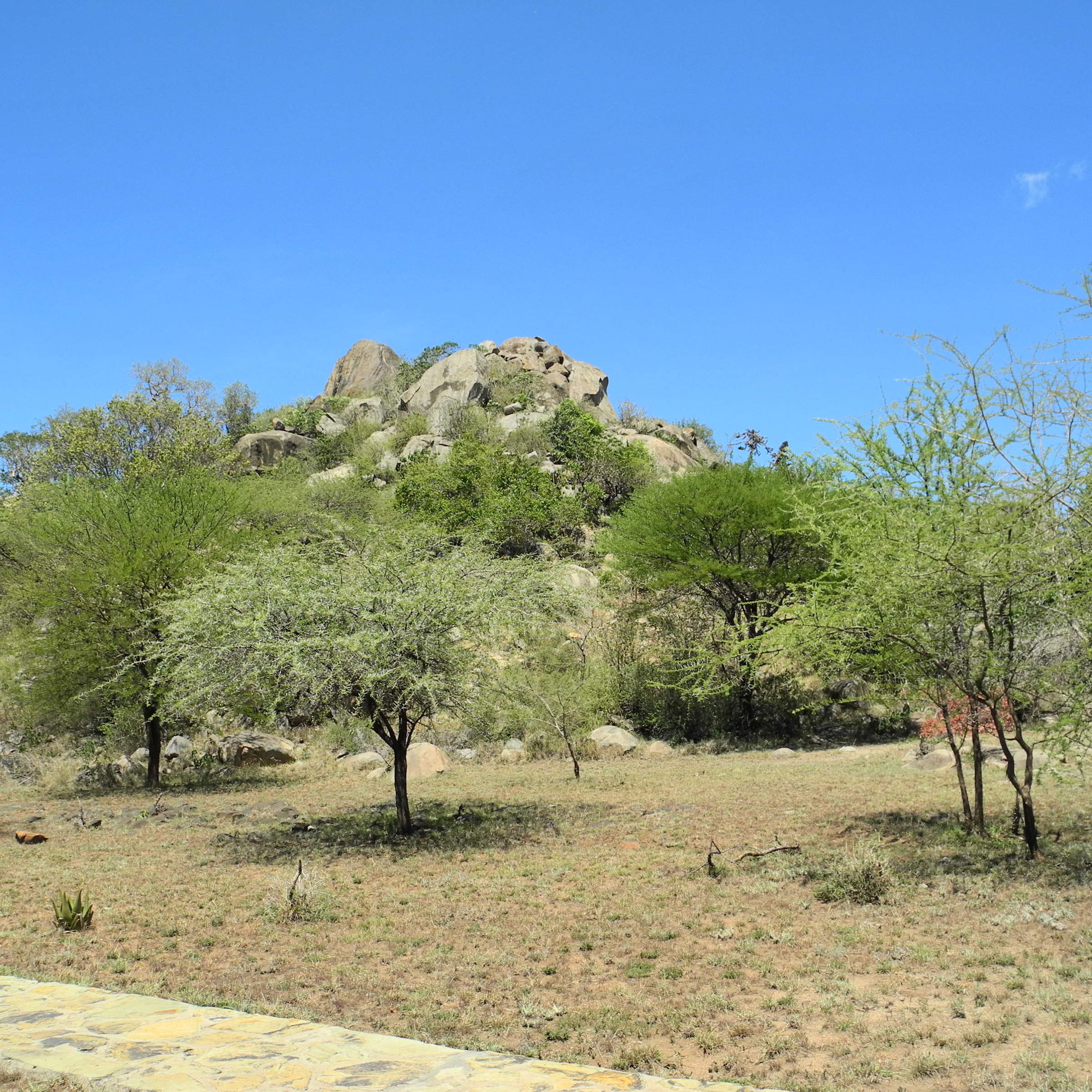
Mbuzi Mawe
Mbuze Mawe is a comfortable tented camp in a convenient, central-north location when driving through the Serengeti.
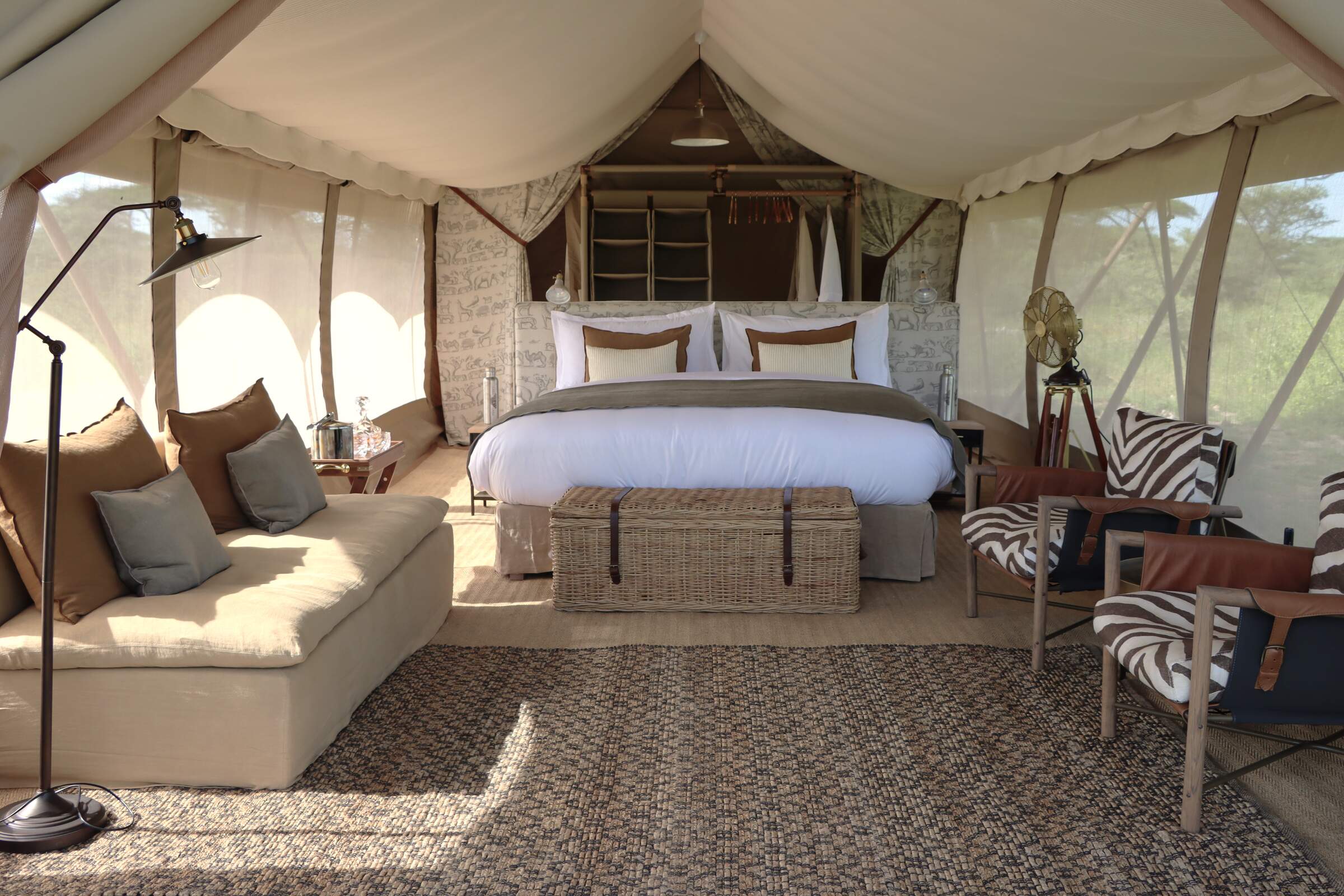
Laba Migration Camp
A luxury mobile camp that moves between the Western Corridor, Mara River and the southern Ndutu area, in line with the wildebeest migration.
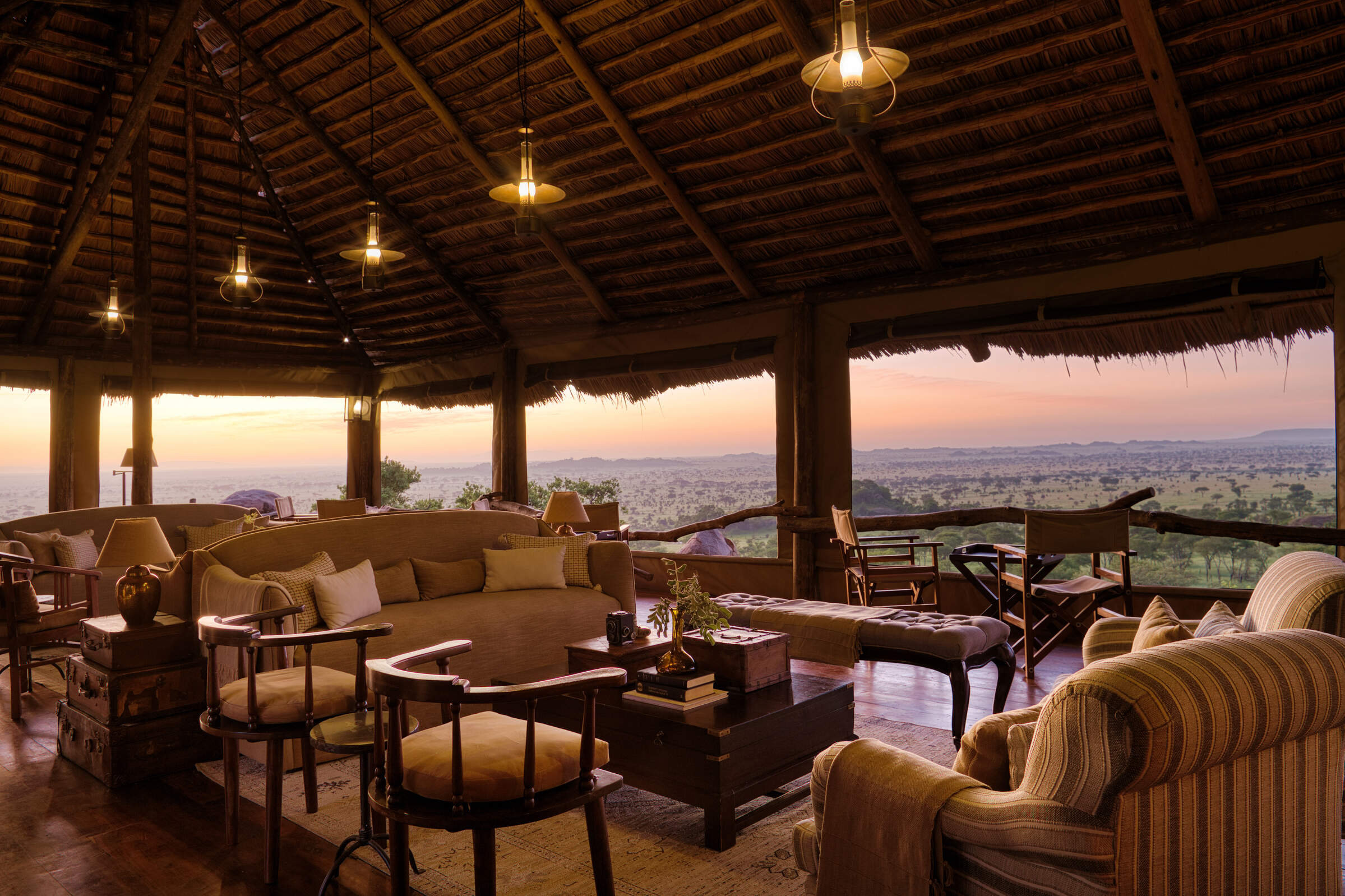
Serengeti Pioneer Camp
Serengeti Pioneer Camp is a luxurious tented camp in the central Serengeti, styled on African explorers' camps of the early 20th century.
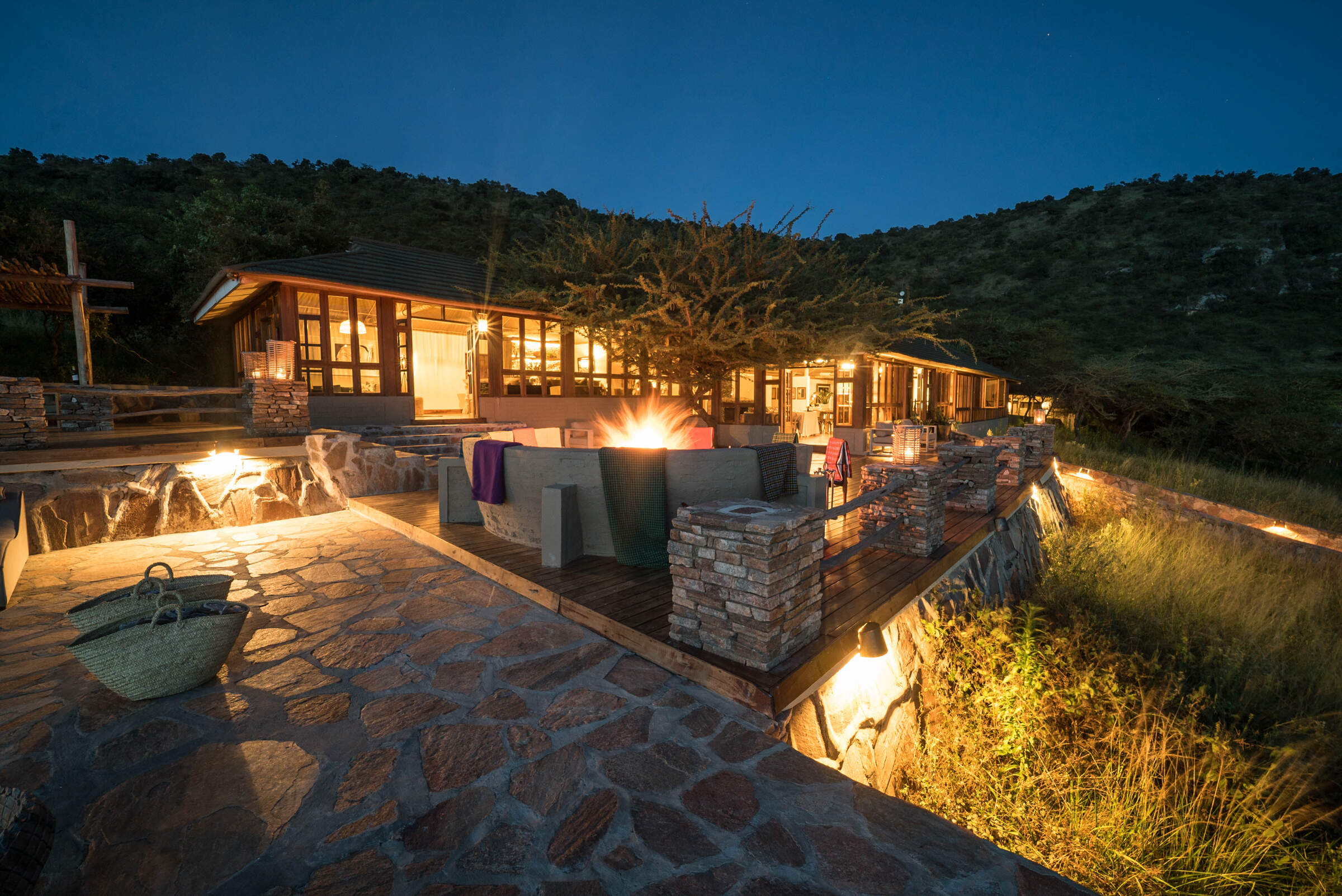
Taasa Lodge
Taasa Lodge is a slightly quirky option offering guided walks and night game drives, which are not permitted in Serengeti National Park.
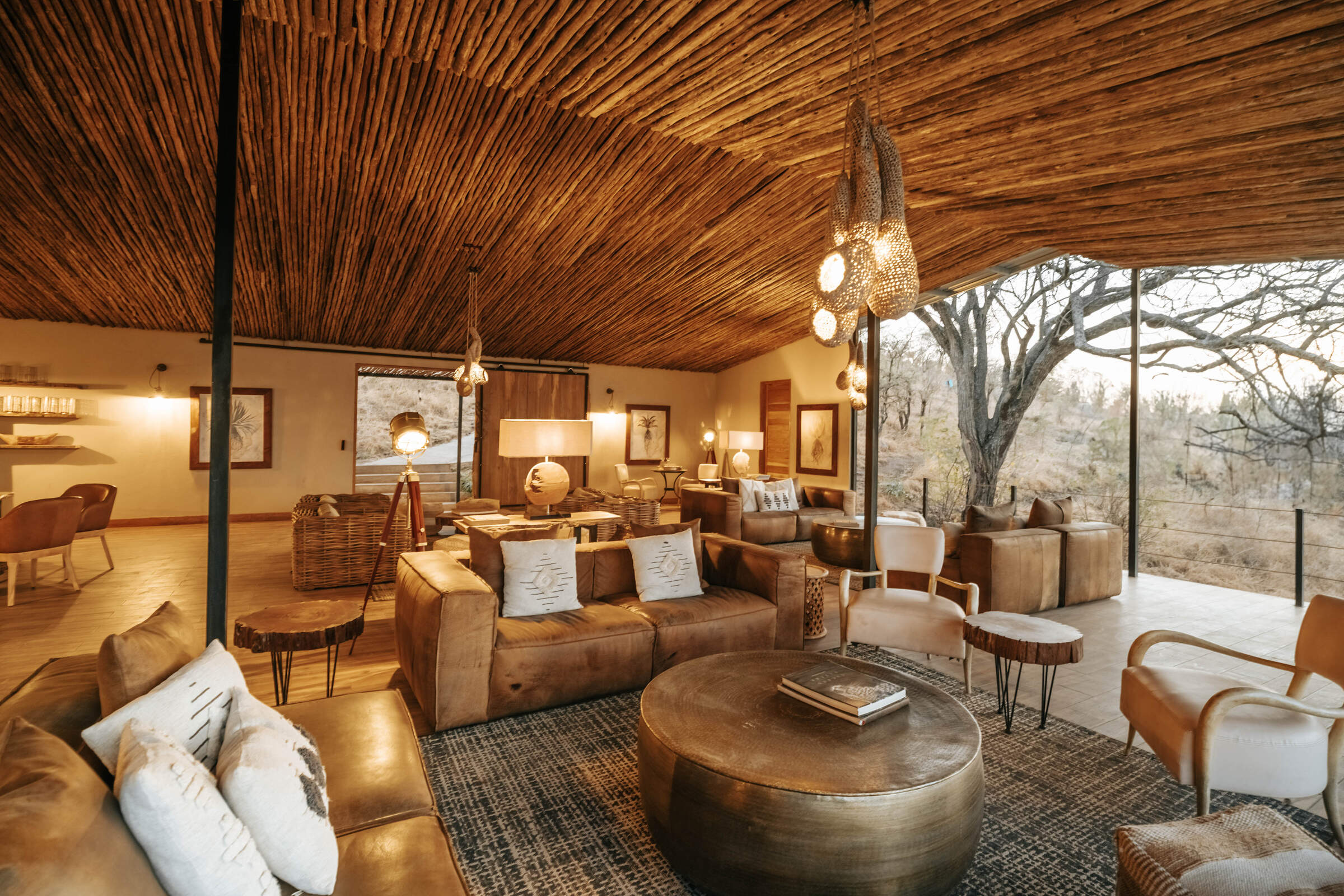
Nimali Serengeti
Opened in July 2017, Nimali Serengeti is a smart, permanent tented camp located in the Seronera area of the central Serengeti.
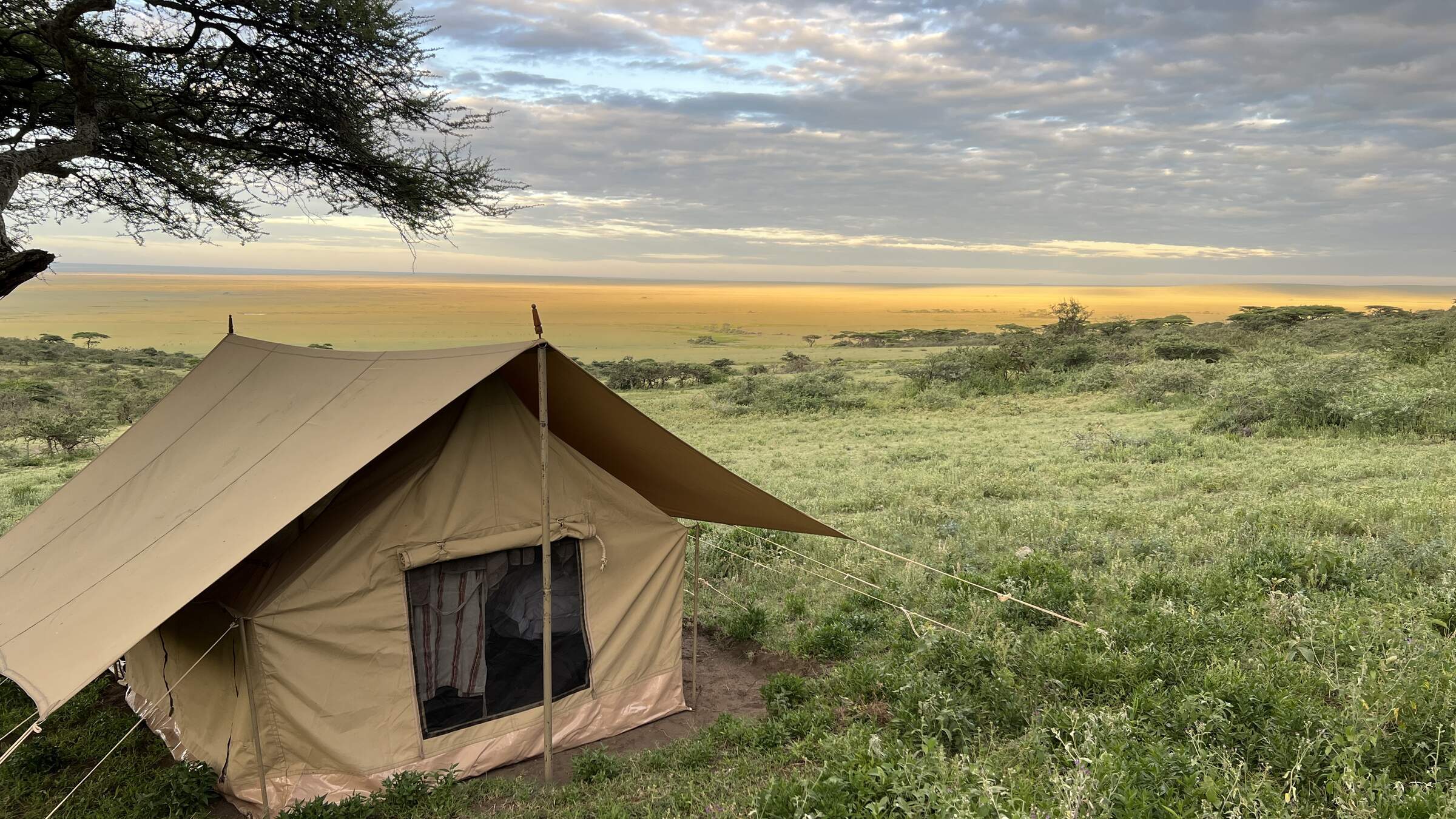
Nomad Walking Camp
Nomad Expeditionary Walking Camp is a simple camp of up to three tents, plus infrastructure, that changes location to allow guests to do substantial walks between campsites.
When to go to Serengeti Migration Area
Our month by month guide: What it's like to visit Namiri Plains Camp in Serengeti Migration Area
Jan
Feb
Mar
Apr
May
Jun
Jul
Aug
Sep
Oct
Nov
Dec
Serengeti Migration Area in January
January marks the start of the Serengeti’s short dry season. In the southern plains, the wildebeest calving season takes centre stage, drawing both predators and eager wildlife enthusiasts. The weather is generally clear and sunny, with rising temperatures, though occasional rainfall may still occur in the southern areas. Birdwatching is particularly rewarding during this time, with resident species in their breeding plumage and migratory birds adding to the variety.
The far southern plains of Ndutu coupled with the central Seronera area remains a reliable choice for game viewing, with lions and cheetahs frequently sighted on the hunt. While the park can be busier early in the month due to New Year visitors, it often becomes quieter later, providing excellent value and a more peaceful experience. Patience may be needed during game drives, as some wildlife becomes more dispersed.
- Variable weather: clear, dry or rainy
- Thunderstorms may occur occasionally
- Prime birding season with migrant species
- Wildebeest gathering in southern Serengeti
- Busy early, quieter later in the month
Our view
A good time to visit, with pros & cons
Weather in January
Serengeti Migration Area in February
February in the Serengeti is hot, with daytime highs reaching around 33°C/91°F, but cooling down significantly in the evening and overnight. It's an excellent time to visit as the northern circuit is comparatively quieter than during peak seasons. The wildebeest calving season, typically occurring in a two-three week window in early-mid February, is a major attraction. Thousands of calves are born daily, attracting a significant number of predators, creating an intense yet fascinating spectacle.
Birdlife is equally vibrant, as migratory species from the northern hemisphere join the park's resident birds. The Ndutu region is especially active, hosting an abundance of wildlife. Hot air balloon safaris offer unparalleled views of the action below. Despite the midday heat, early morning game drives remain comfortable and highly rewarding.
- Hot and dry weather conditions prevail
- Wildebeest calving in southern plains
- Southern Serengeti busy for migration
- Lush, green landscapes across the park
- Ideal for wildlife photography
Our view
A very good time to visit
Weather in February
Serengeti Migration Area in March
March typically sees the arrival of the long rains in the Serengeti, though the exact timing can vary each year. With water becoming more plentiful, migratory animals begin to spread out, making wildlife spotting a bit more challenging in certain areas. The Seronera Valley remains a reliable choice for sightings, thanks to its consistent water sources.
The rains bring a dramatic transformation to the landscape, with lush greenery emerging across the plains, offering stunning photographic opportunities. Birdwatchers are in for a treat, as many species are in their vibrant breeding plumage. Although some mobile tented camps begin winding down operations in preparation for the next season, visitors can still enjoy the park’s quieter atmosphere and its renewed natural beauty.
- Hot with increasing humidity pre-rains
- Wildlife viewing varies as rains begin
- Park quieter with lower visitor numbers
- Excellent time for bird watching
- Green vegetation provides scenic backdrops
Our view
A good time to visit, with pros & cons
Weather in March
Serengeti Migration Area in April
April tends to be the wettest month in the Serengeti, with rainfall averaging around 250mm. The park is transformed into a verdant oasis, alive with birds, insects, and smaller wildlife. However, the dense vegetation can make spotting animals more difficult. Visitor numbers are at their lowest, allowing for a more exclusive safari experience and there can be some good emerald season bargains to be had.
The wildebeest migration typically begins slowly moving toward the Western Corridor, and patient travellers can witness fascinating sights such as newborn animals and predators on the hunt. Rising water levels make the Retina Hippo Pool particularly active. Birdwatching continues to be excellent, and many lodges offer reduced rates, making it an appealing time for those willing to brave occasional downpours.
- Heavy rains with impressive thunderstorms
- Some camps closed due to weather
- Lowest rates and fewest tourists
- Vibrant greenery, wildlife more dispersed
- Not ideal for general wildlife viewing
Our view
This is not a great time to visit
Weather in April
Serengeti Migration Area in May
As the month of May progresses, the rains start to taper off across the Serengeti and temperatures drop slightly. Visitor numbers remain low, and lodge rates are often highly competitive, making it a great time for more value-conscious travellers. The wildebeest migration usually still heading towards the Western Corridor, with some herds nearing the Grumeti River and others still milling around the central area of the park. Predator-prey interactions become more frequent as animals navigate the changing environment.
The Moru Kopjes region offers particularly rewarding wildlife encounters, including the chance to spot black rhinos. The park’s vegetation is at its lushest, providing breathtaking backdrops for photographers. Balloon safaris during this time give a spectacular view of the green plains and migrating herds.
- Rains continue, creating dramatic skies
- Quiet period, great for avoiding crowds
- Lush landscapes with long grasses
- Wildlife more dispersed, fewer sightings
- Affordable safari options available
Our view
This is not a great time to visit
Weather in May
Serengeti Migration Area in June
June signals the end of the rainy season in the Serengeti, with the landscape beginning to dry out. Wildlife starts to gather around permanent water sources, and the Grumeti River becomes a key location for dramatic river crossings. Before the wildebeest migration heads north, the Western Corridor remains a hub of activity.
Many camps will offer shoulder season rates in June, meaning that this is also a more affordable time to visit than later in the year. The Lobo Valley in the north also becomes a productive area for wildlife viewing. With shorter grasses and clearer conditions, June is an excellent time for walking safaris in designated areas. The balance of good weather, exciting wildlife action, and moderate tourist numbers makes it a great month to visit.
- Weather varies: clear, dry or some rain
- Migration moving from west to north
- Parks still green with high grasses
- Wildlife becoming more concentrated
- Good value shoulder season prices
Our view
A good time to visit, with pros & cons
Weather in June
Serengeti Migration Area in July
July is the start of peak season in the Serengeti, with little to no rainfall expected and pleasant daytime temperatures. As the park dries, wildlife congregates in fewer areas, improving game viewing opportunities. The wildebeest migration typically reaches the northern Serengeti, with herds beginning to cross the Mara River. This spectacle draws many visitors, making the northern areas busier.
The Seronera area remains excellent for big cat sightings. In the western corridor, resident game becomes easier to spot as vegetation thins. Balloon safaris are particularly popular this month, offering breathtaking views of the migrating herds. Despite the crowds, July offers some of the year's best wildlife viewing opportunities across the park.
- Dry days, chilly mornings and evenings
- Excellent wildlife viewing opportunities
- Peak season with increasing visitor numbers
- Highest prices due to prime conditions
- Great Migration in full swing
Our view
Fantastic: the very best time to visit
Weather in July
Serengeti Migration Area in August
August in the Serengeti is characterised by clear skies and sunny weather, though cooler nights and mornings call for layered clothing for early morning game drives. It's an extremely popular time to visit, with accommodation prices at their peak. The northern Serengeti is particularly busy as visitors hope to witness migration river crossings – with the Mara and Sand rivers becoming focal points for dramatic wildlife interactions.
In the central Serengeti, predator sightings remain good around the Seronera River. The park's southern regions are now much drier, home to excellent resident game and now fewer visitors. Balloon safaris provide stunning aerial views of the landscape and wildlife. While August is a very busy time, the consistent wildlife activity and reliable weather make it a fantastic month to visit.
- Dry climate, cool mornings and evenings
- Superb general wildlife viewing
- Exciting wildebeest migration period
- Very busy, camps fill up quickly
- Dramatic river crossings may occur
Our view
Fantastic: the very best time to visit
Weather in August
Serengeti Migration Area in September
September continues the Serengeti’s dry season, with wildlife becoming increasingly concentrated around the few remaining water sources. The northern Serengeti still hosts the wildebeest migration, with river crossings at the Mara River offering dramatic predator-prey interactions. The Seronera Valley remains an excellent spot for sightings of resident predators, while the now-parched southern plains offer good chances to see cheetahs.
As the month progresses, visitor numbers begin to drop slightly, making it a quieter time to explore. Birdwatching remains rewarding, and walking safaris provide a more intimate wildlife experience. September’s pleasant weather and exceptional wildlife viewing make it a very good time to visit.
- Fantastic wildlife viewing conditions
- Slightly less crowded than peak months
- Parks becoming dry with less vegetation
- Pleasant temperatures throughout day
- Prices remain high for quality safaris
Our view
Fantastic: the very best time to visit
Weather in September
Serengeti Migration Area in October
October marks the tail end of the dry season in the Serengeti. Wildlife gathers around the last water sources, creating fantastic viewing opportunities. The Mara River may still see some migration activity, while the central Seronera region continues to deliver reliable predator sightings. In the western corridor, large herds of elephants are a highlight, and the dry southern plains can sometimes offer very good opportunities to spot cheetah.
Birdwatching is rewarding, with many resident species easily spotted. Balloon safaris offer breathtaking views of the parched landscape – though photographers need to be prepared for dusty conditions. Prices remain high, but visitor numbers are lower than in July-Sept, providing a more exclusive safari experience.
- Mostly dry with comfortable temperatures
- Excellent game viewing opportunities
- Landscape may appear somewhat barren
- Lower visitor numbers than earlier months
- Chance to see predator action at its best
Our view
A very good time to visit
Weather in October
Serengeti Migration Area in November
November usually signals the start of the short rains in the Serengeti. While lighter and more sporadic than the long rains, they rejuvenate the landscape with fresh grass growth. Wildlife begins to disperse as water becomes more readily available, but game viewing remains strong, particularly in the central Seronera area.
The wildebeest herds start their journey southward from the Mara region, creating opportunities for unique sightings. Birdwatching is excellent, with the arrival of migratory species adding to the variety. Some mobile camps in the north close temporarily, but those who visit in November can enjoy great value with lower rates and quieter conditions.
- Variable weather: clear, dry or rainy
- Parks quieter with lower-end prices
- Some camps close for maintenance
- Wildlife disperses as rains begin
- Migration movement less predictable
Our view
A good time to visit, with pros & cons
Weather in November
Serengeti Migration Area in December
December is a transition month in the Serengeti, falling within the short rainy season. The rains bring life to the southern plains, attracting the wildebeest herds and the predators that follow them. The Ndutu region becomes a focal point for wildlife activity.
Temperatures are comfortable, averaging around 27°C/81°F, with the possibility of occasional thunderstorms. Birdwatching is outstanding, with many migratory species adding to the diversity. Early December offers good value, with lower prices and fewer visitors, but the festive season sees a surge in demand, requiring early bookings. Balloon safaris provide stunning views of the rejuvenated landscape, making December an exciting time to visit the park.
- Weather varies: dry, rainy, or stormy
- Good game viewing in central Serengeti
- Quiet early, extremely busy late month
- Prices rise sharply for holiday season
- Green season begins, landscapes refresh
Our view
A good time to visit, with pros & cons
Weather in December

Looking for inspiration on where to travel next?
Visit our trip chooser to explore your options and find inspiration for your perfect African adventure
Inspire me